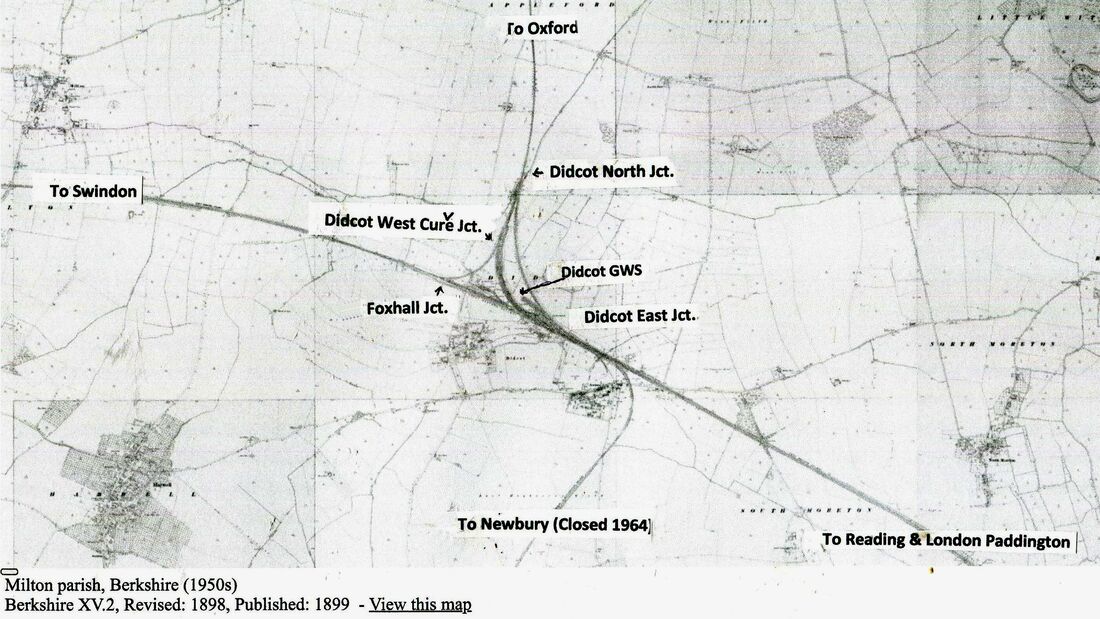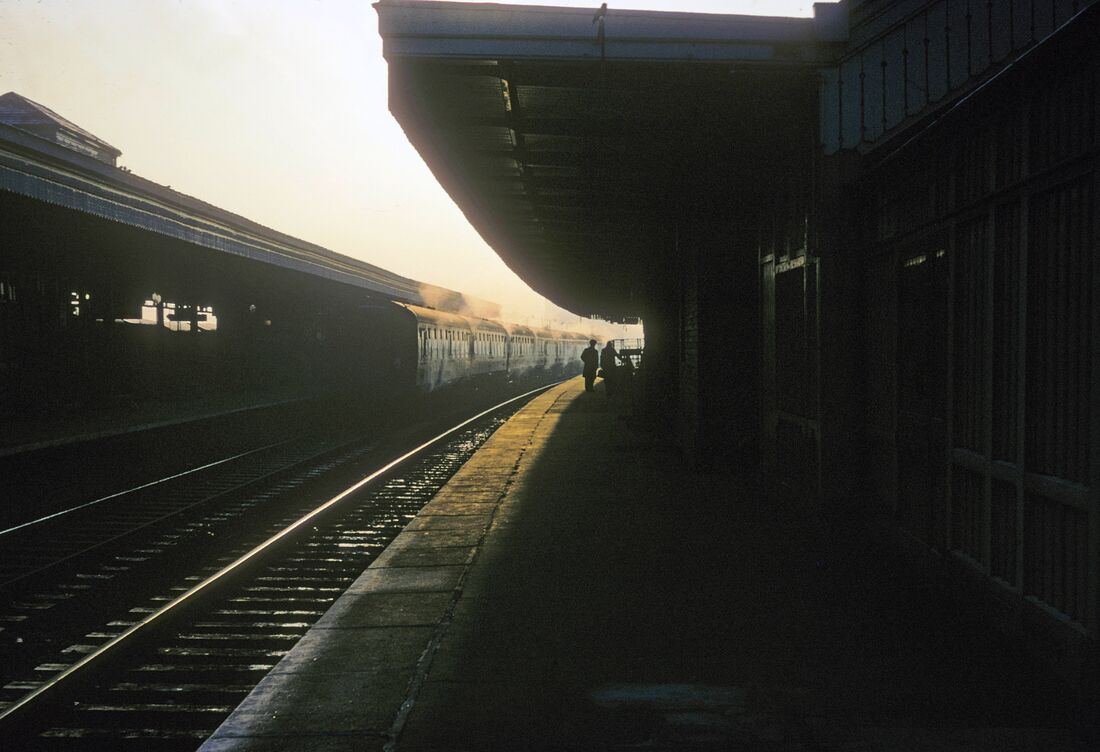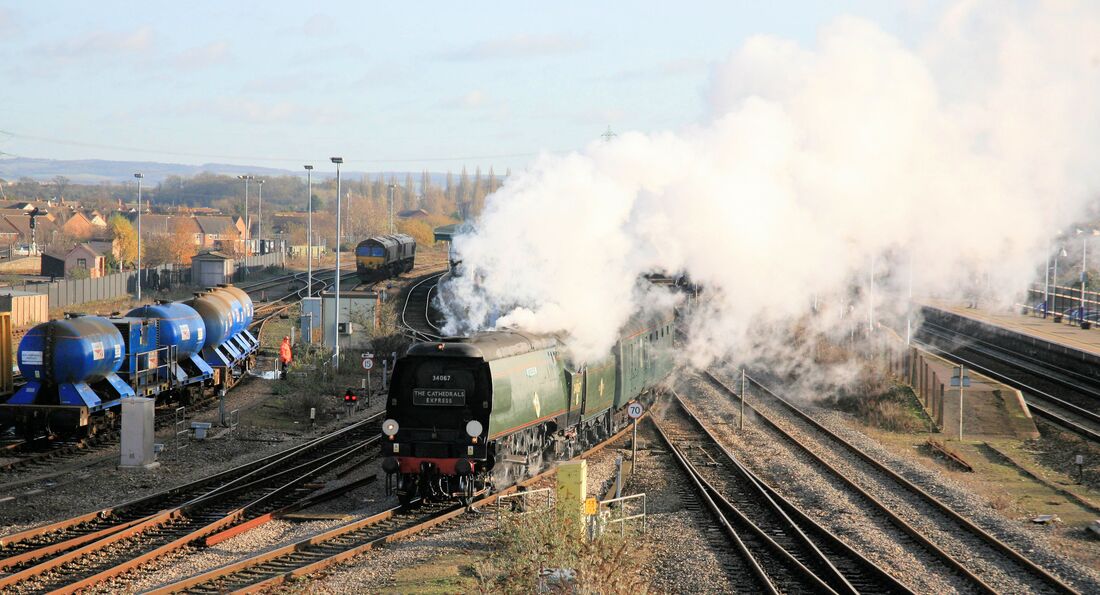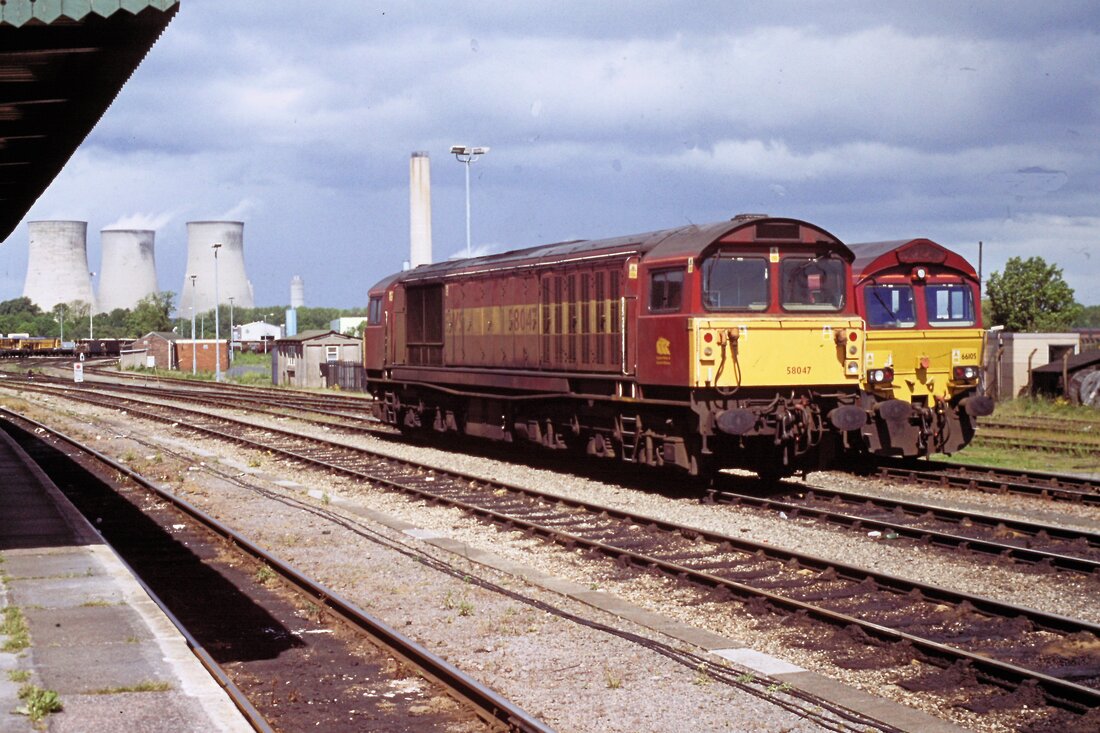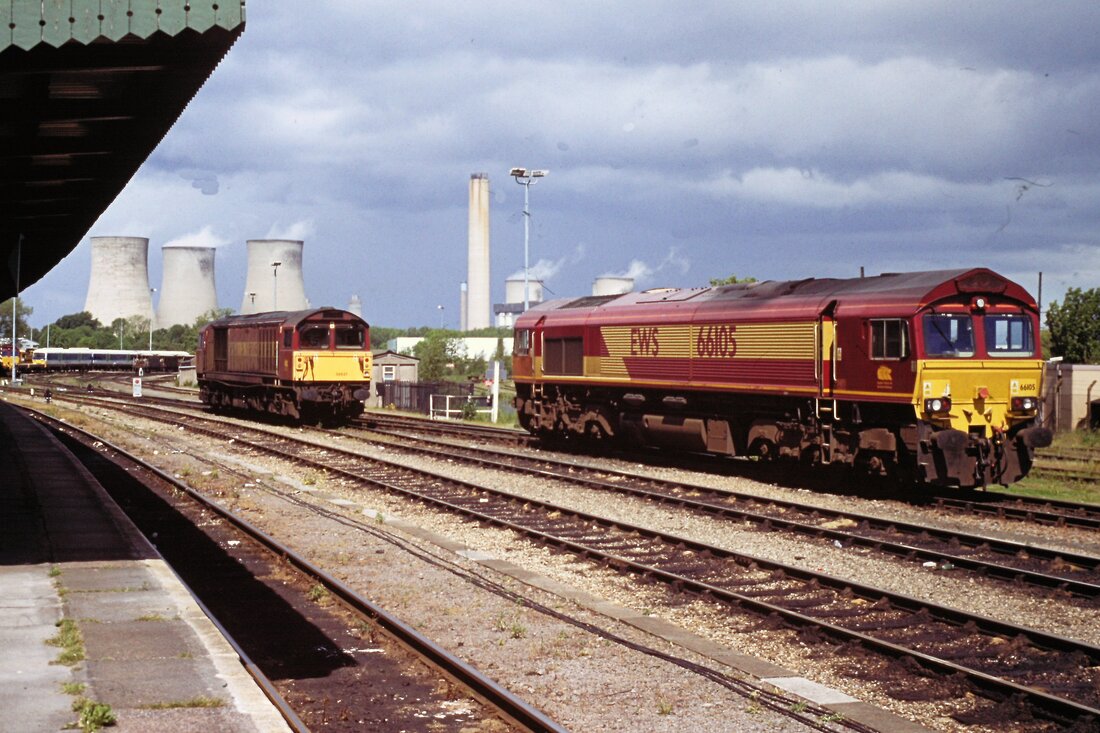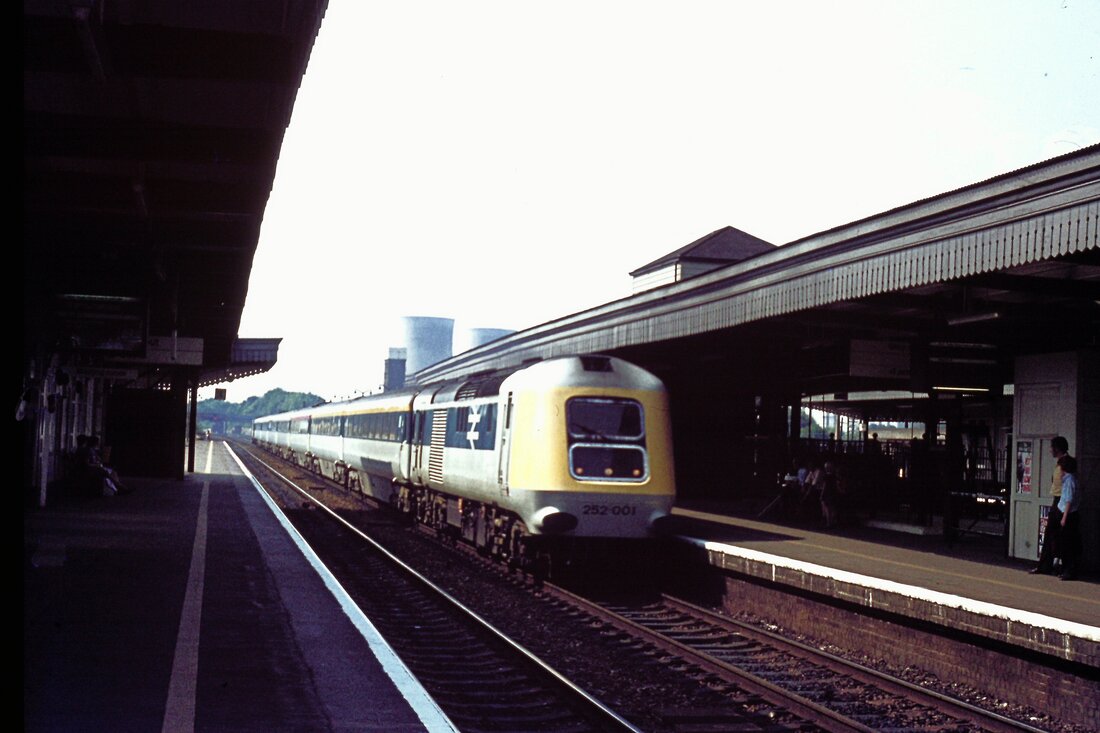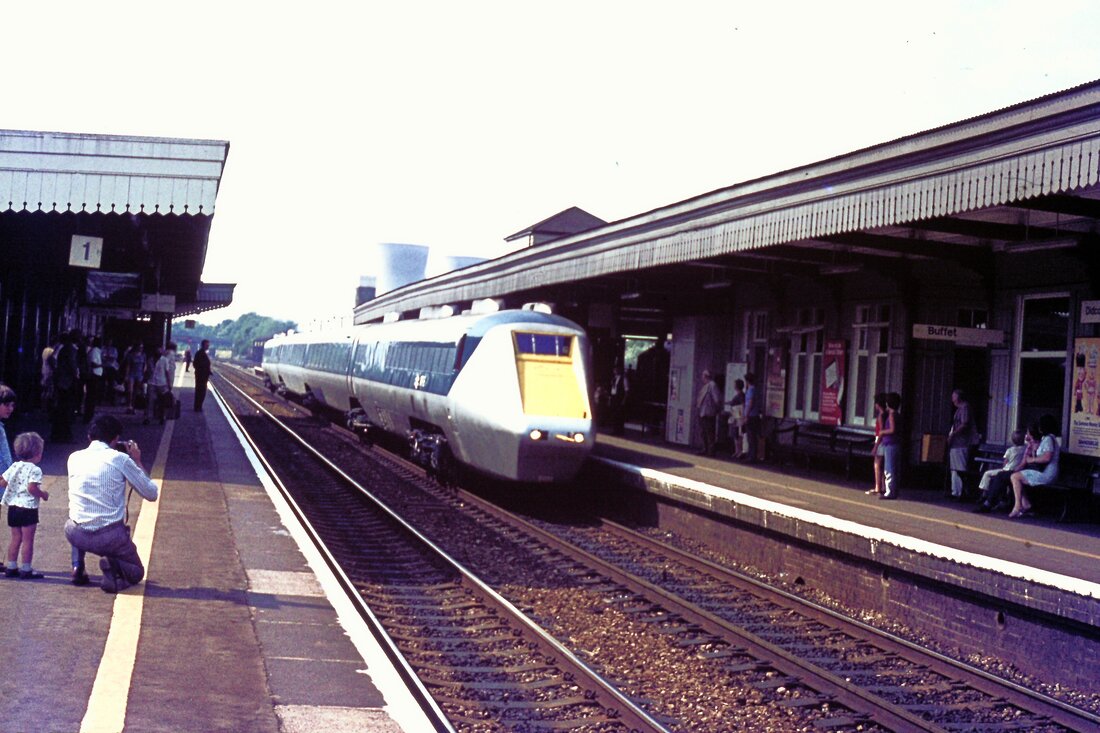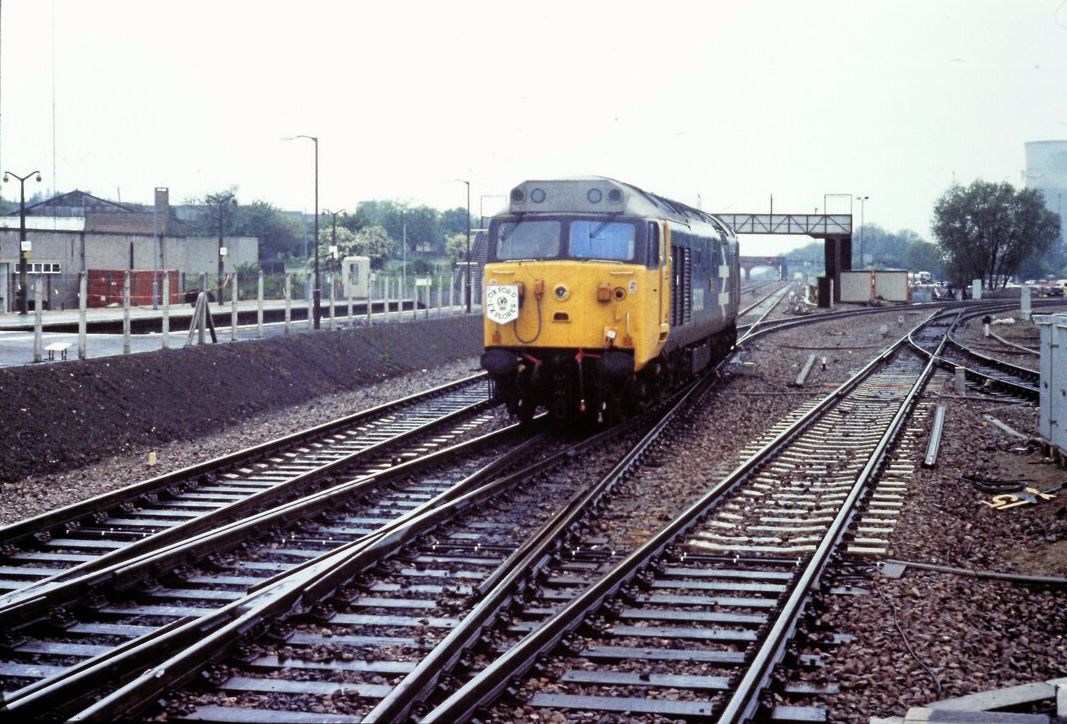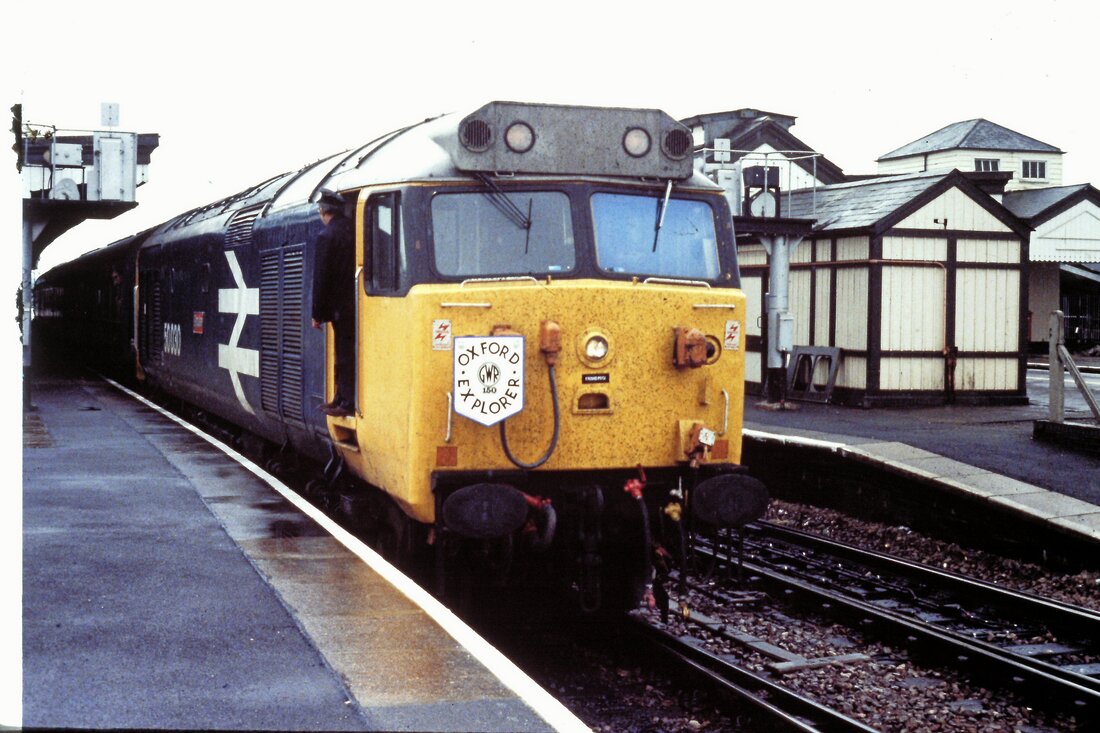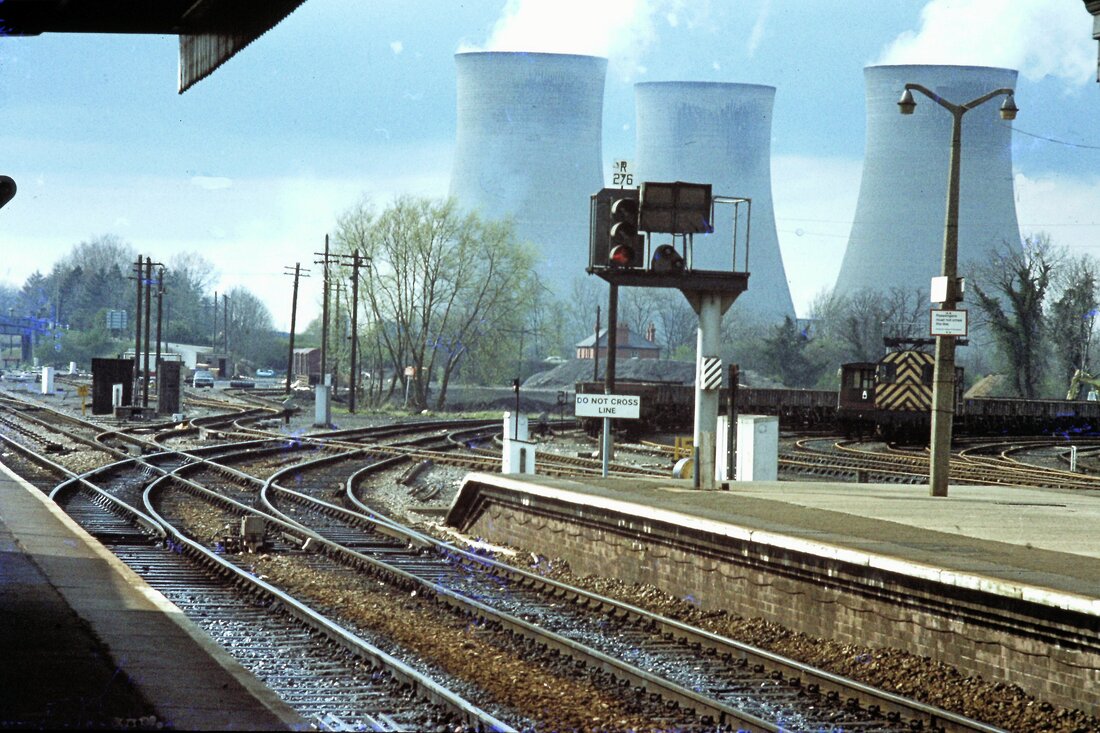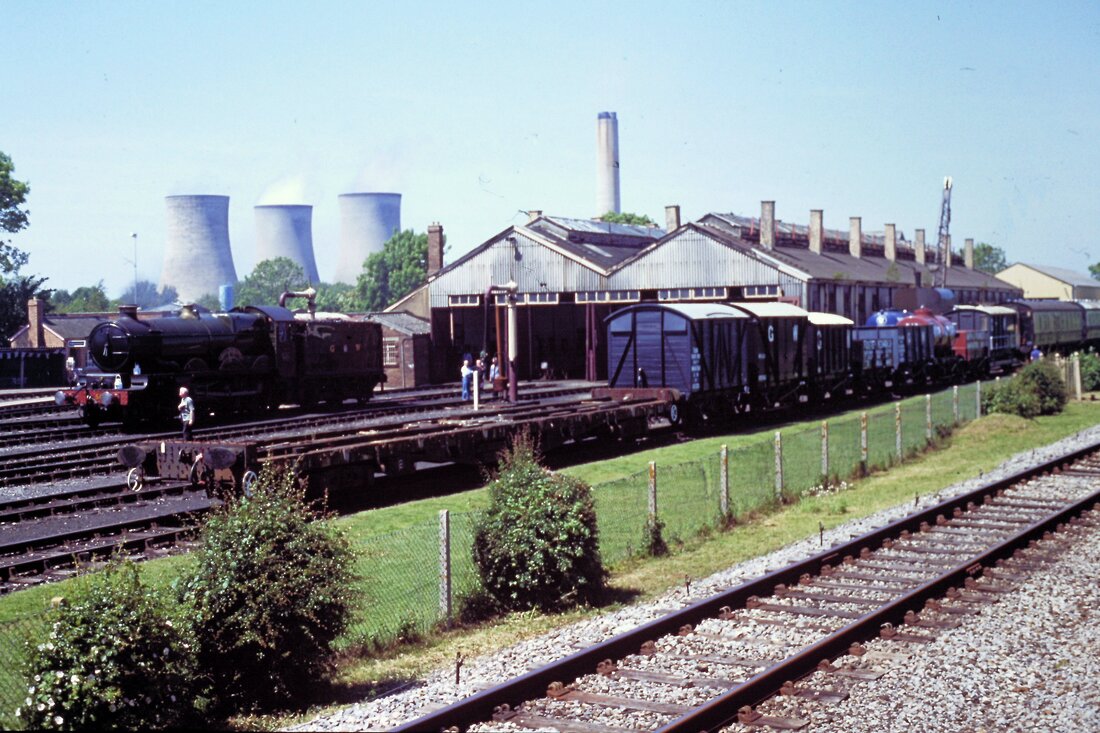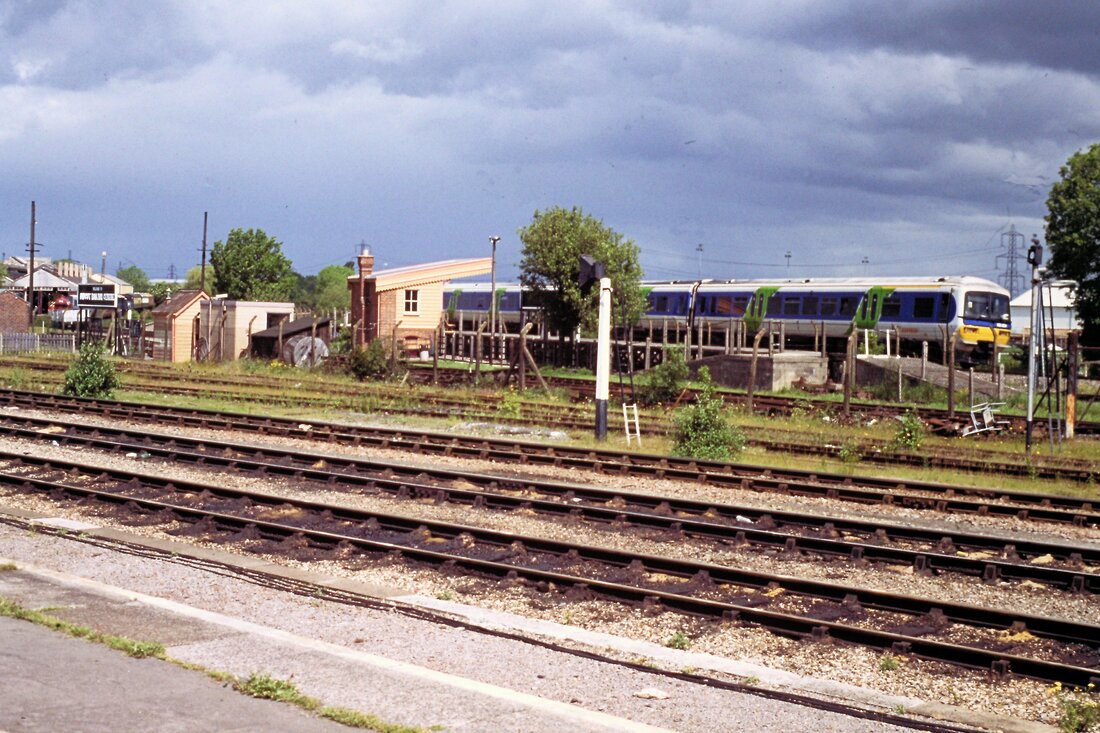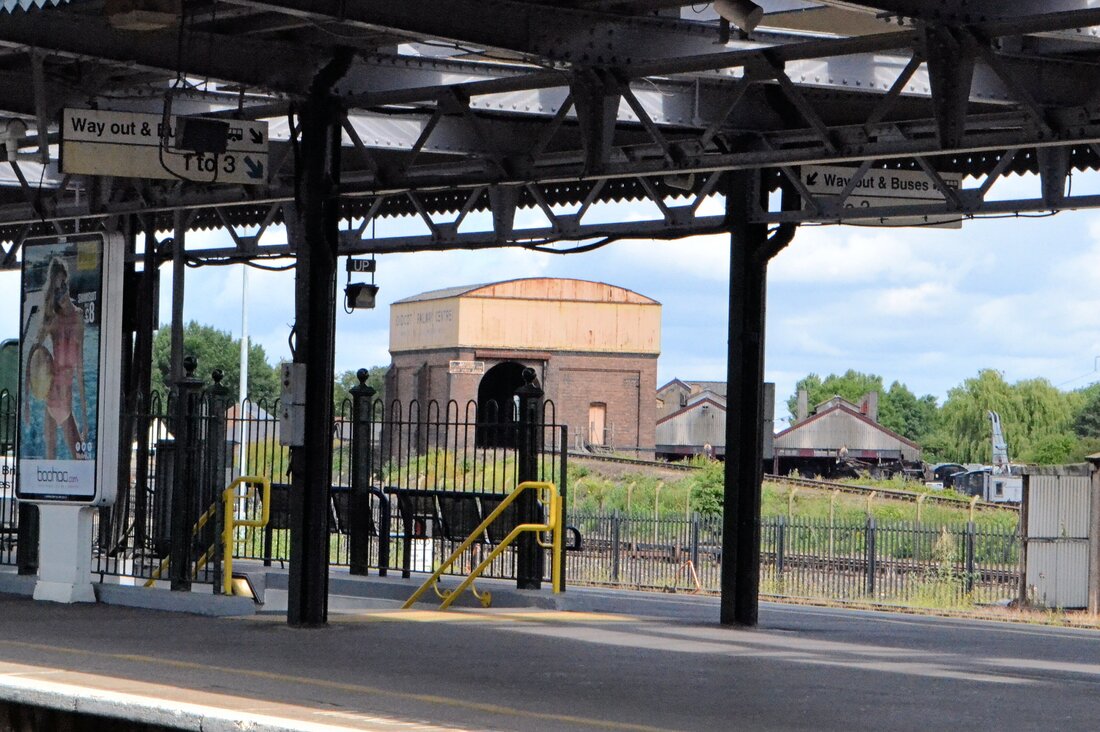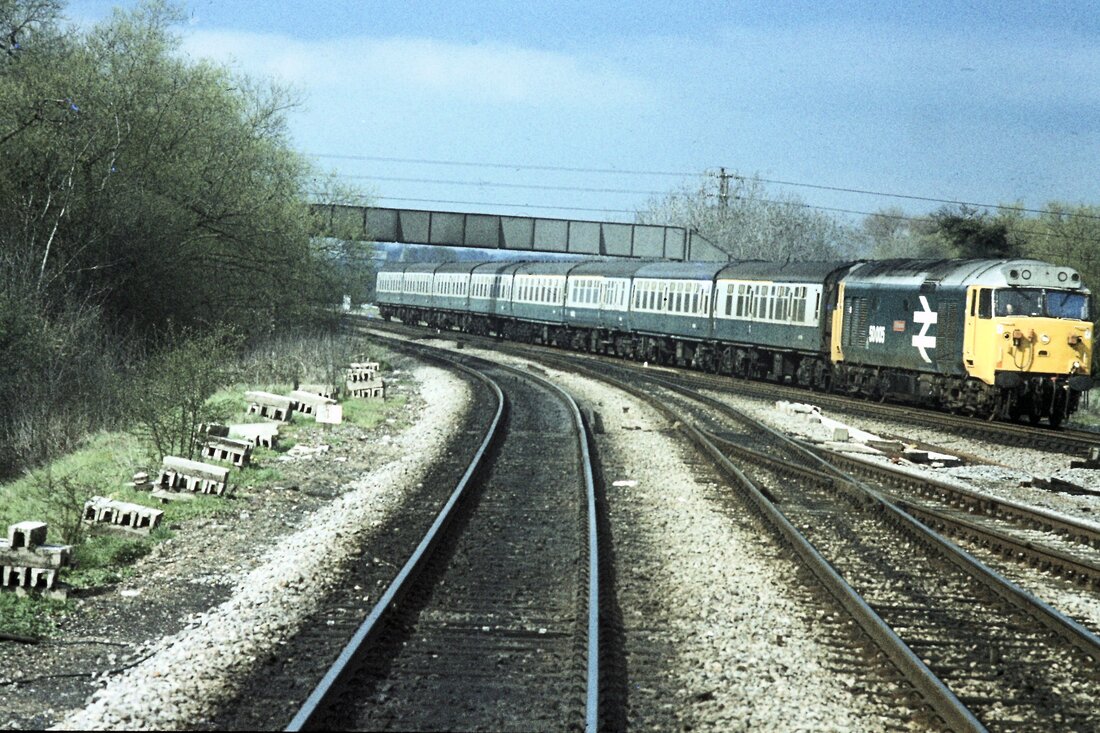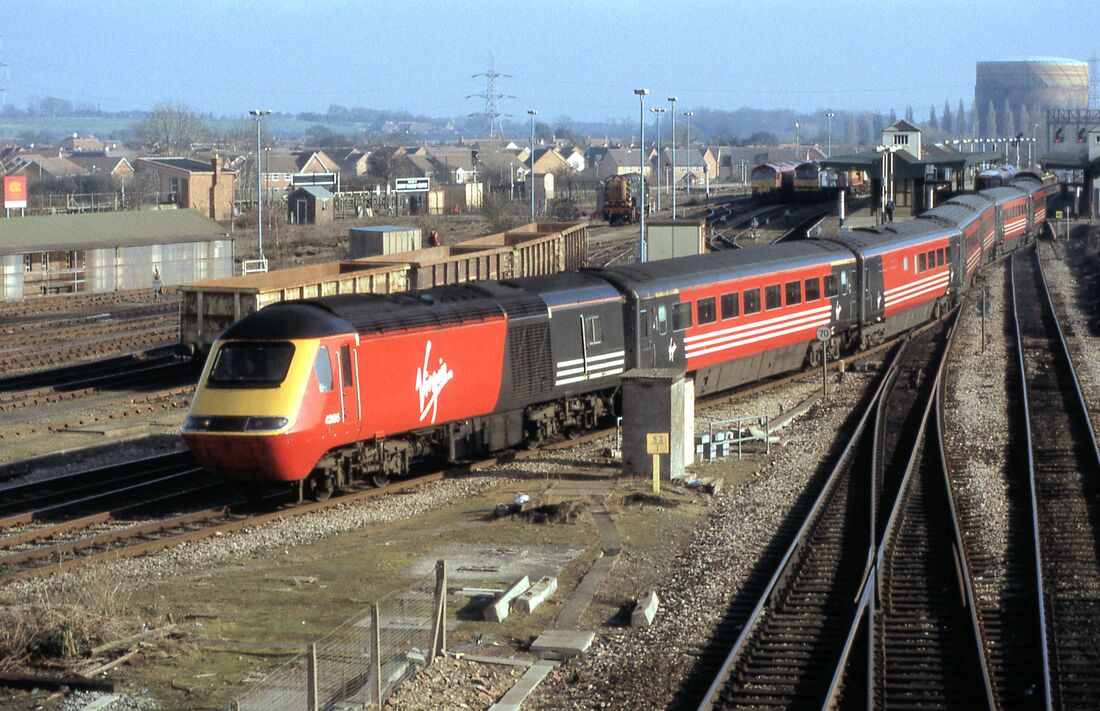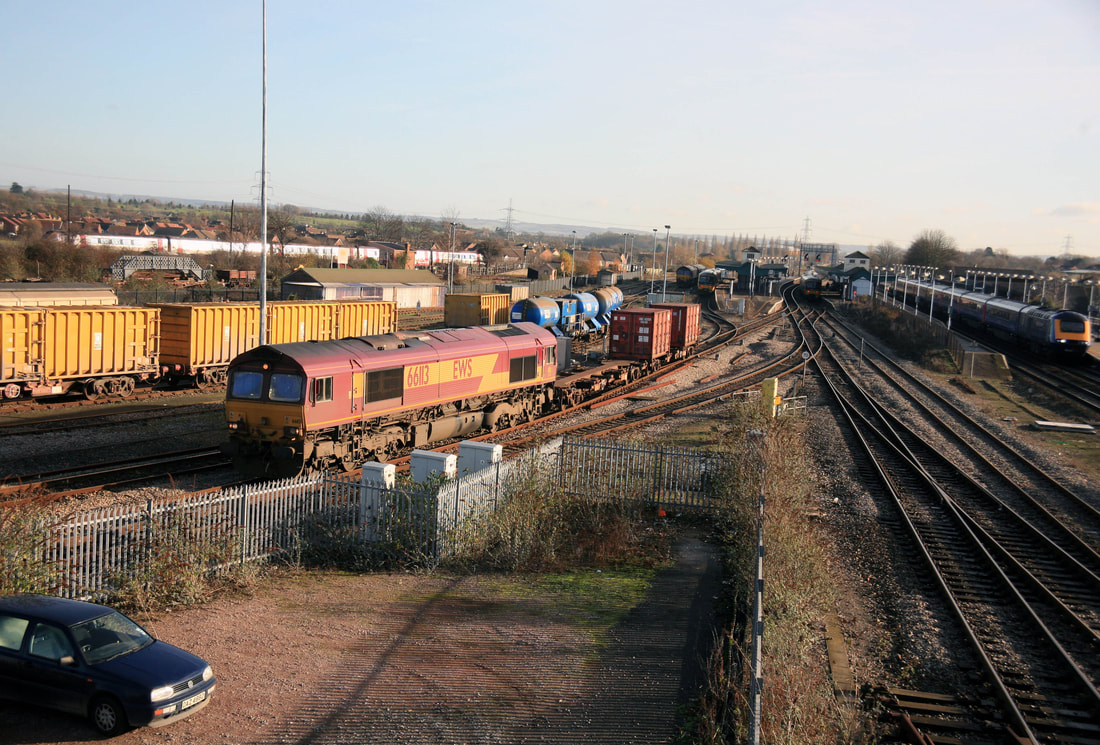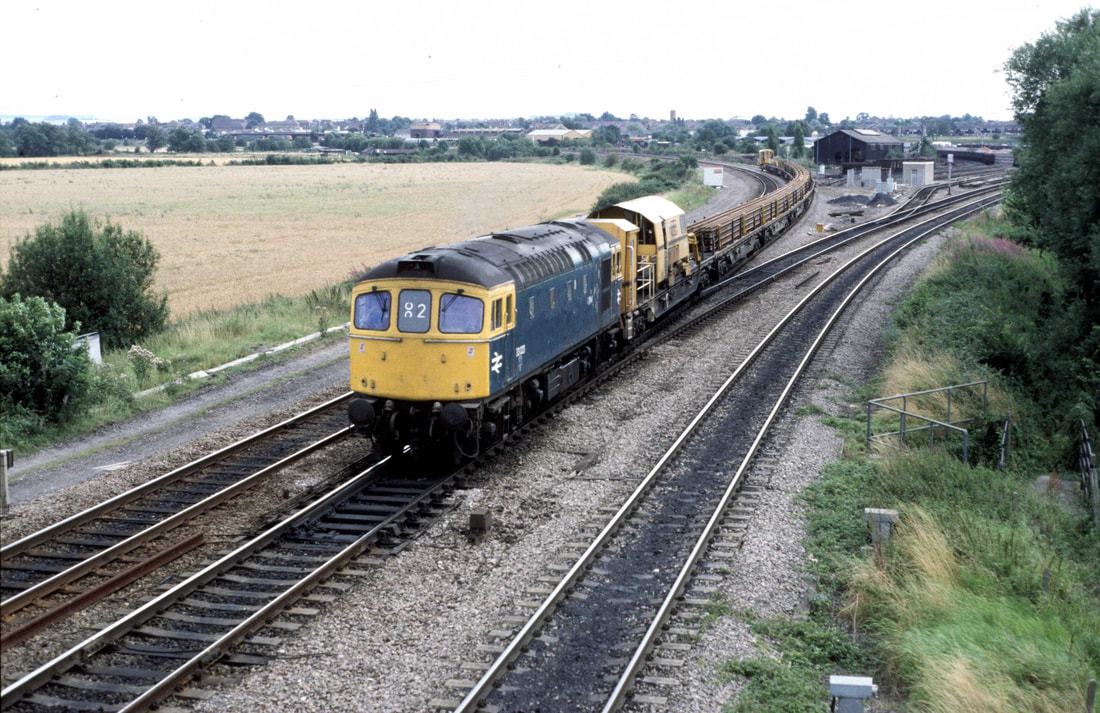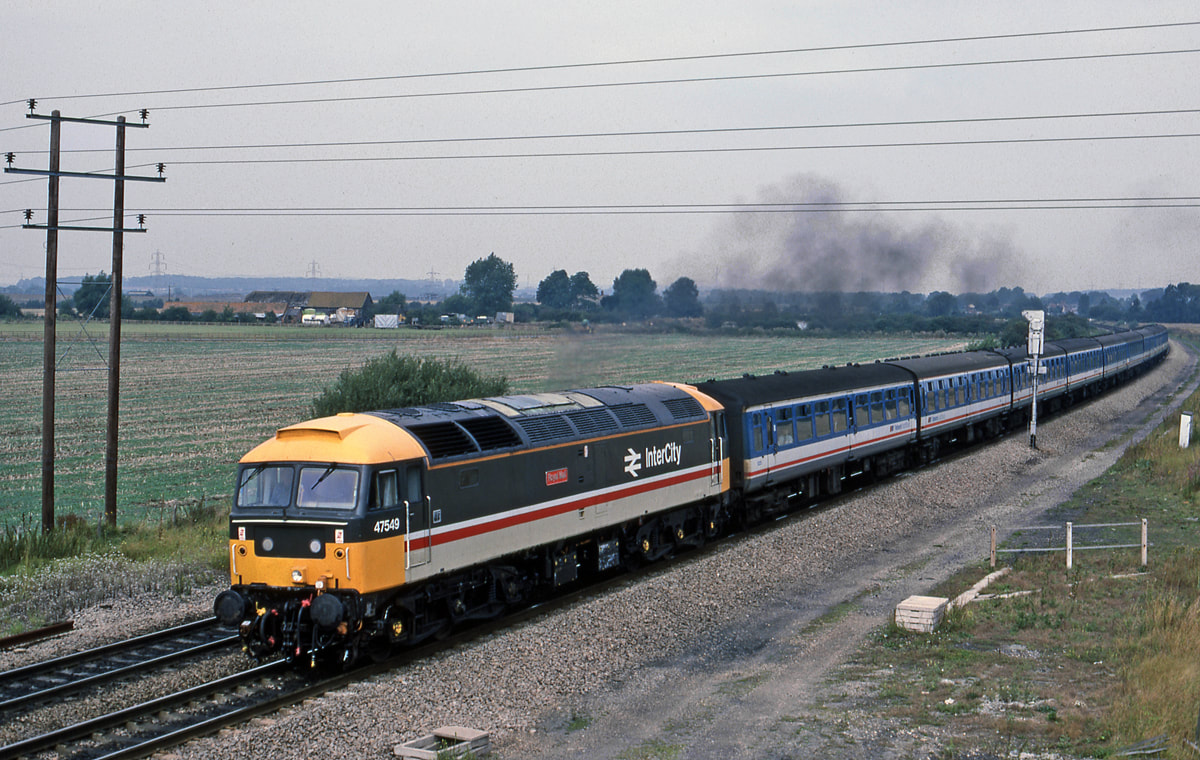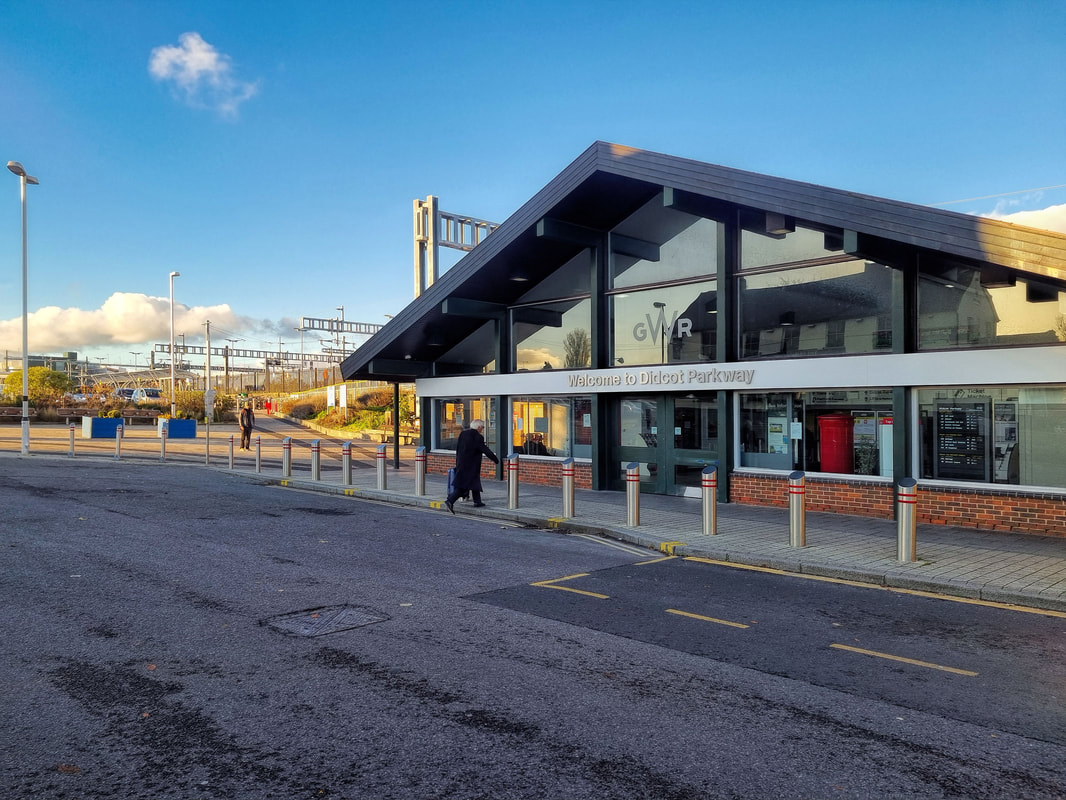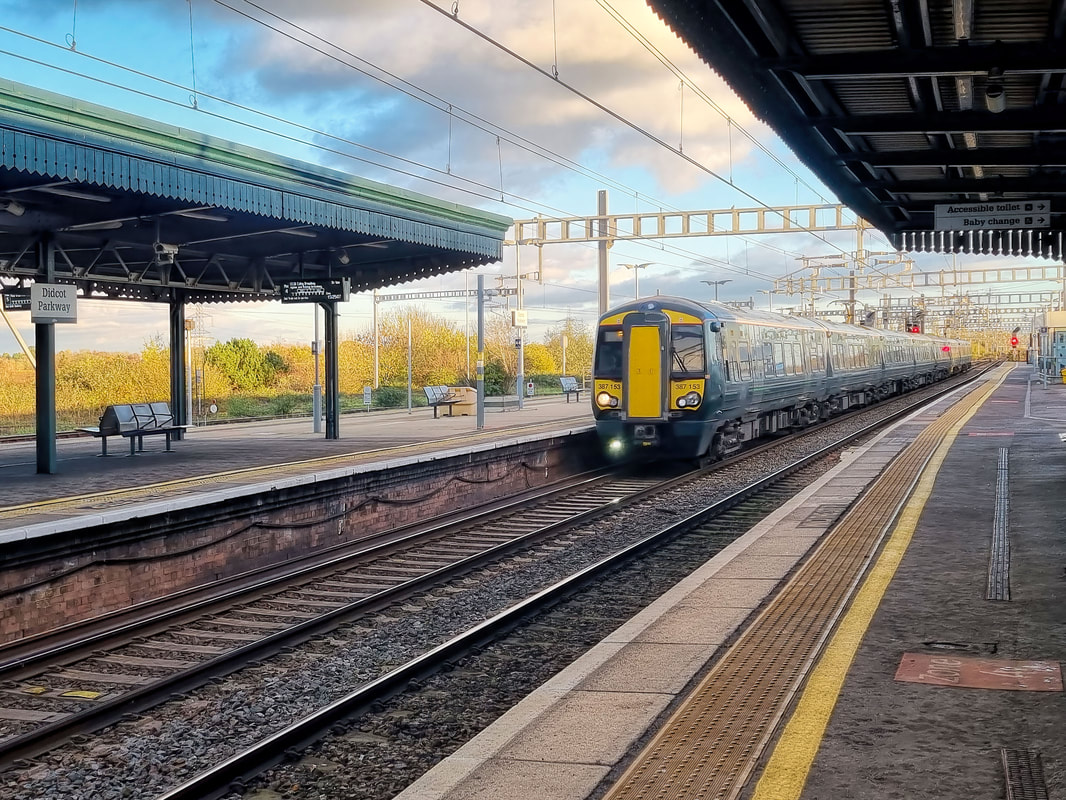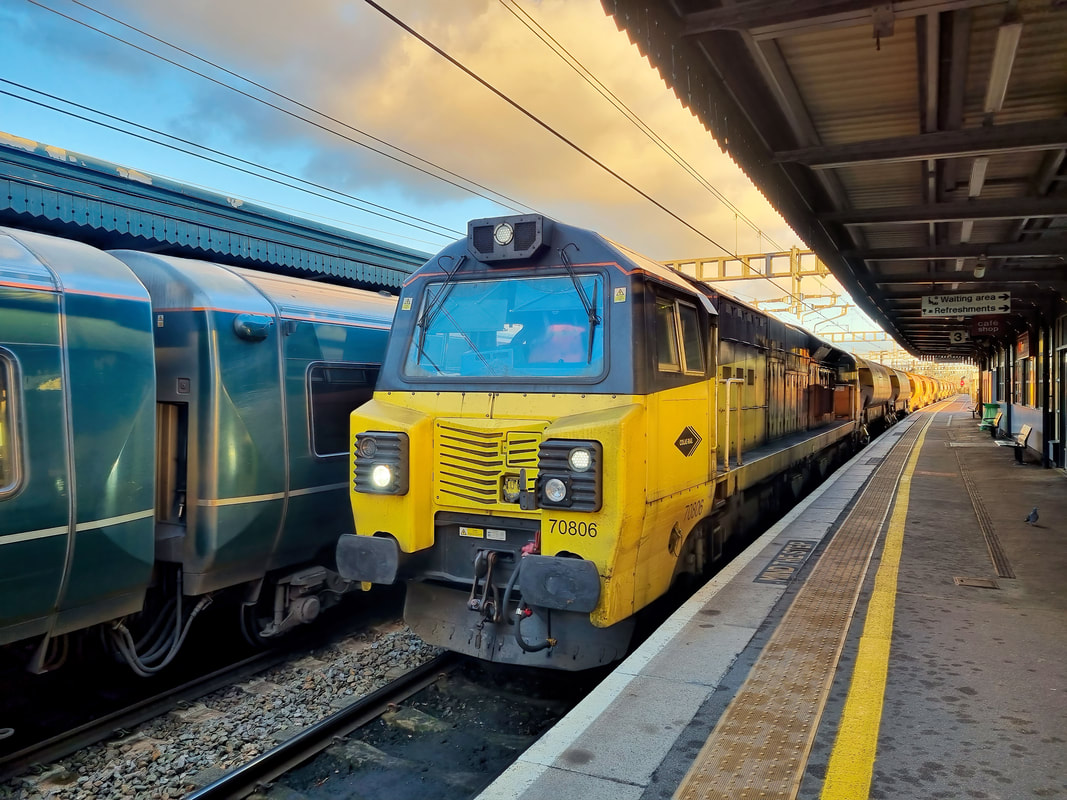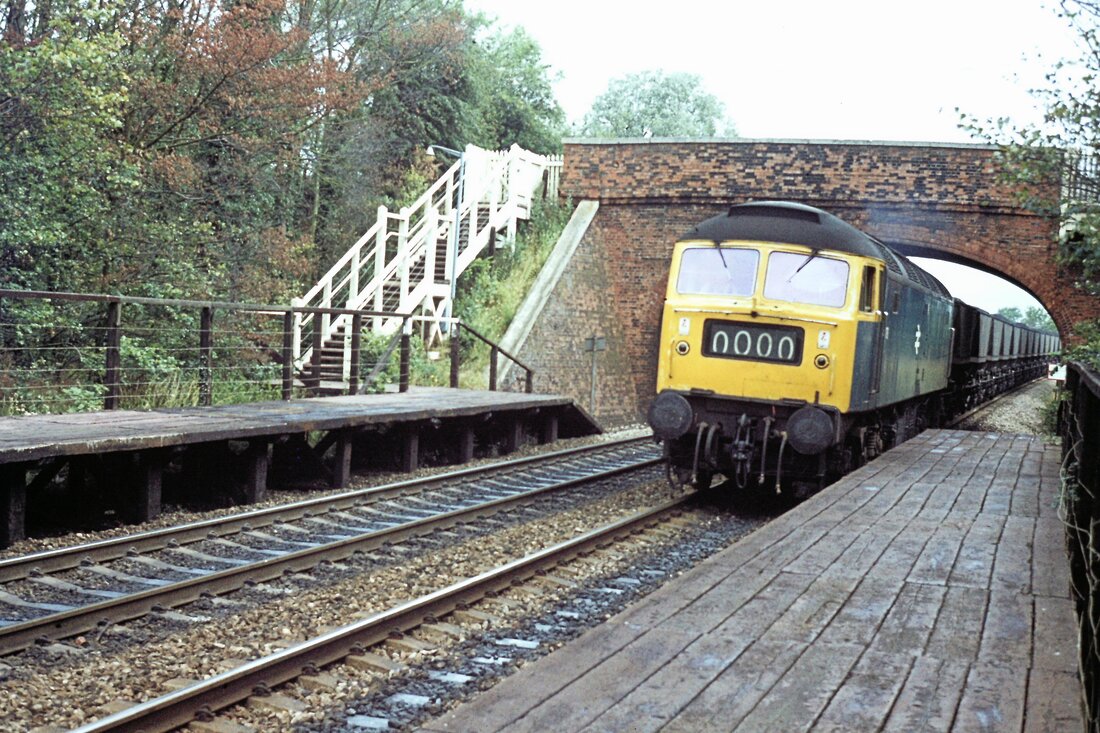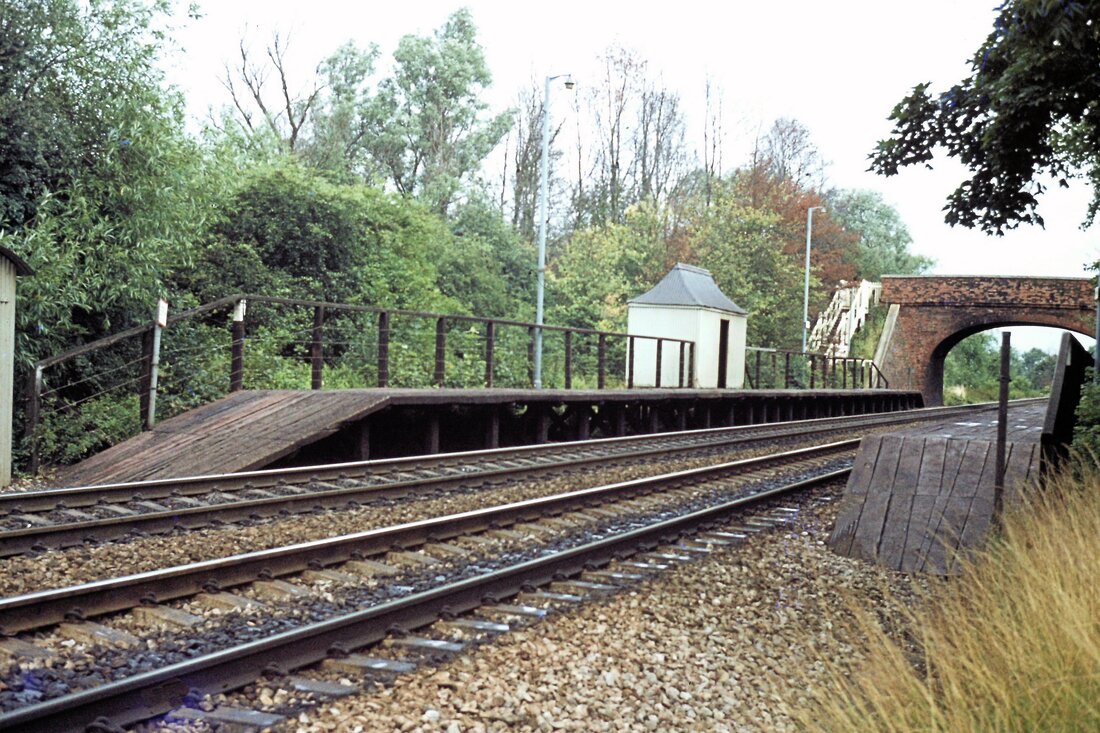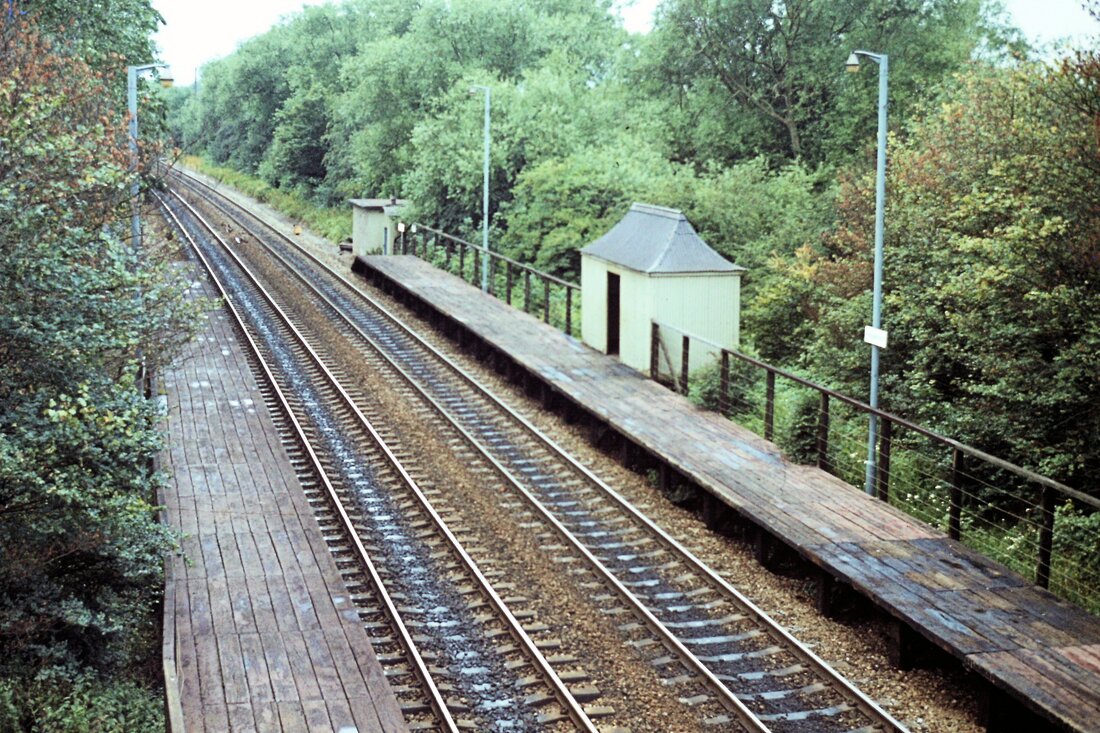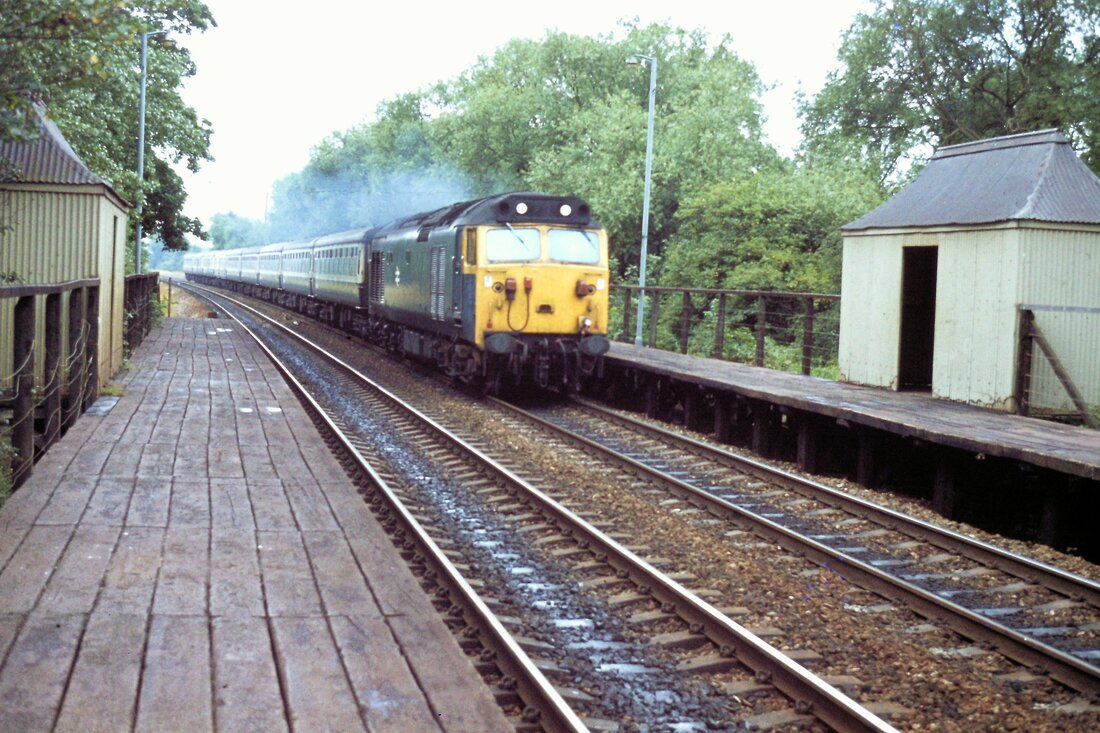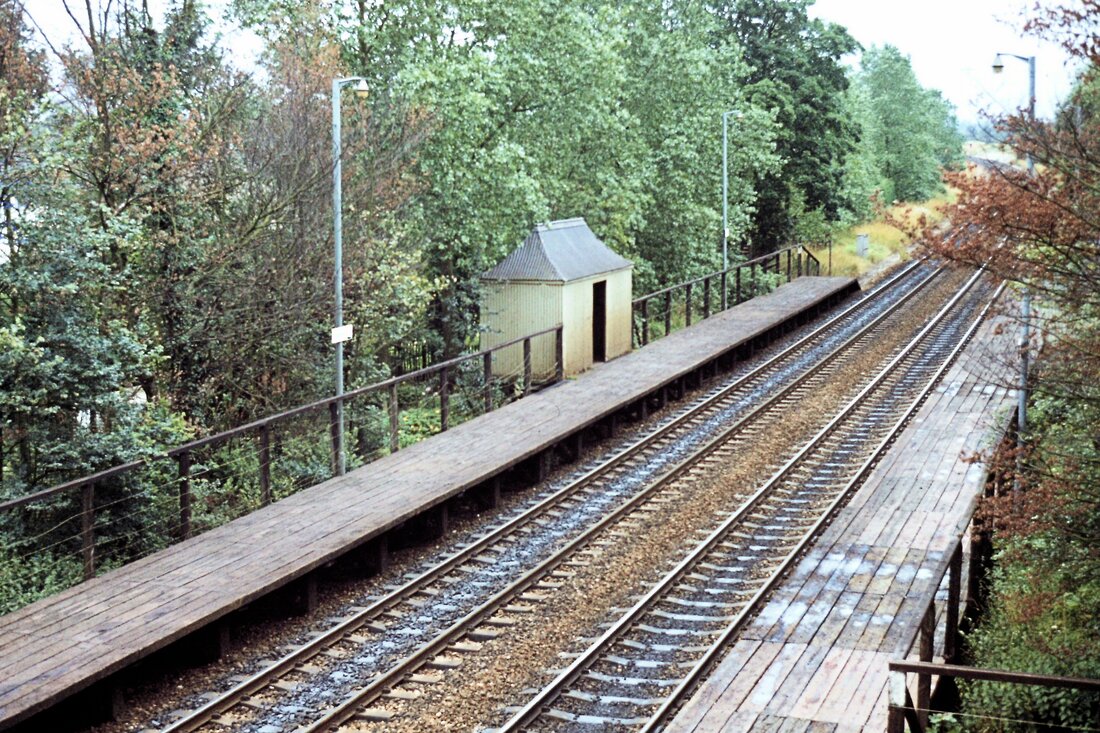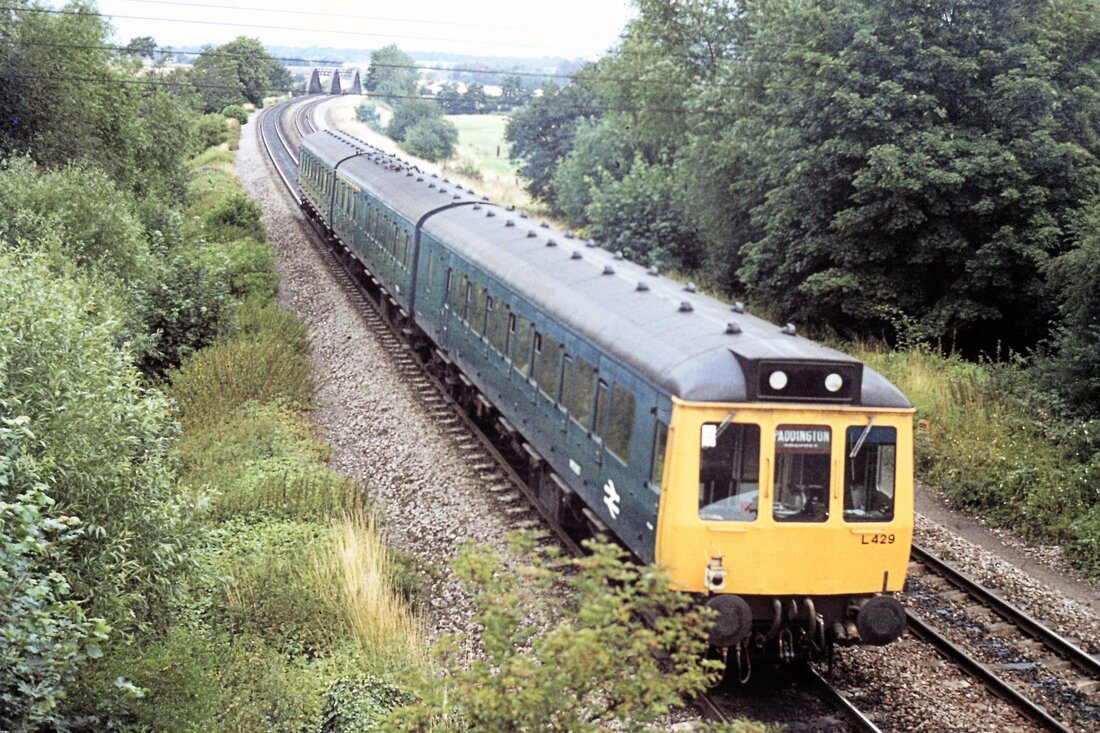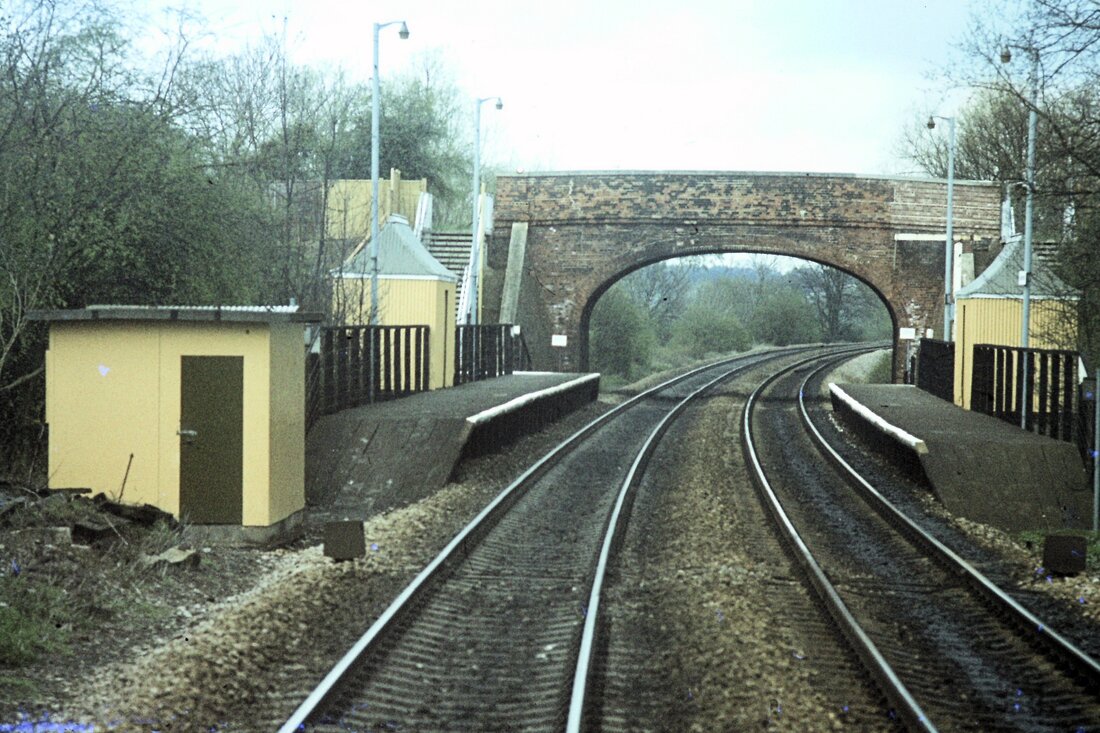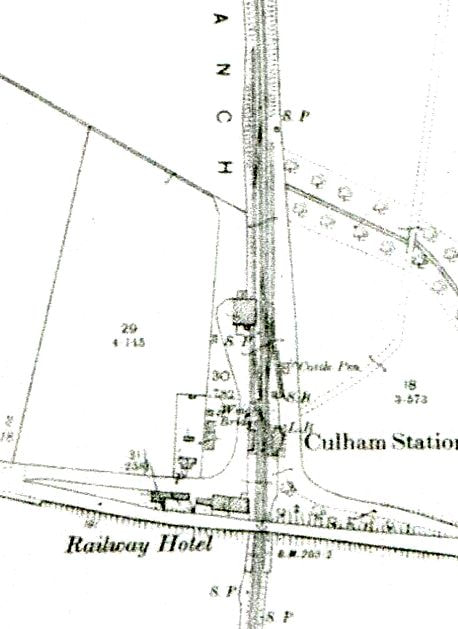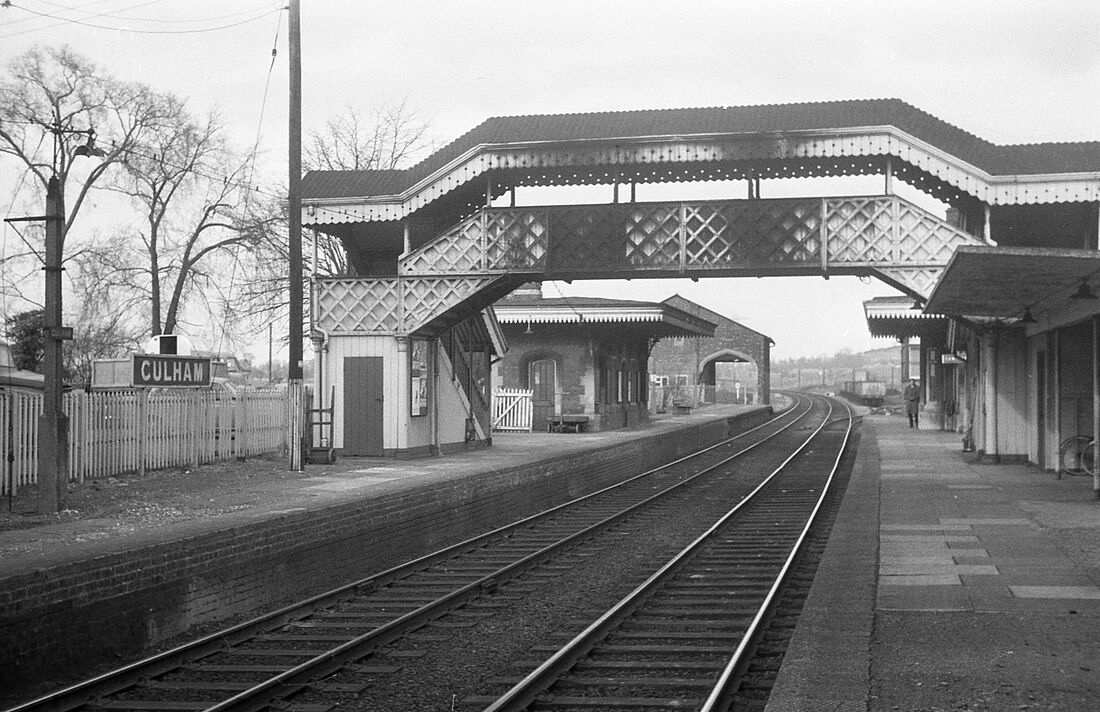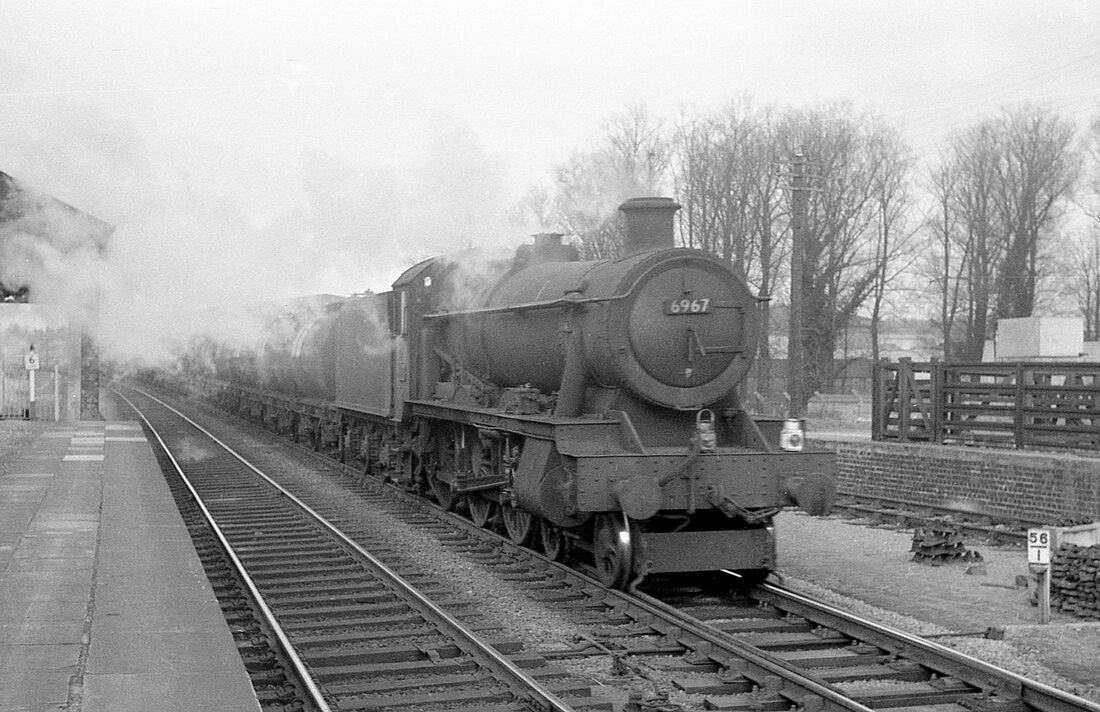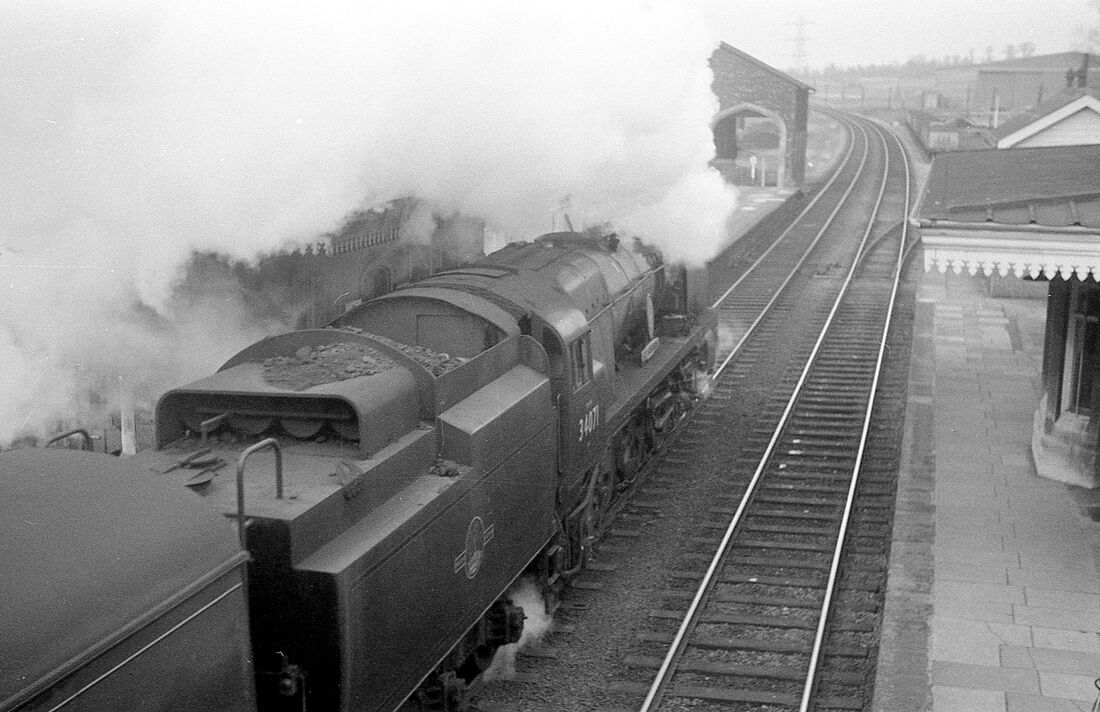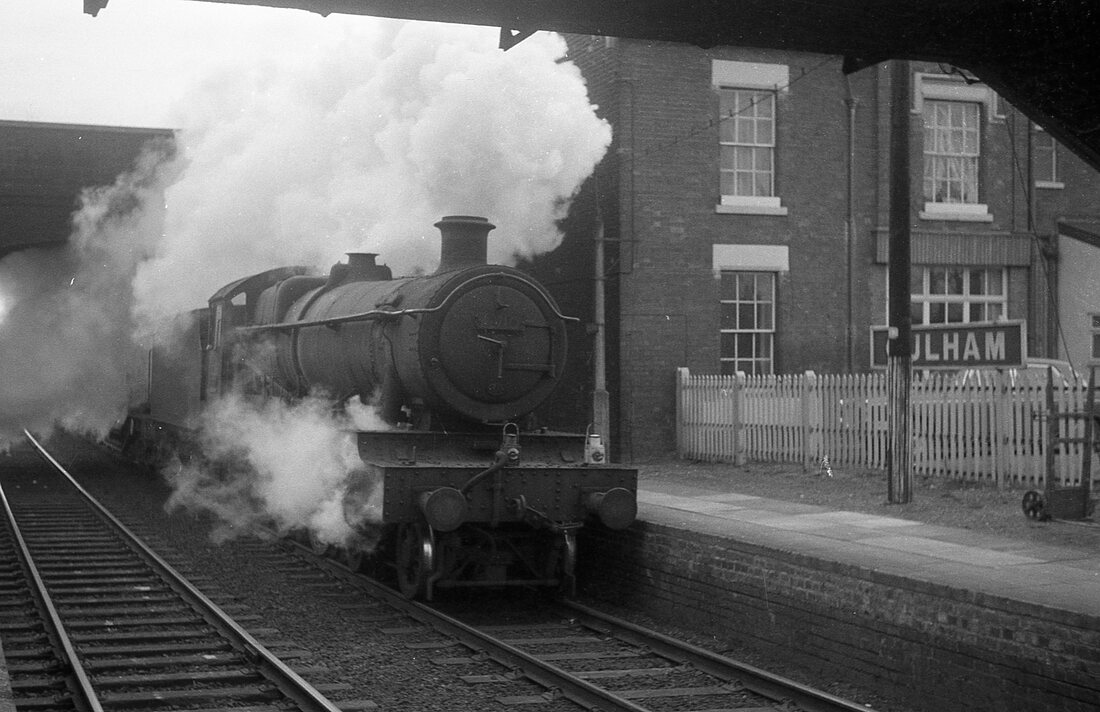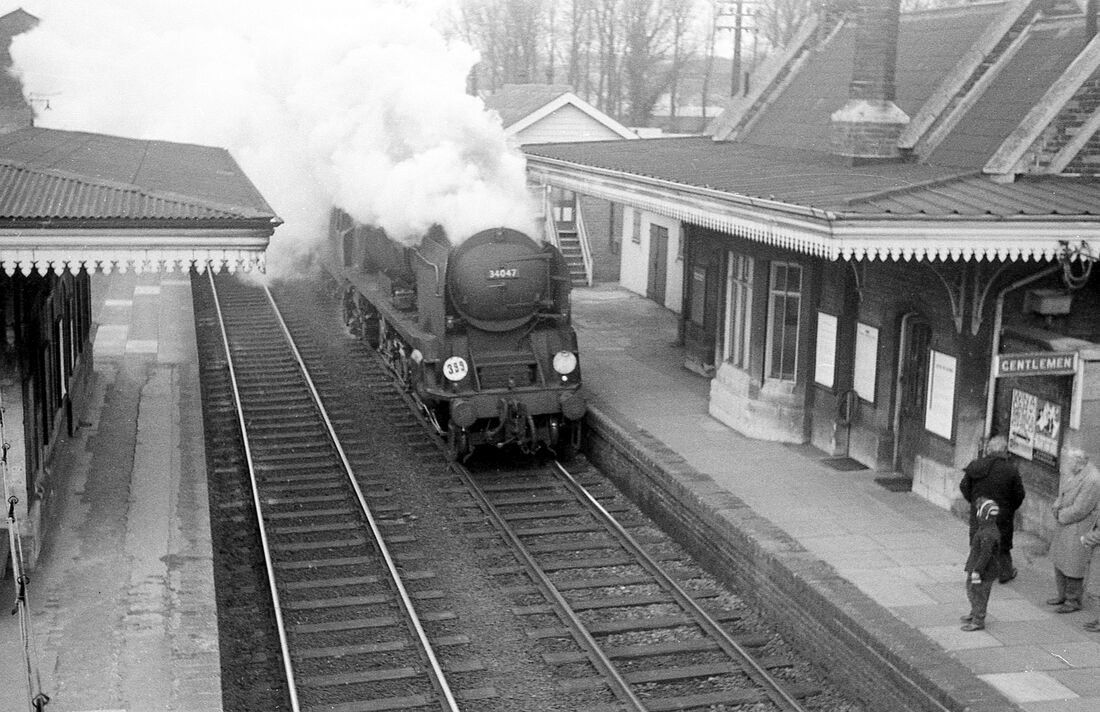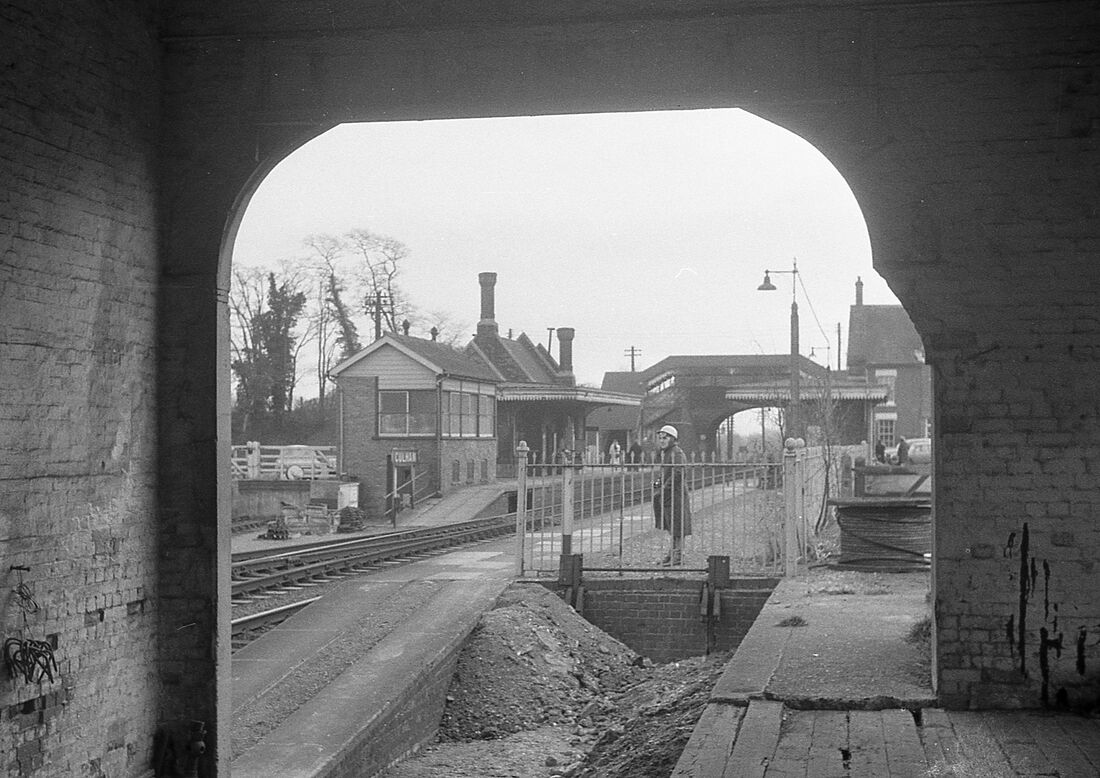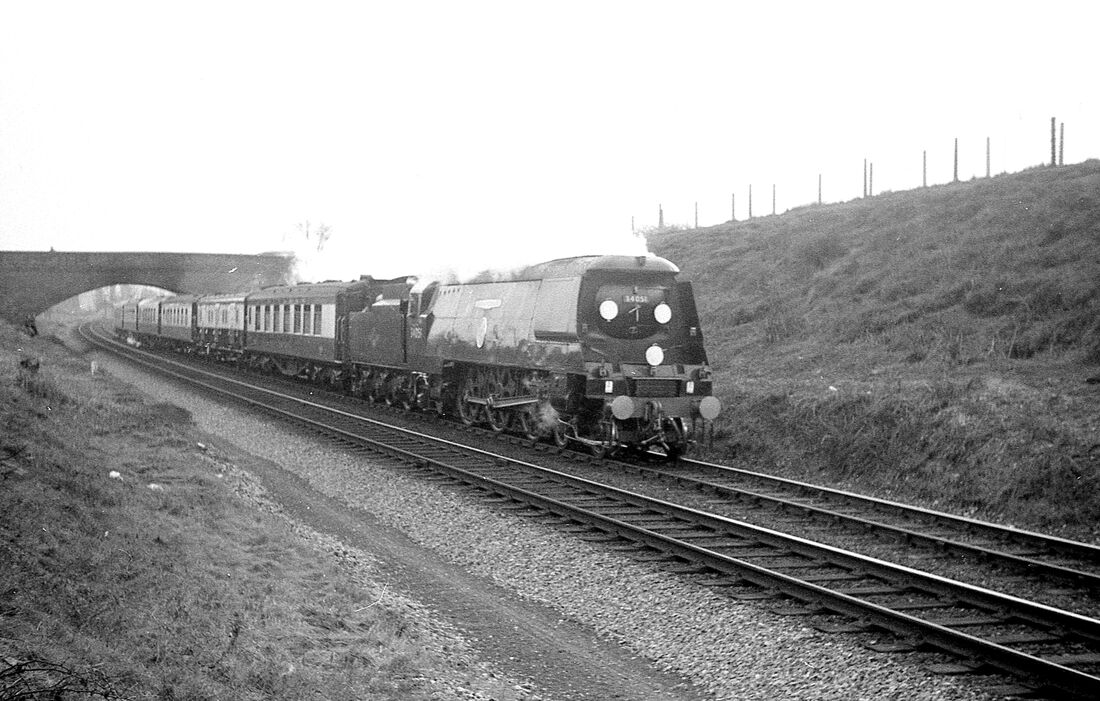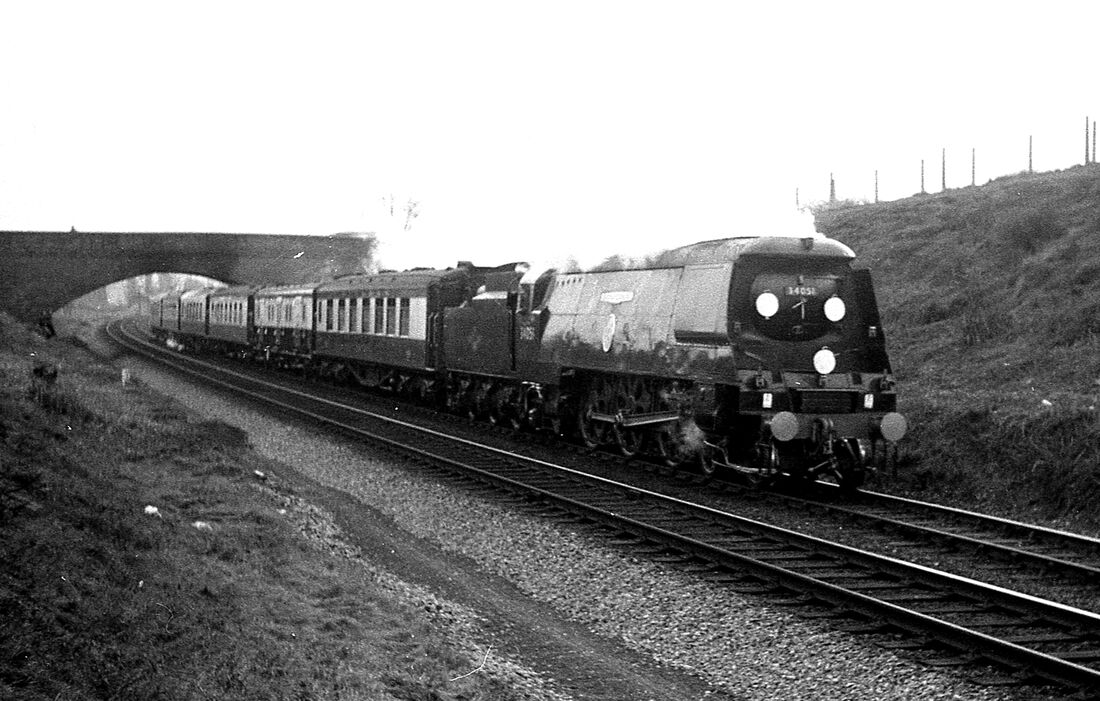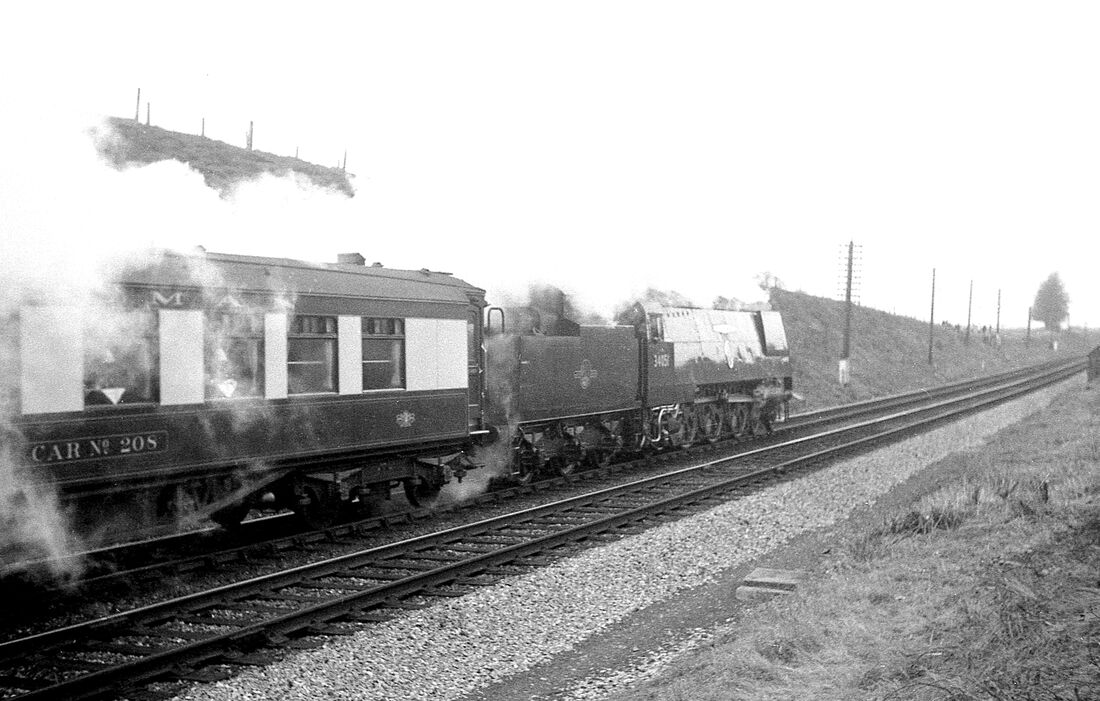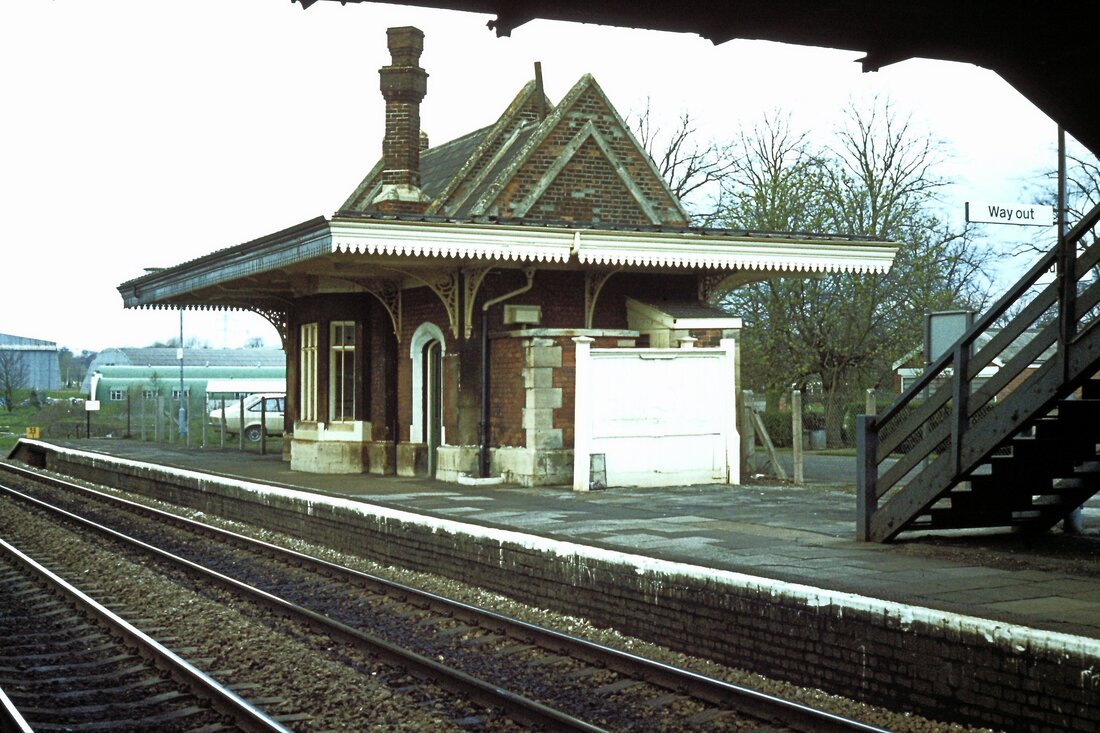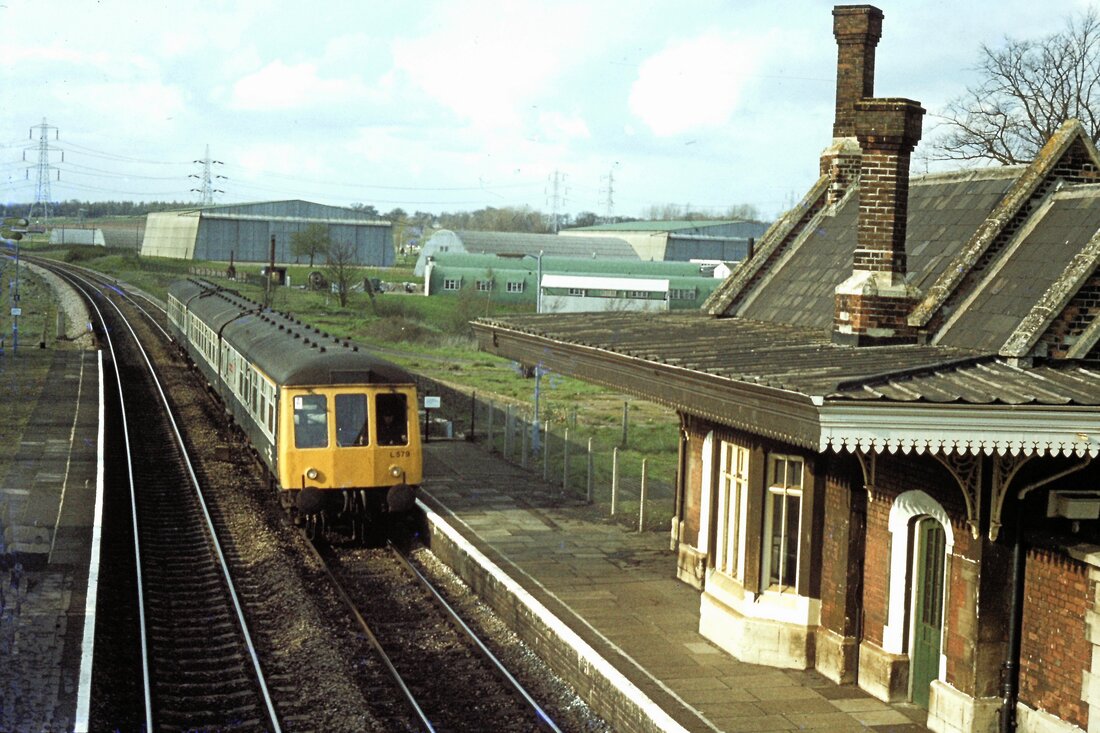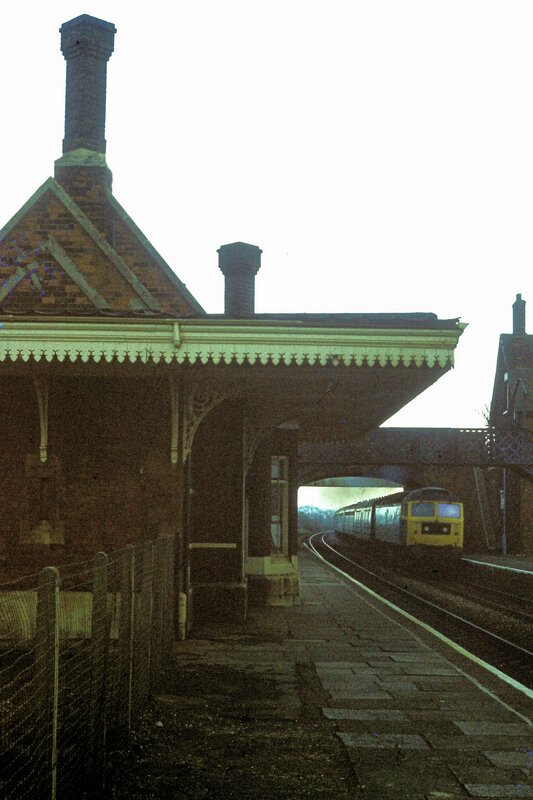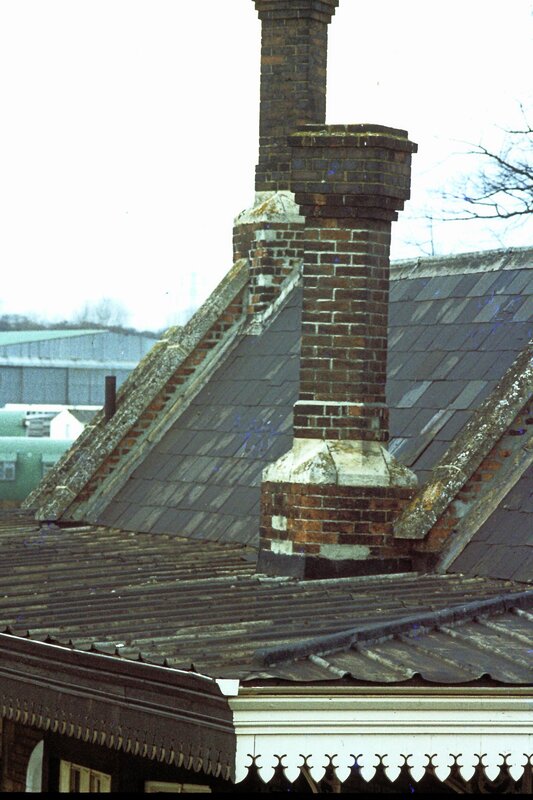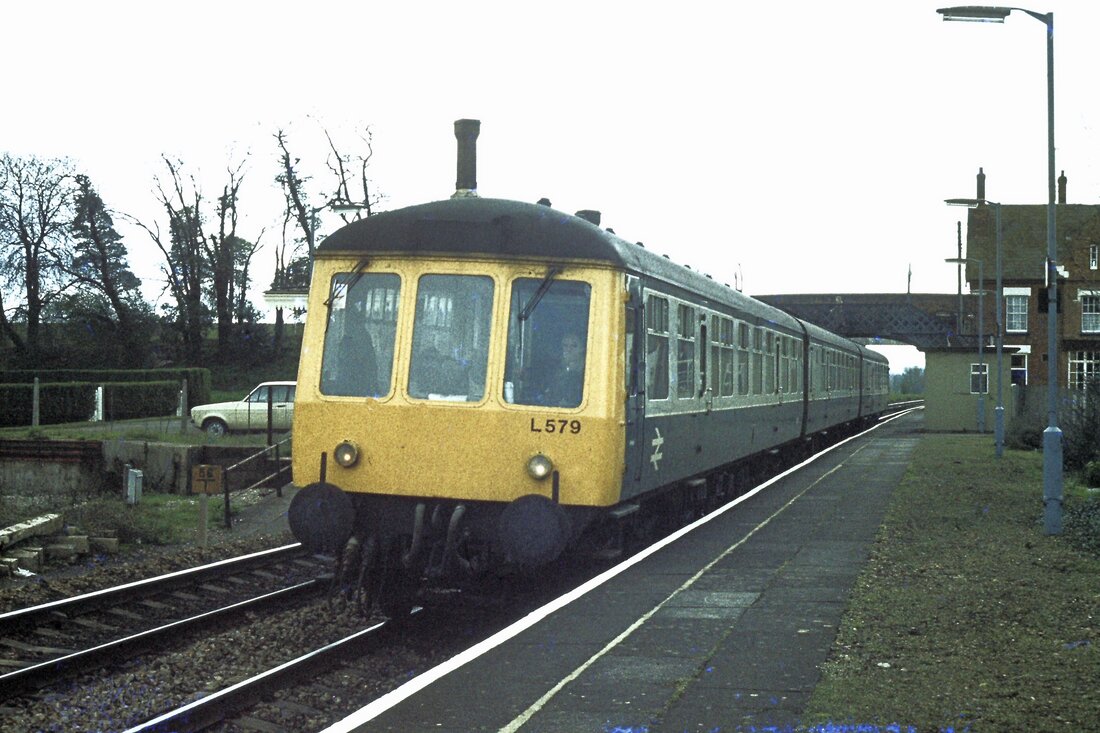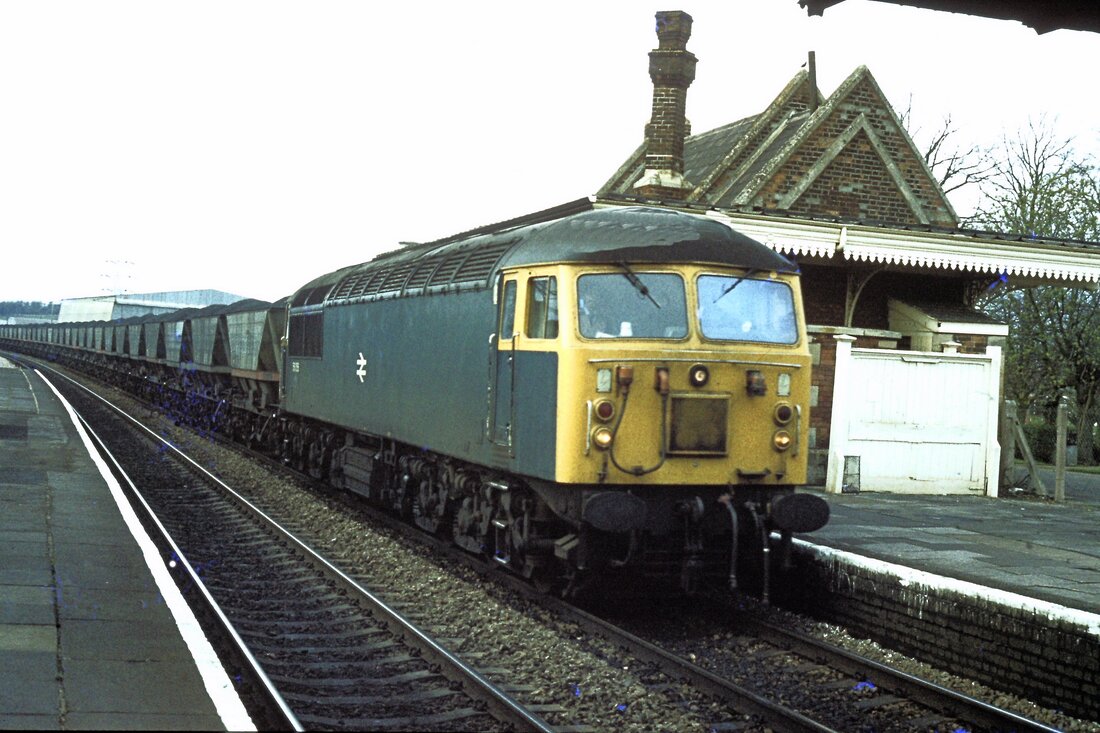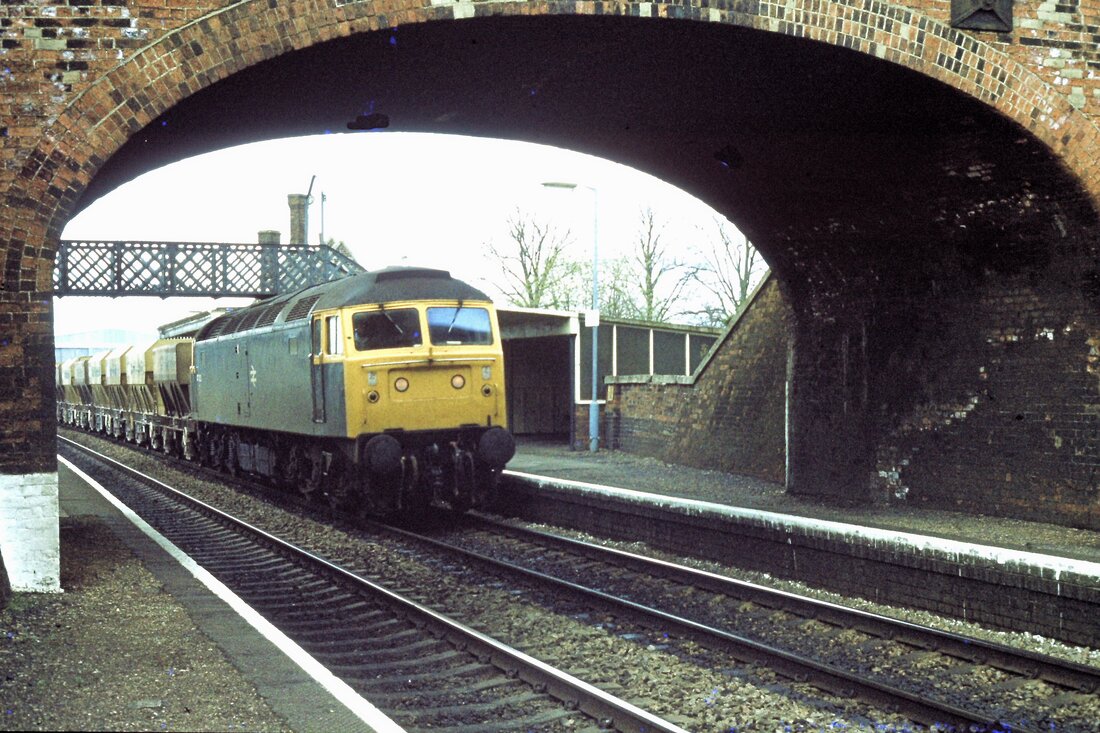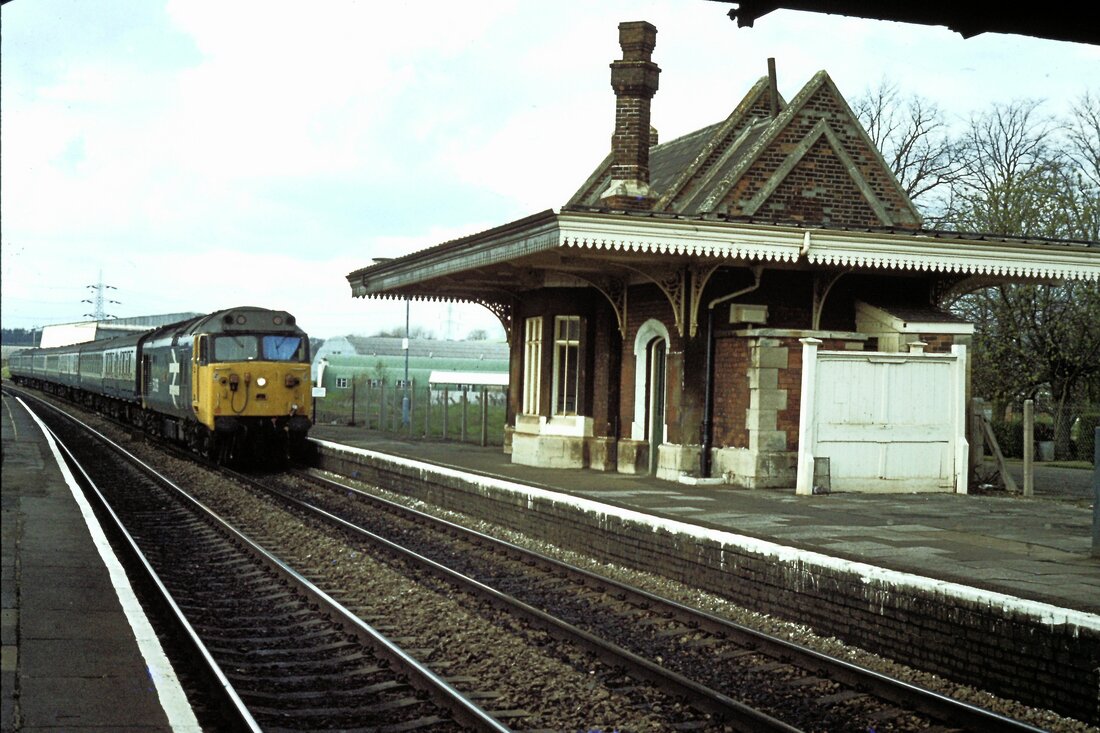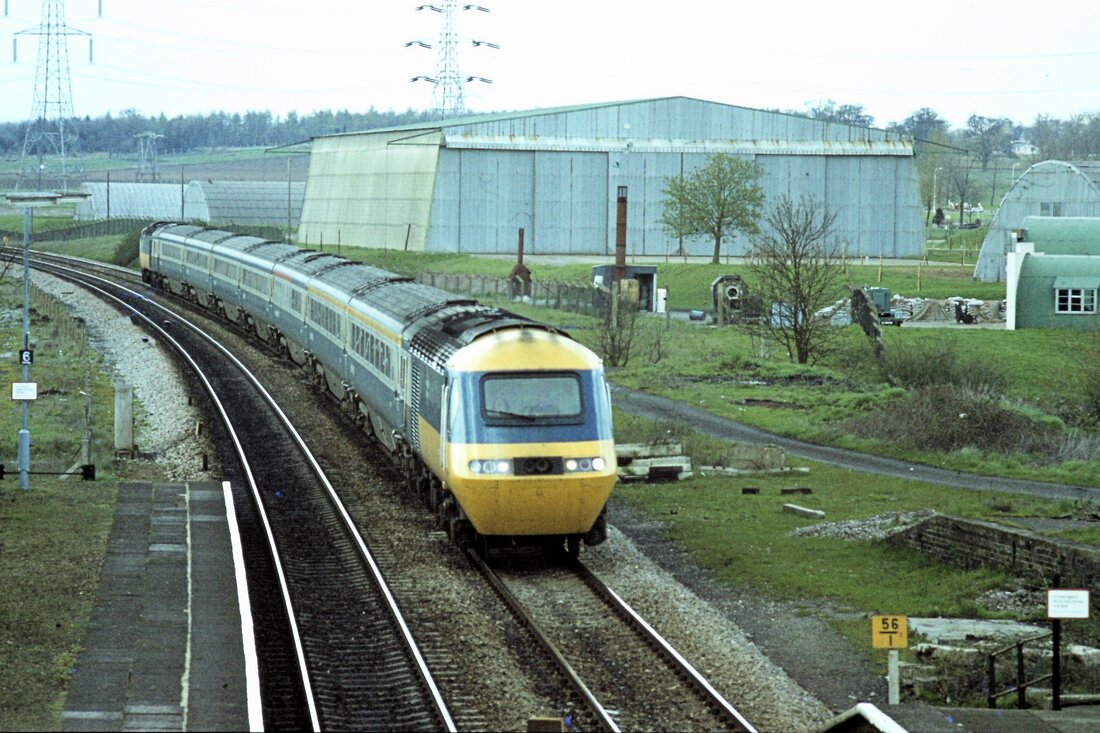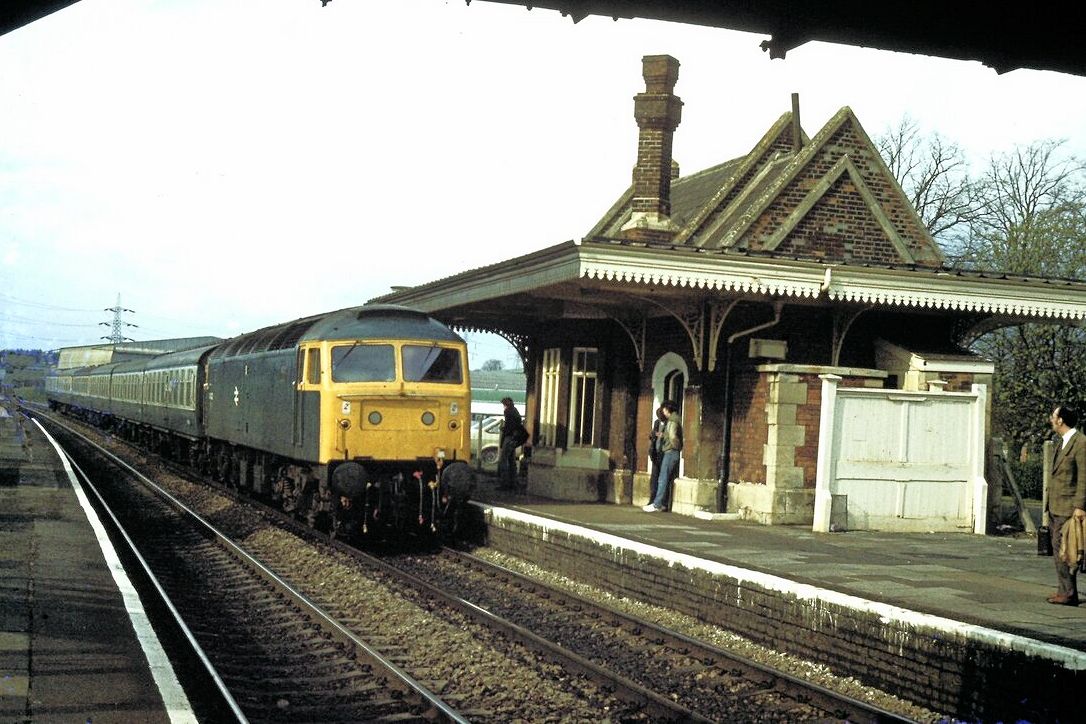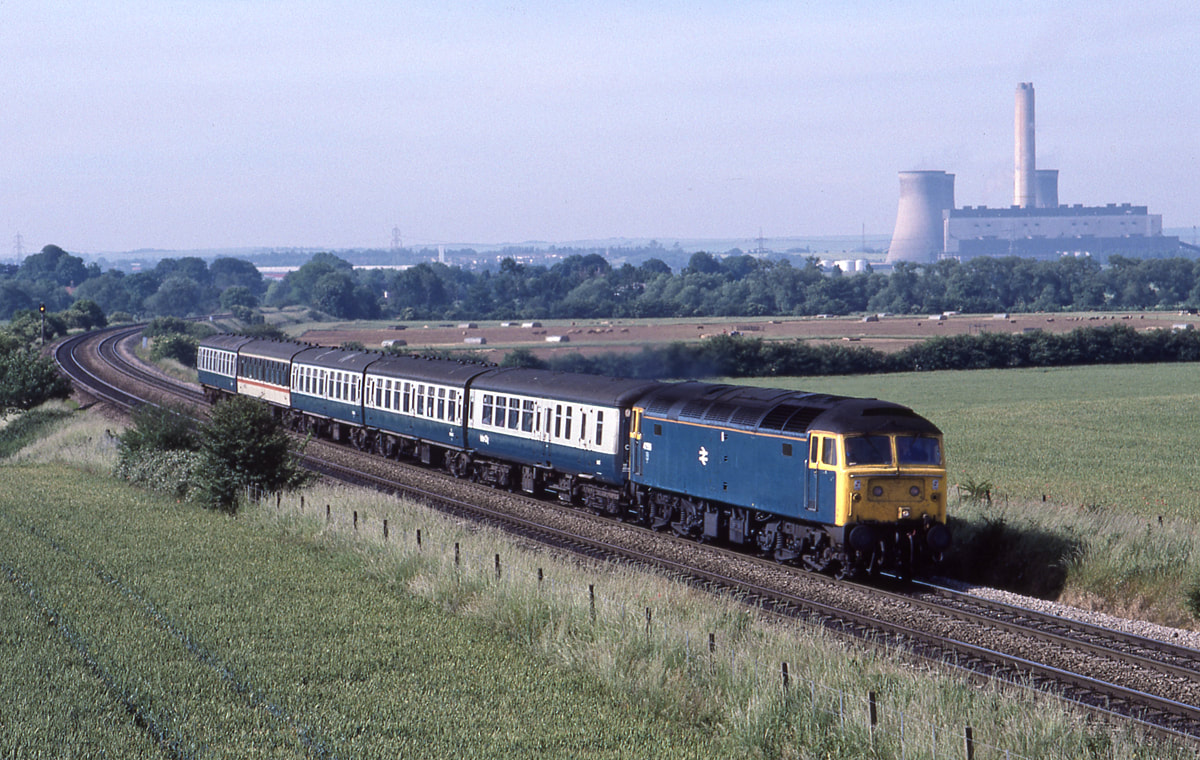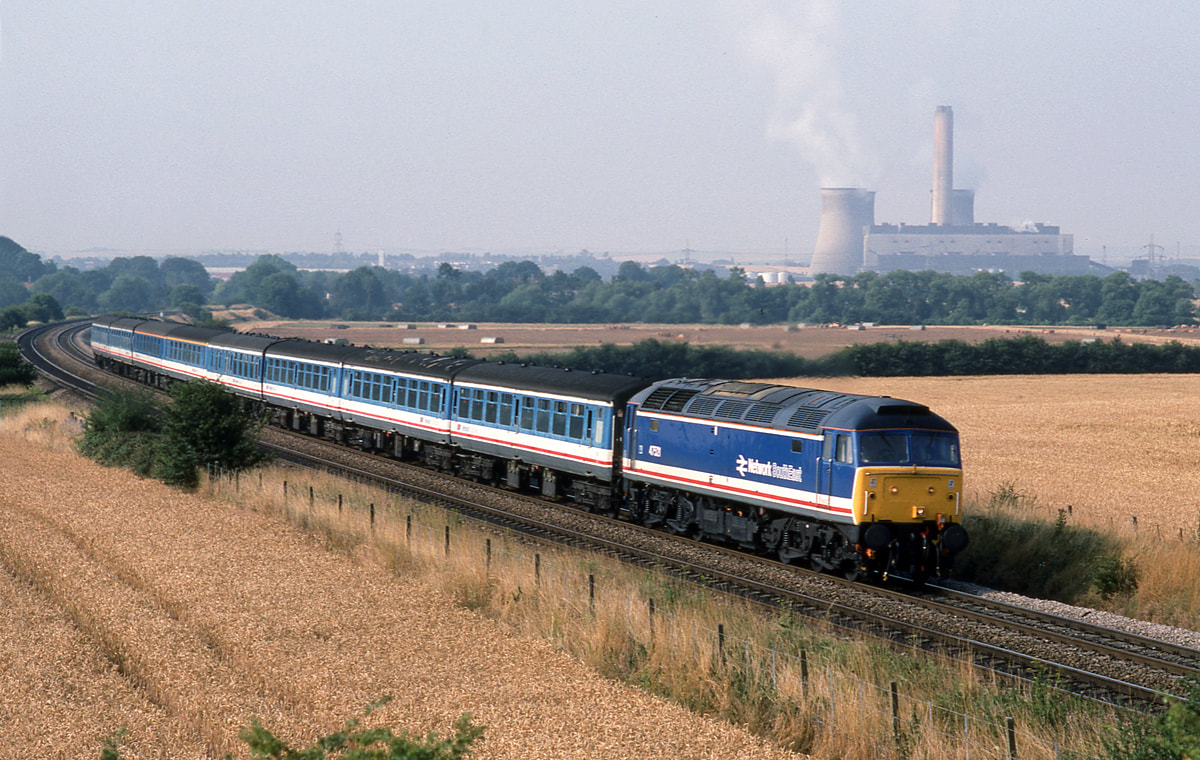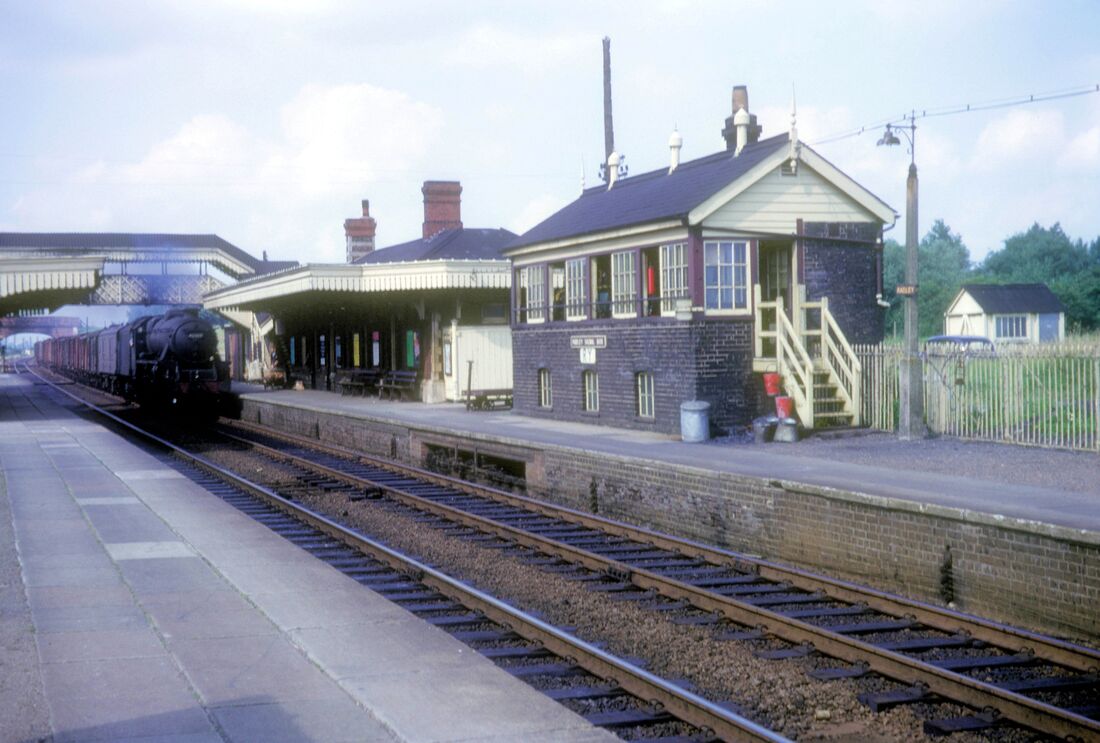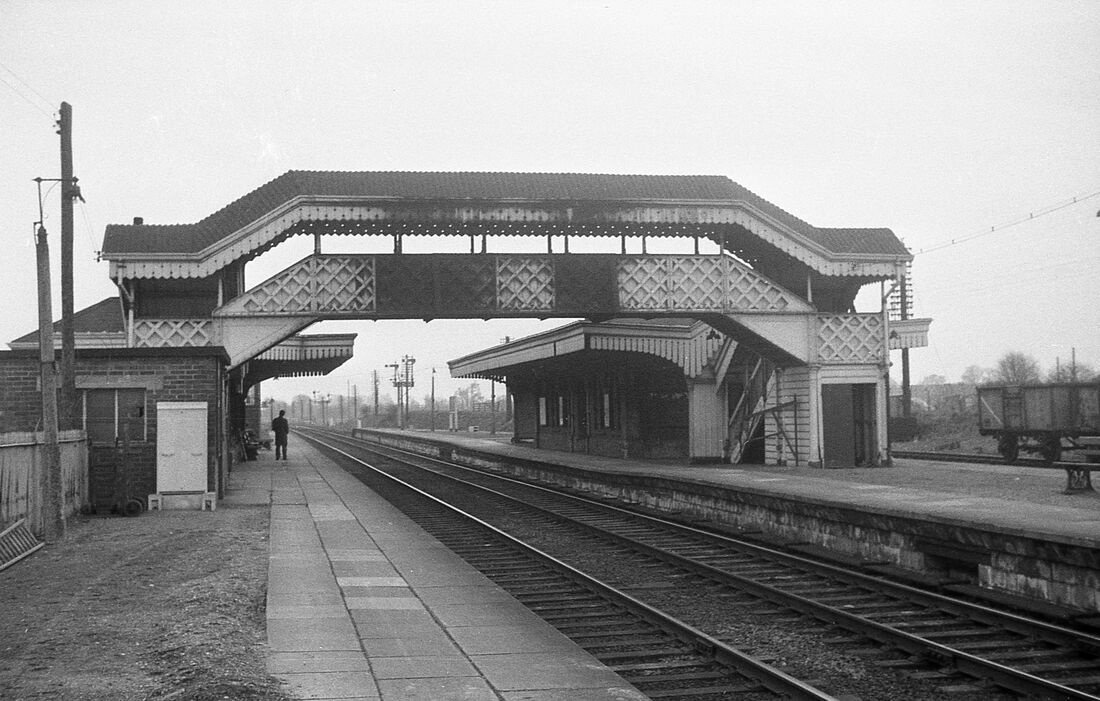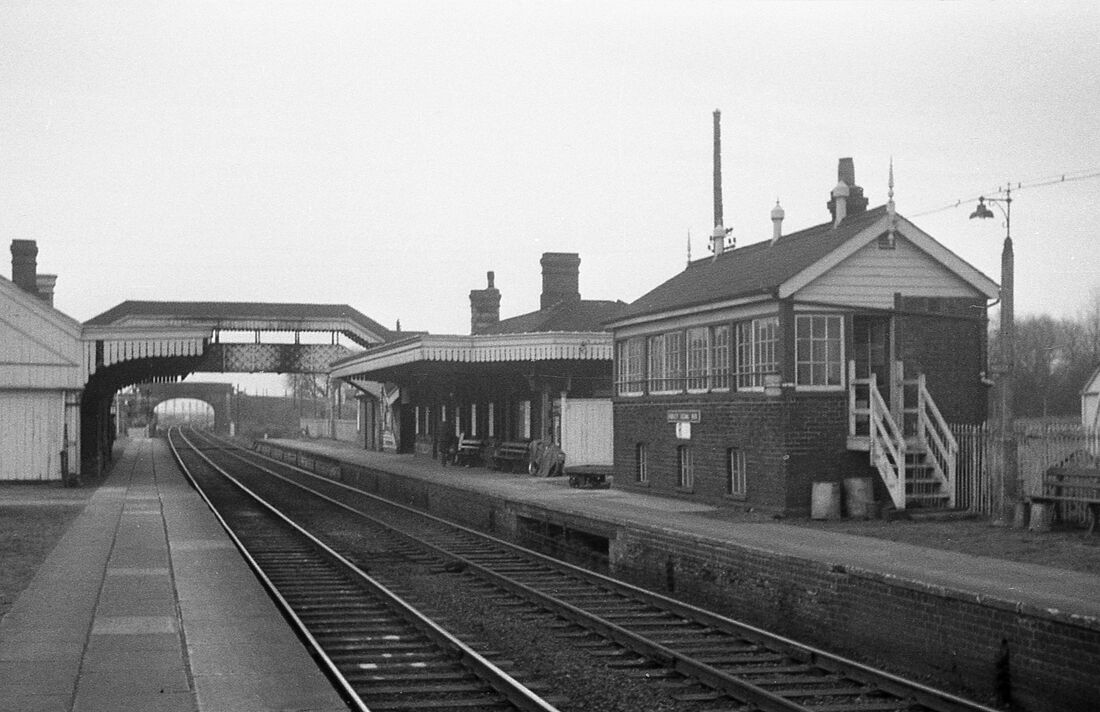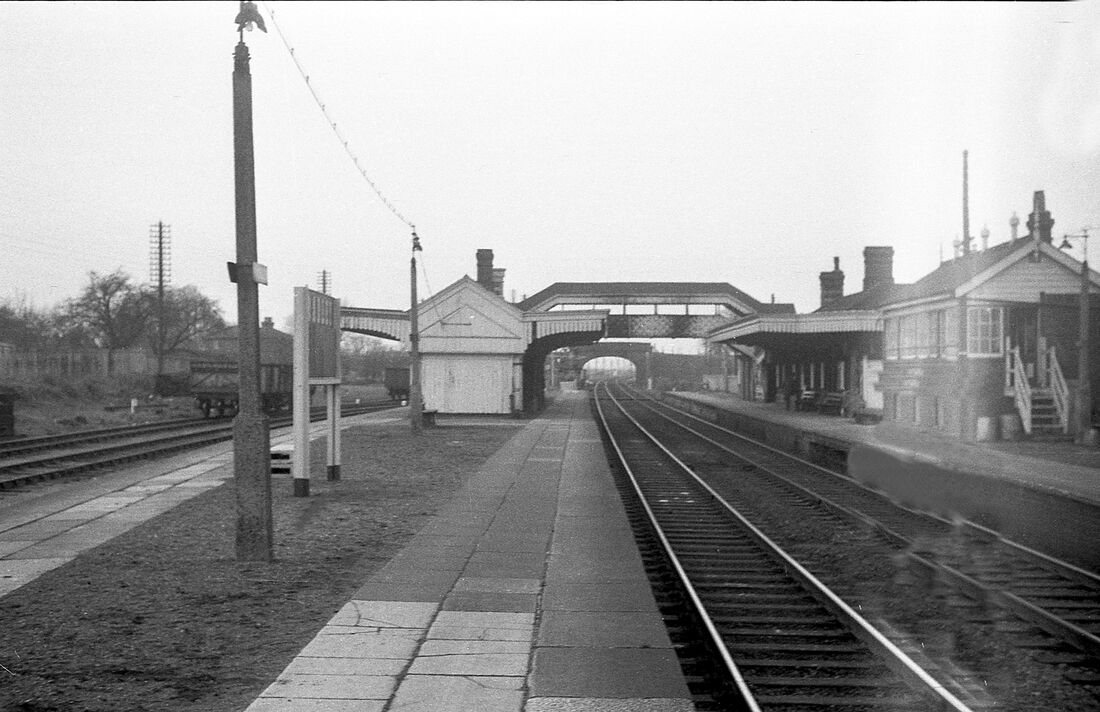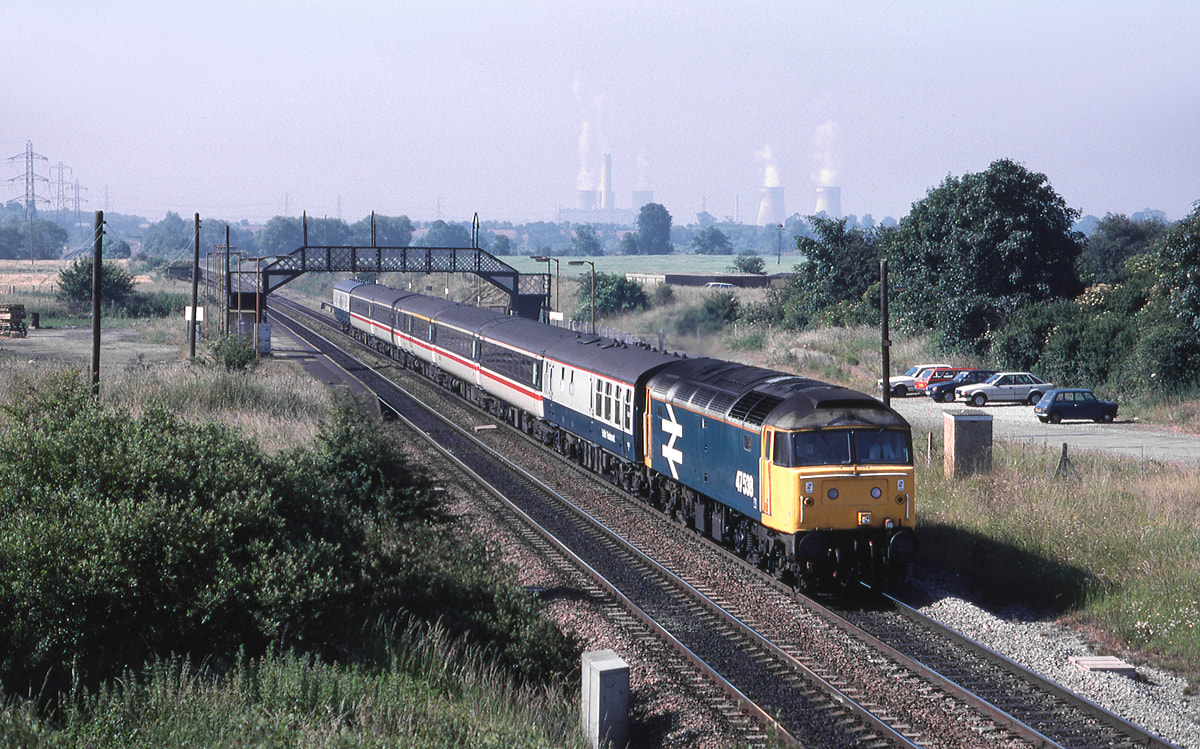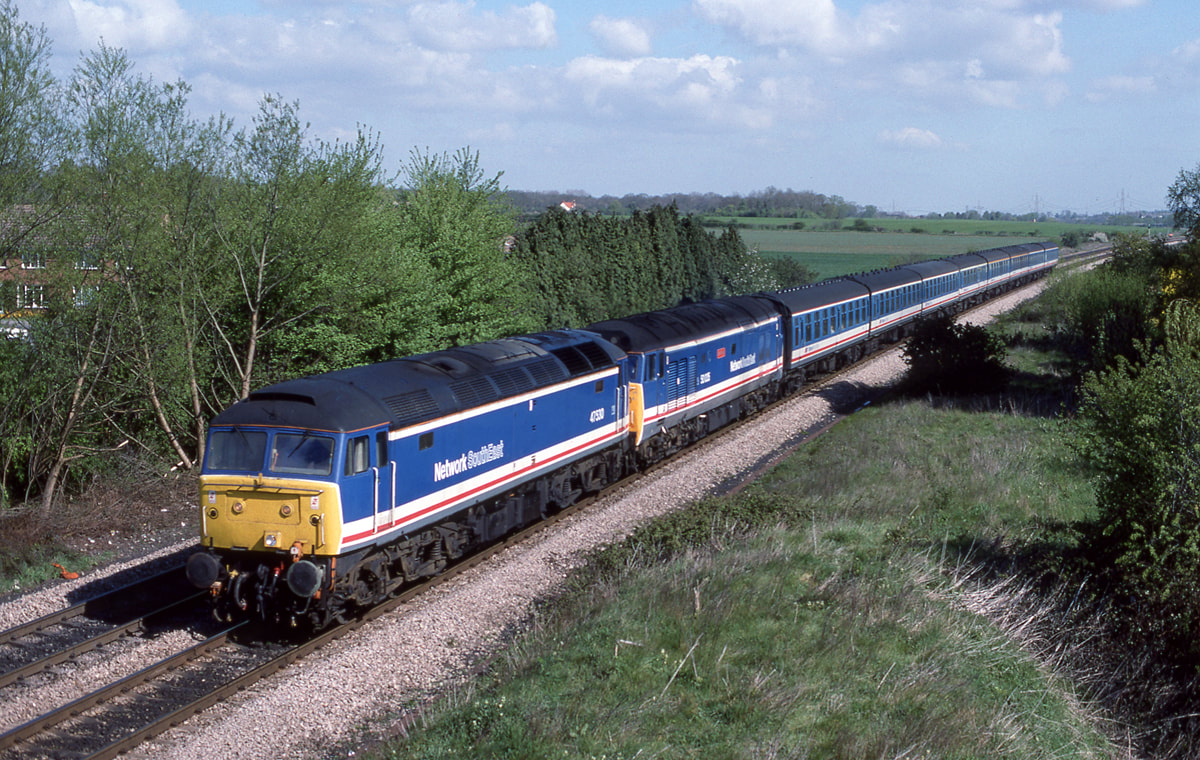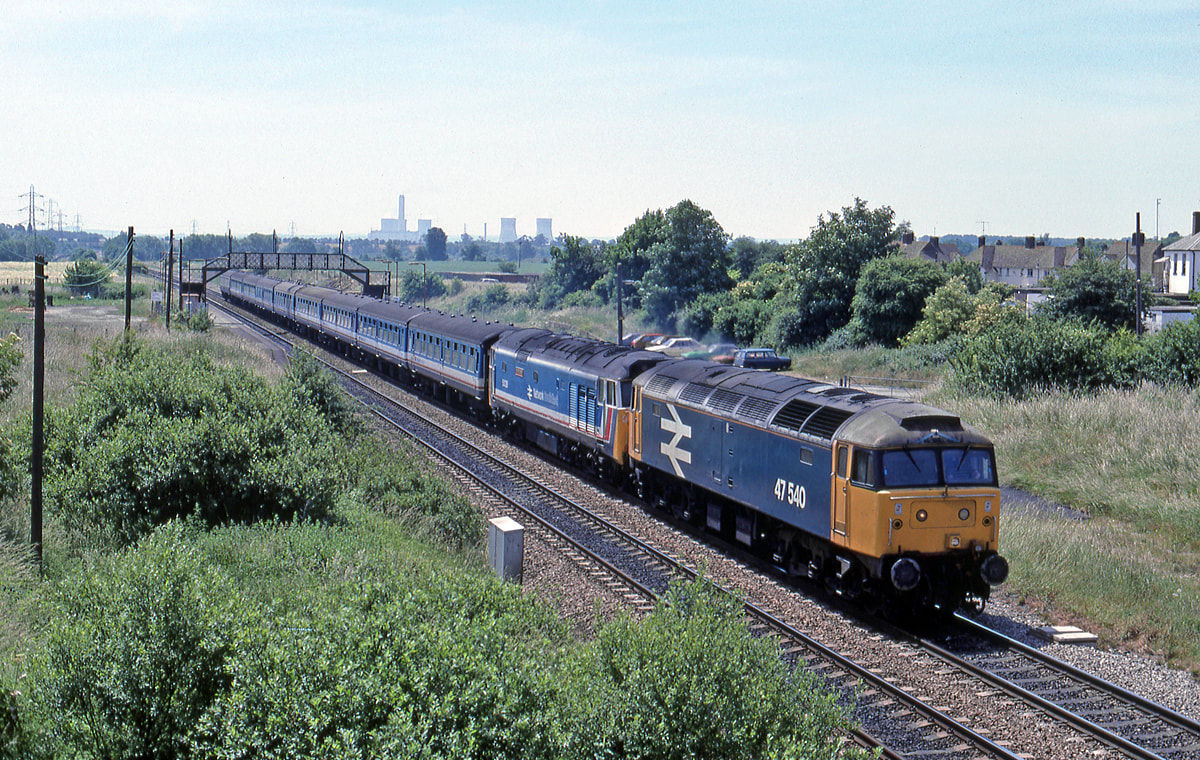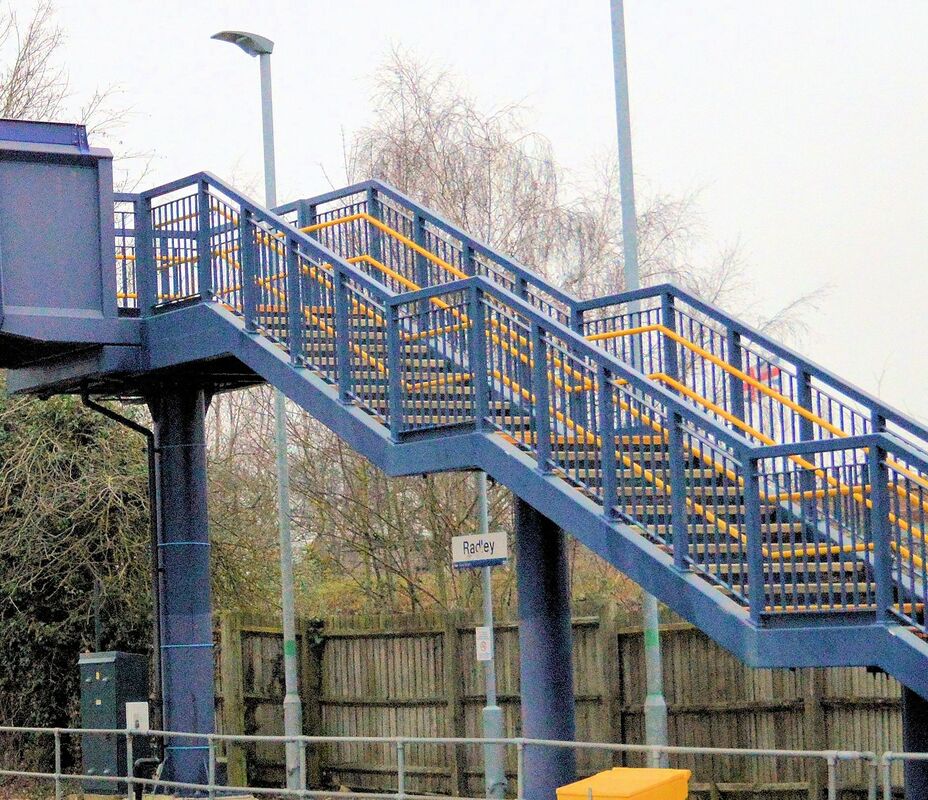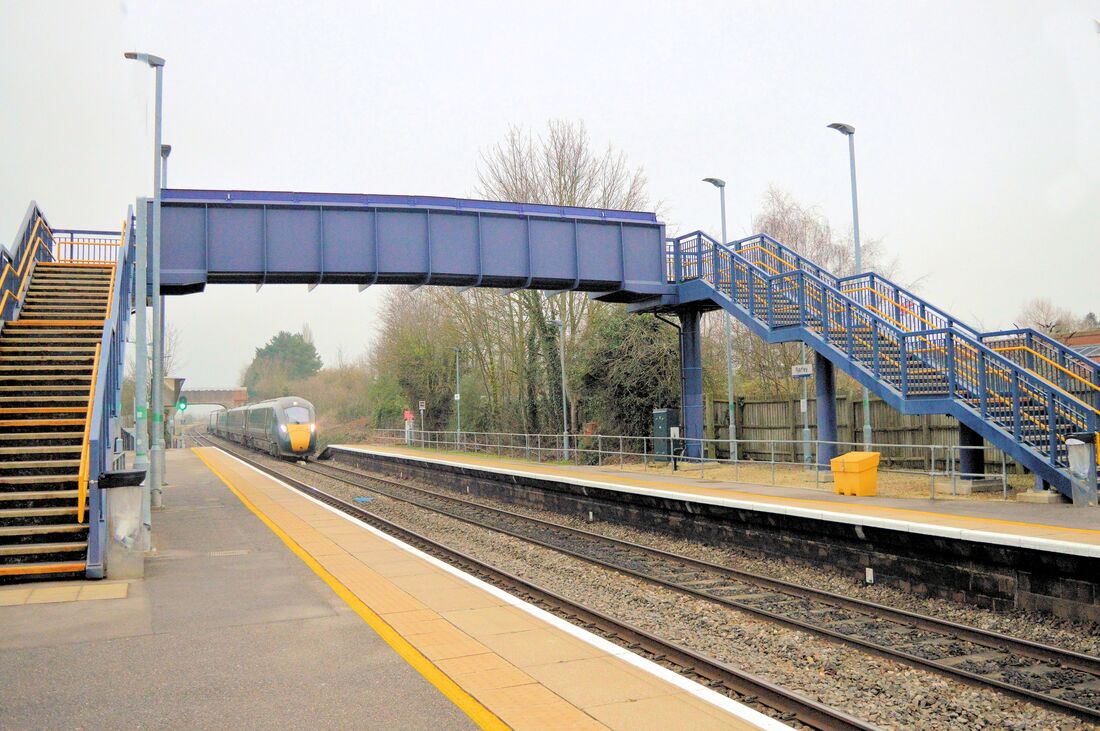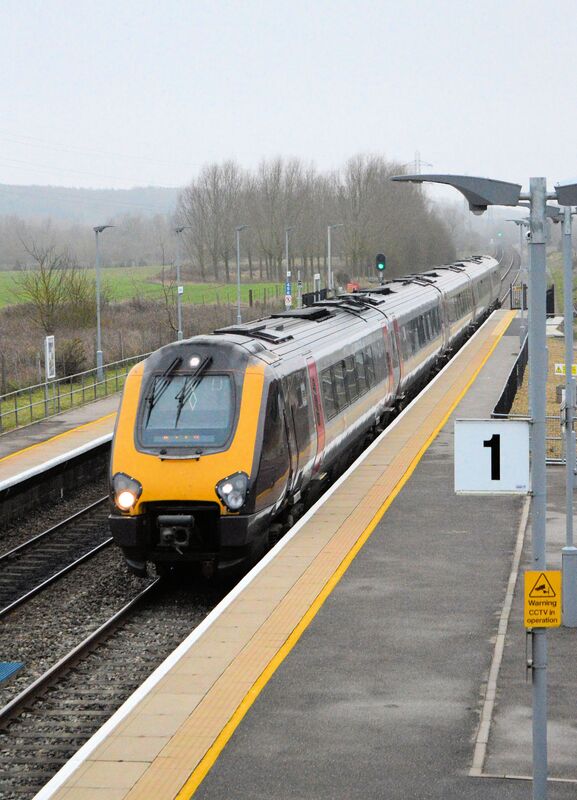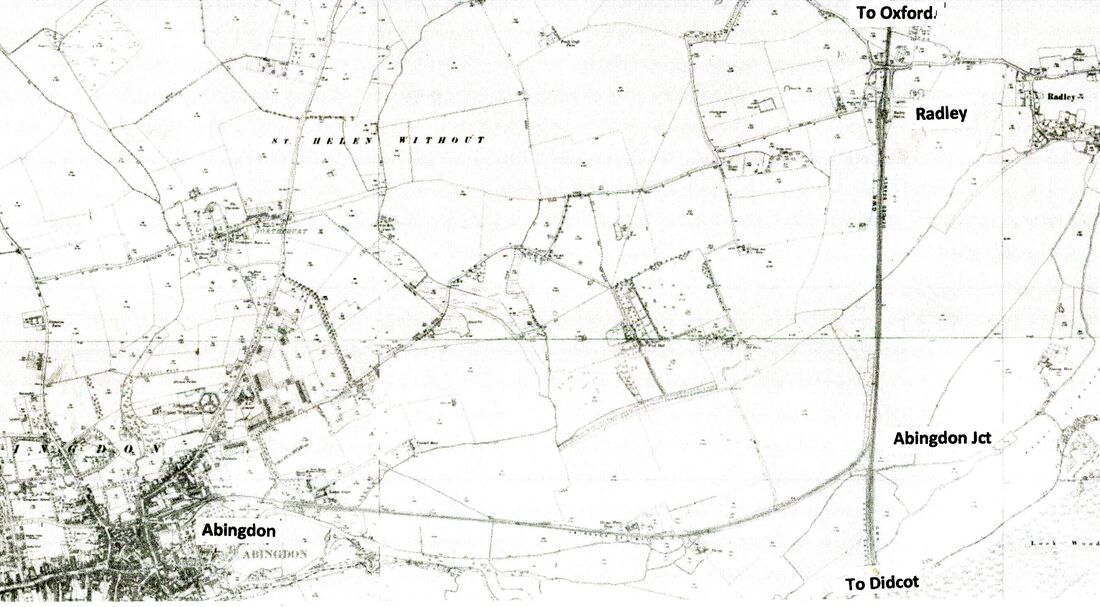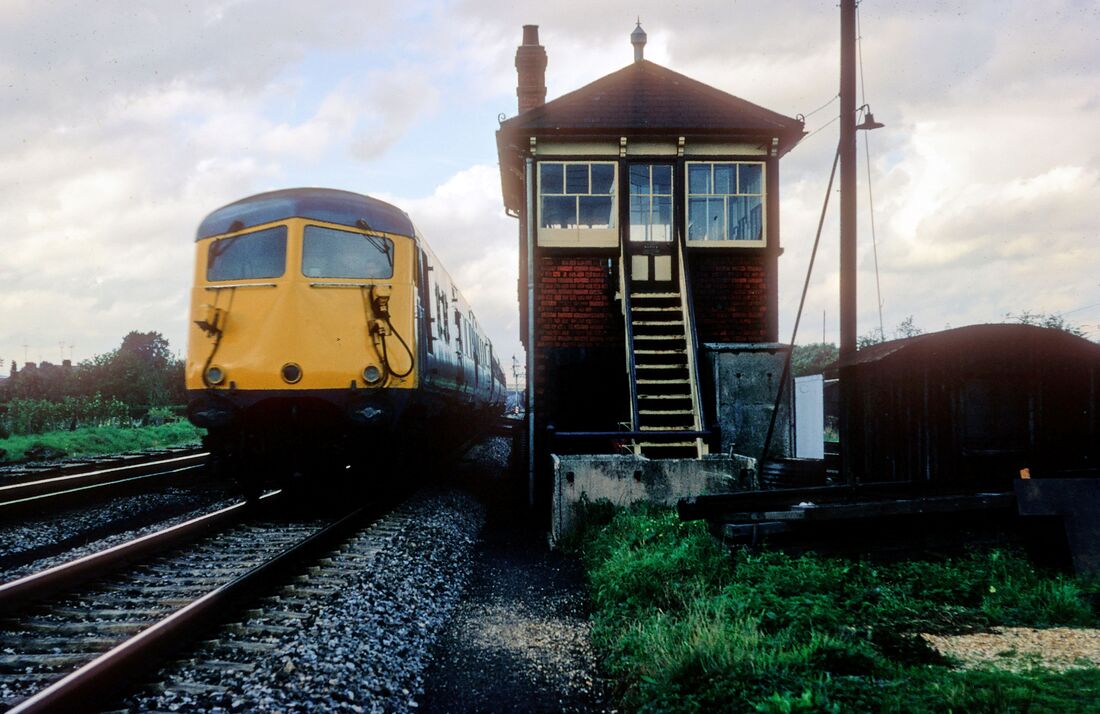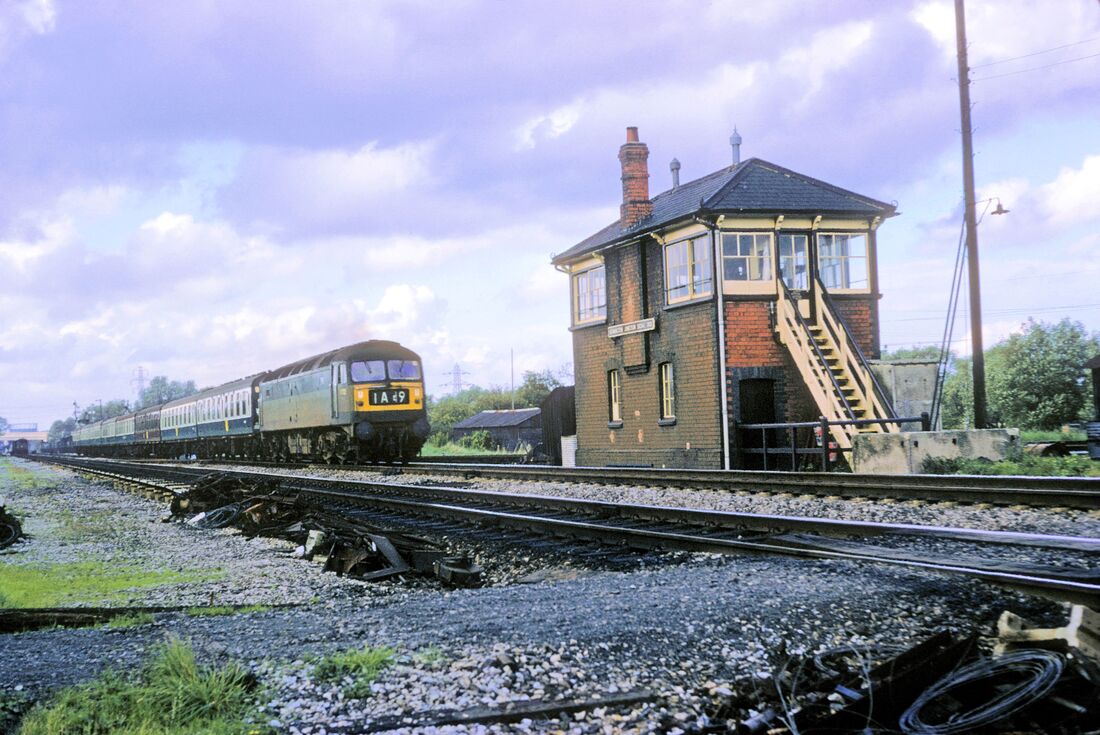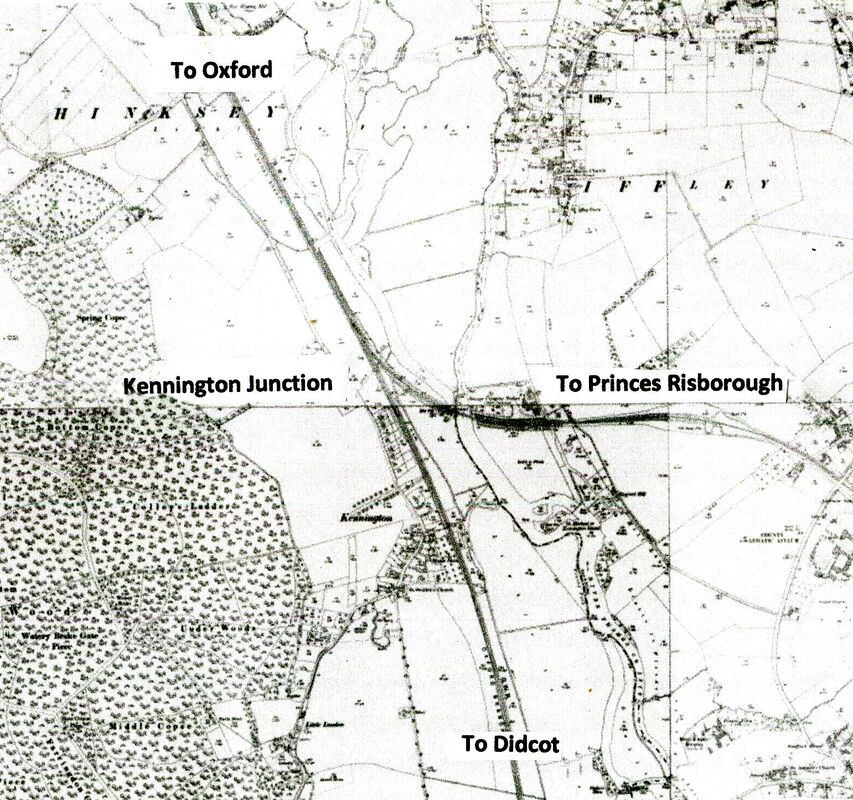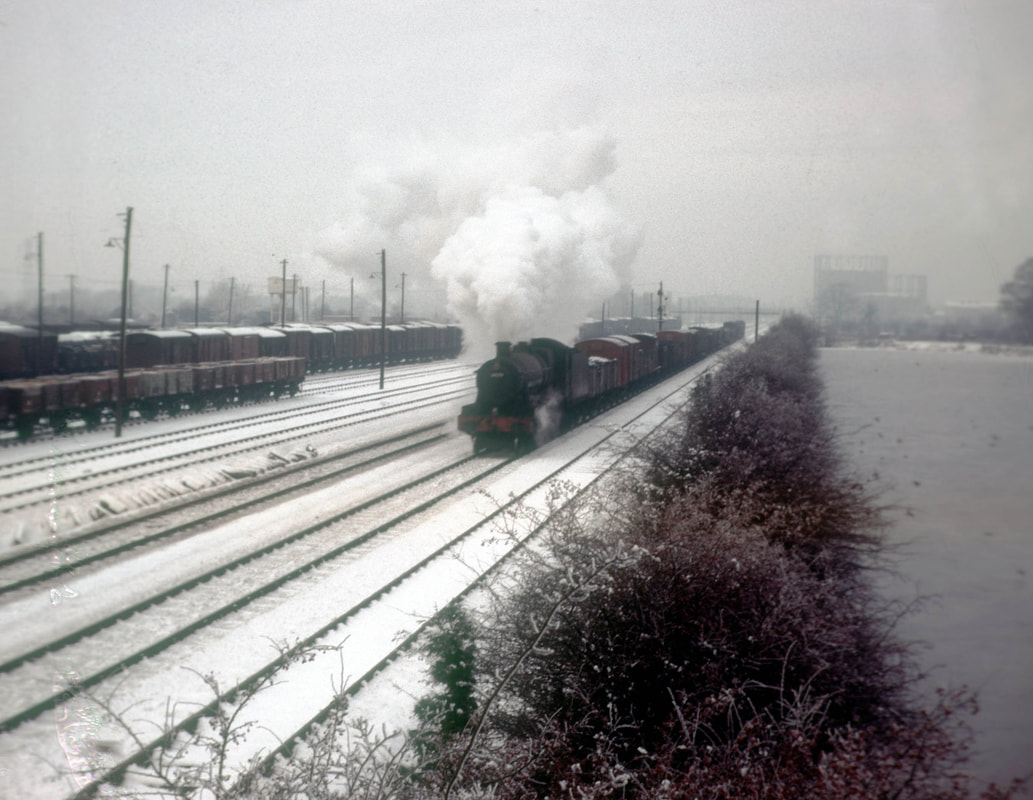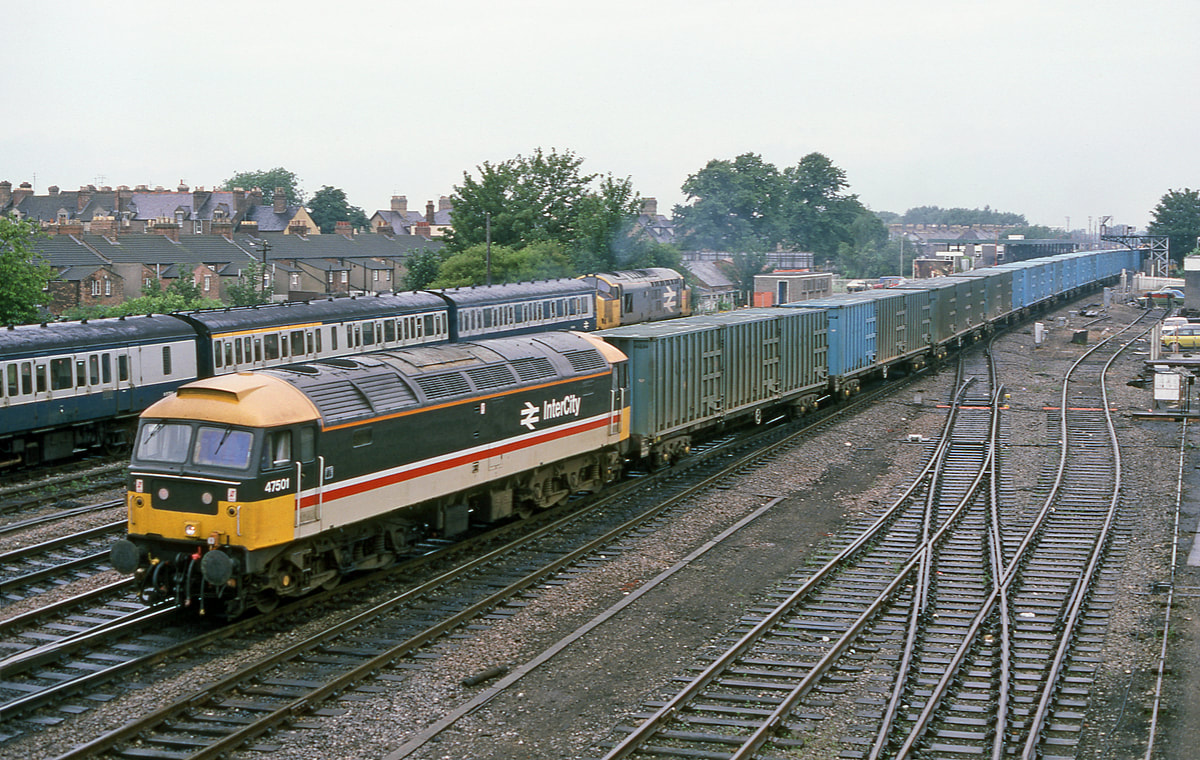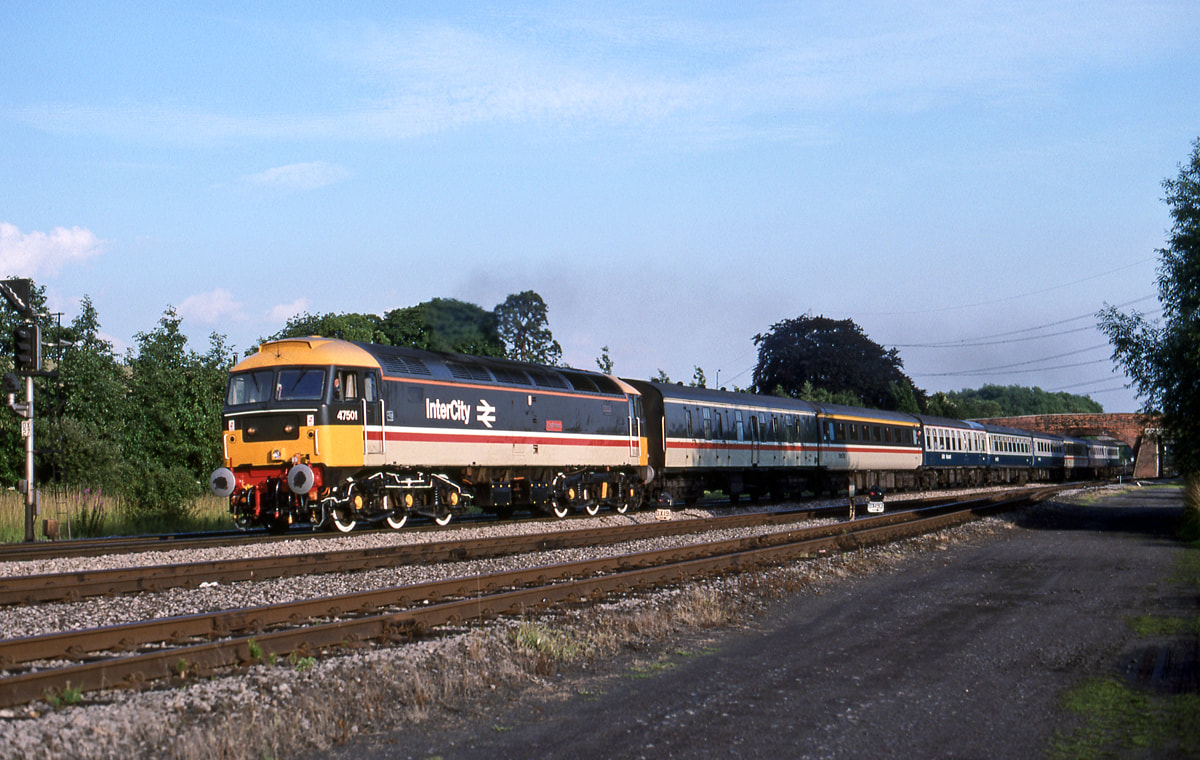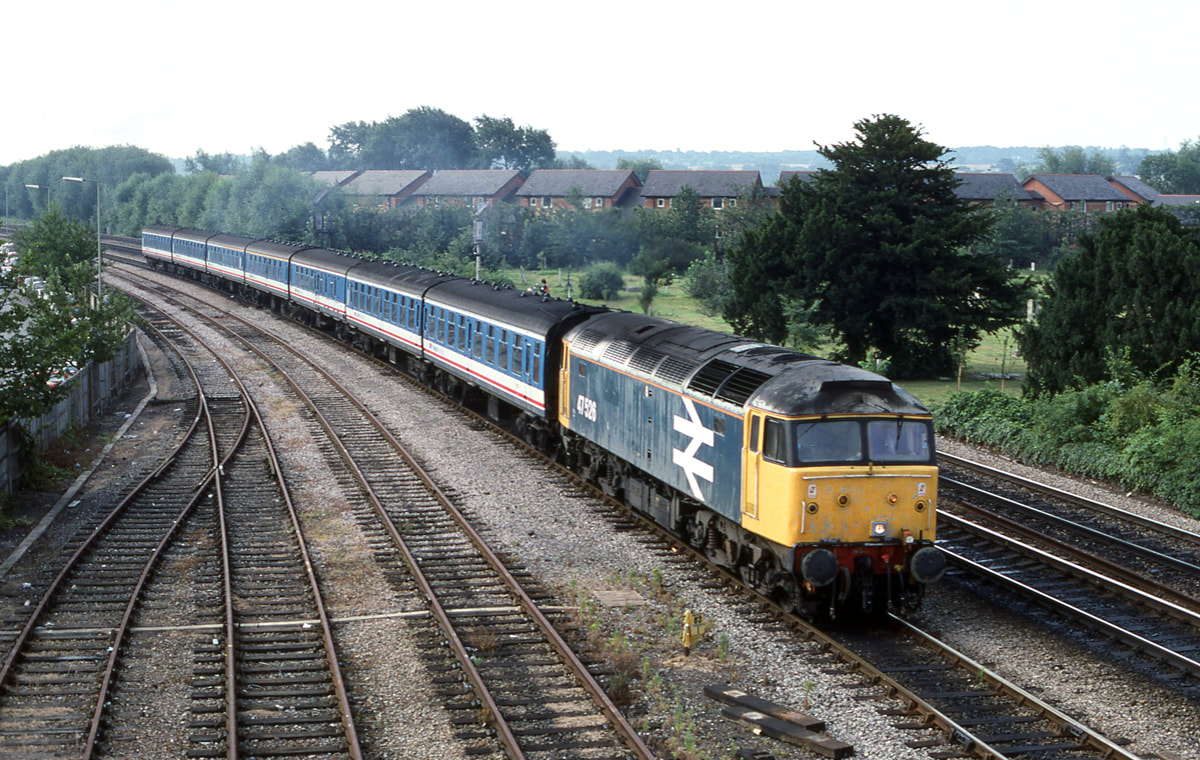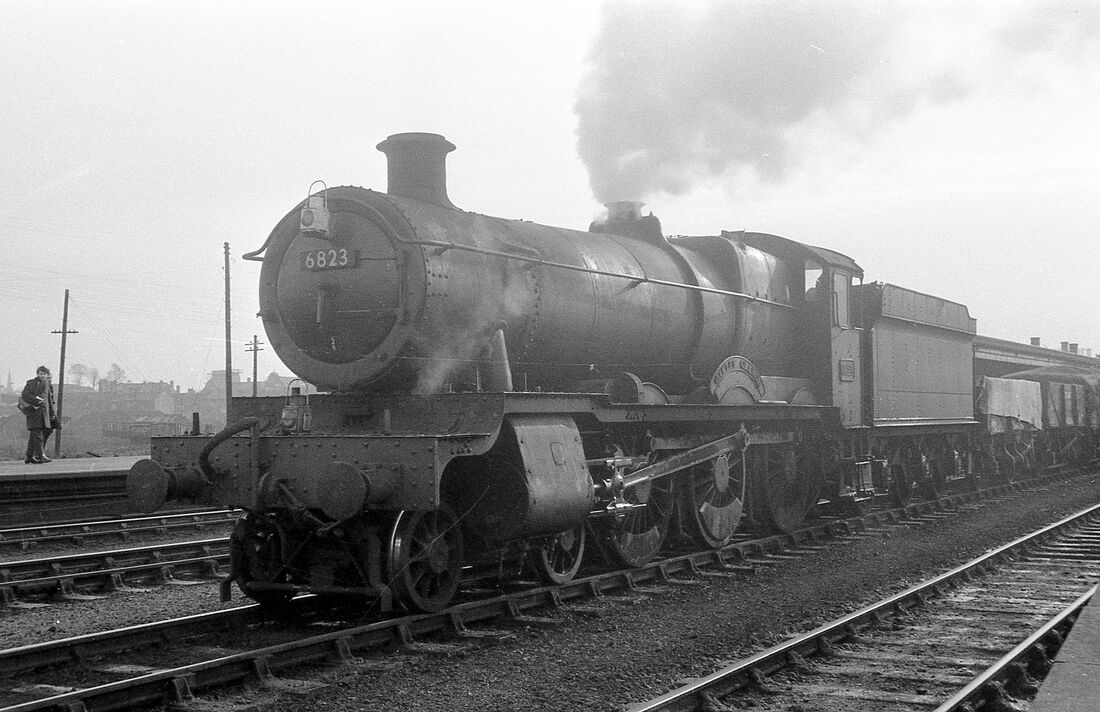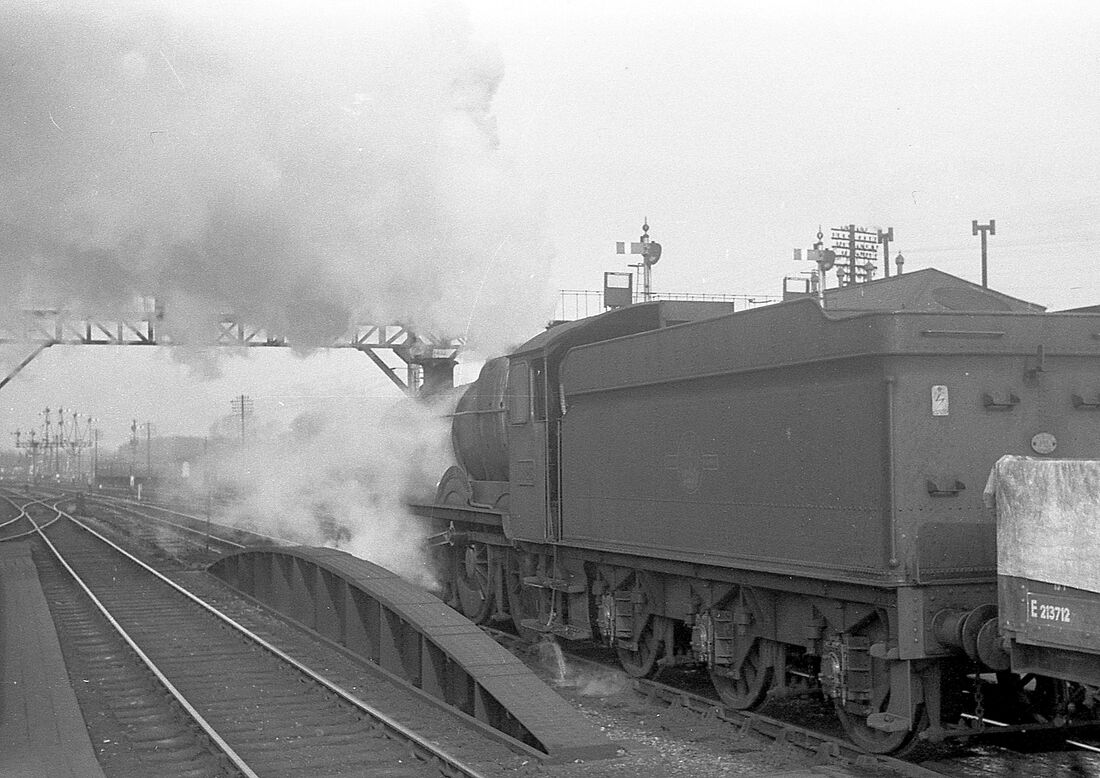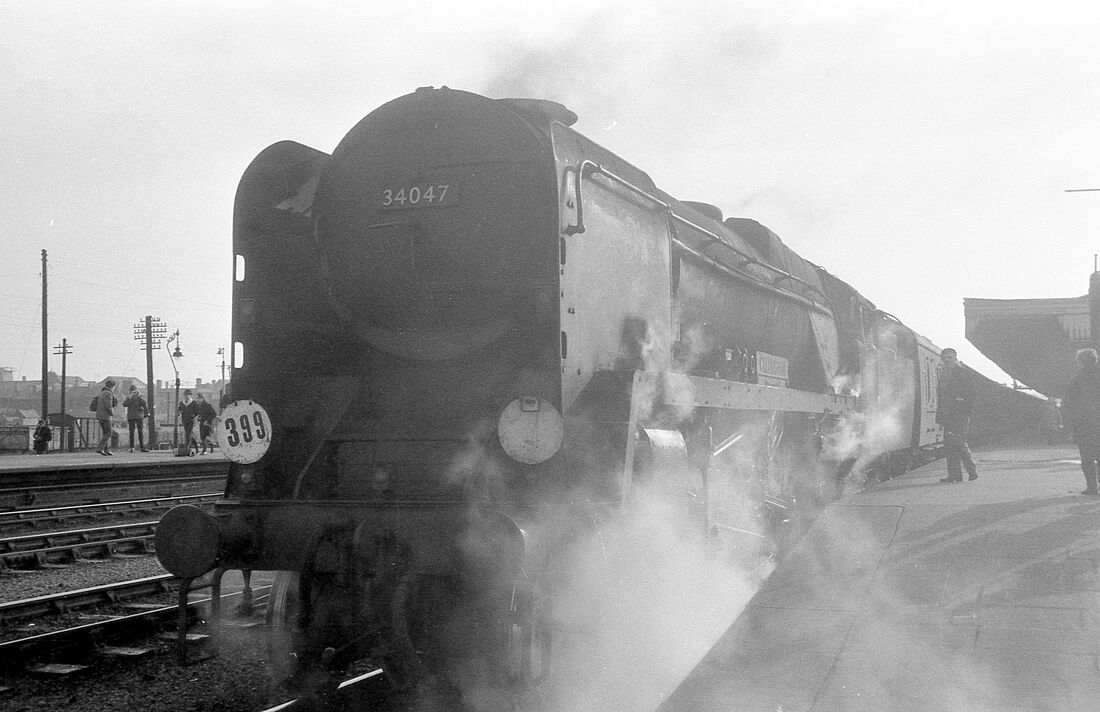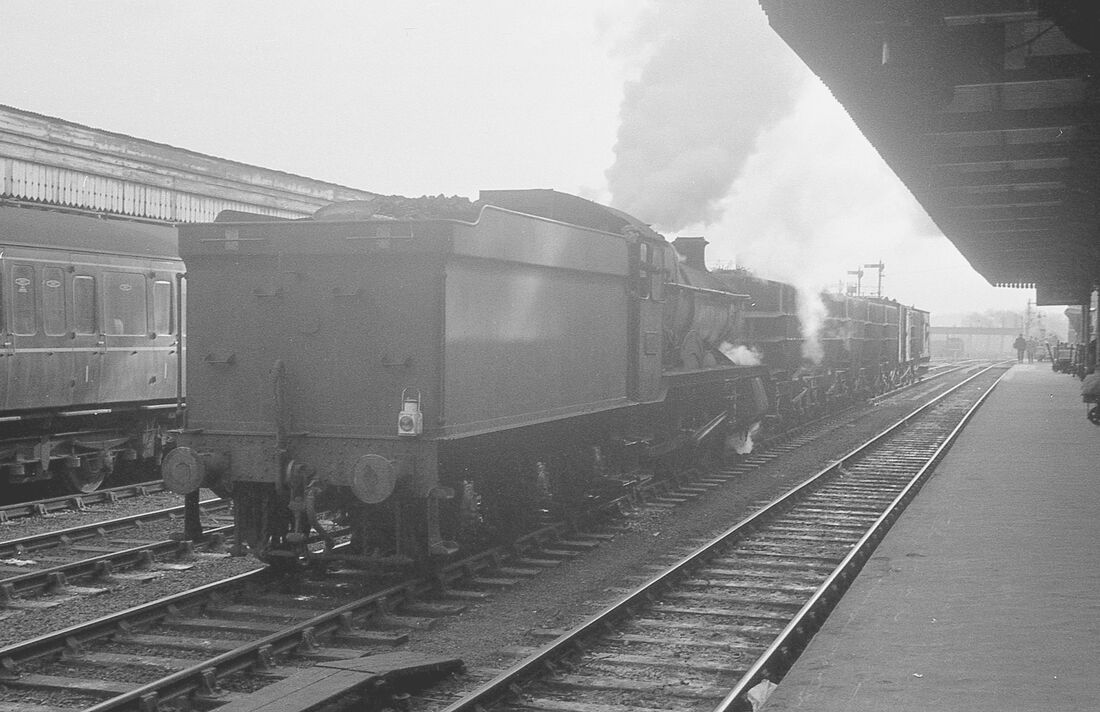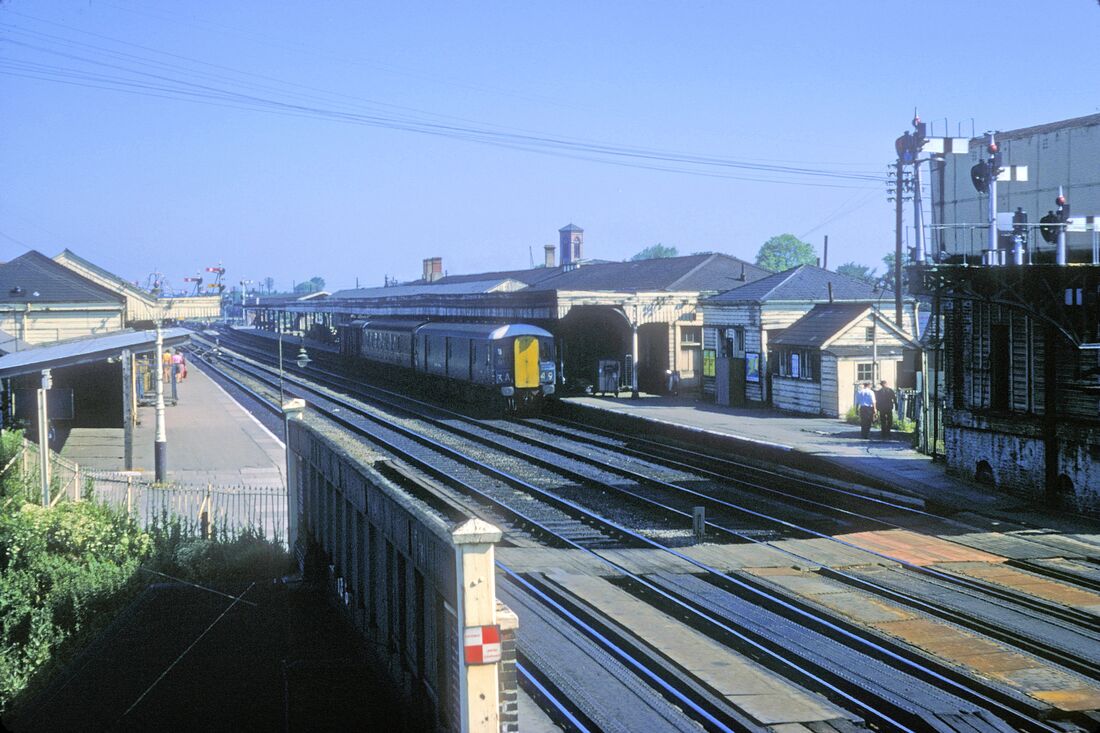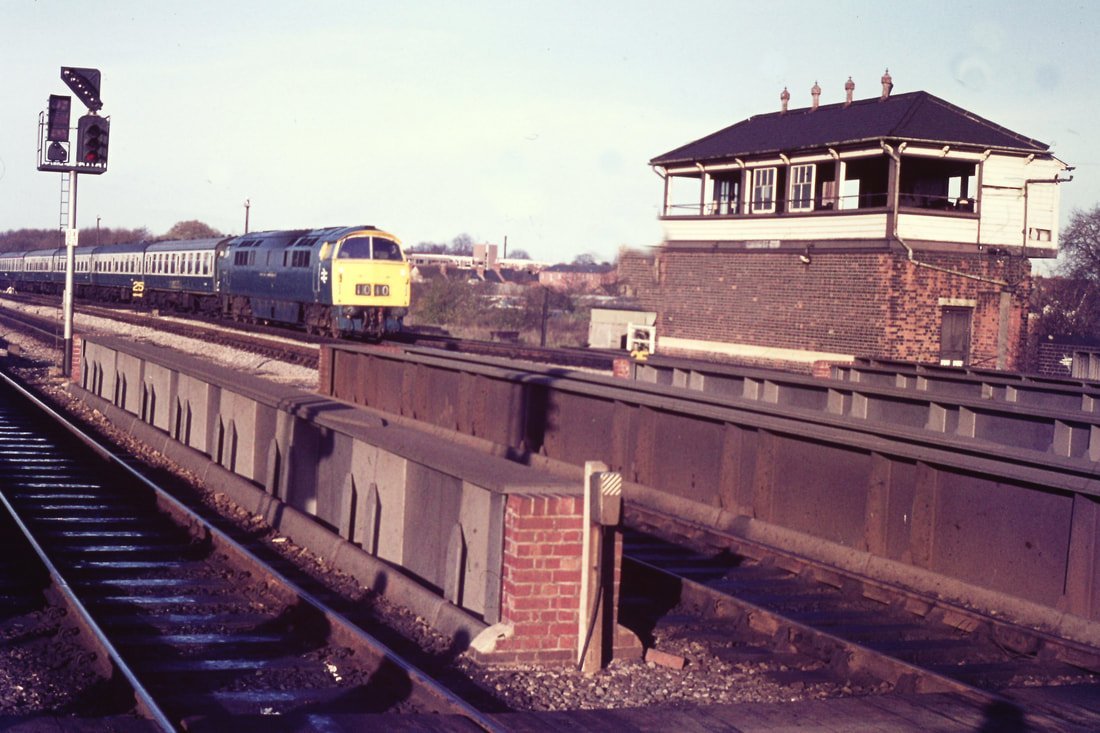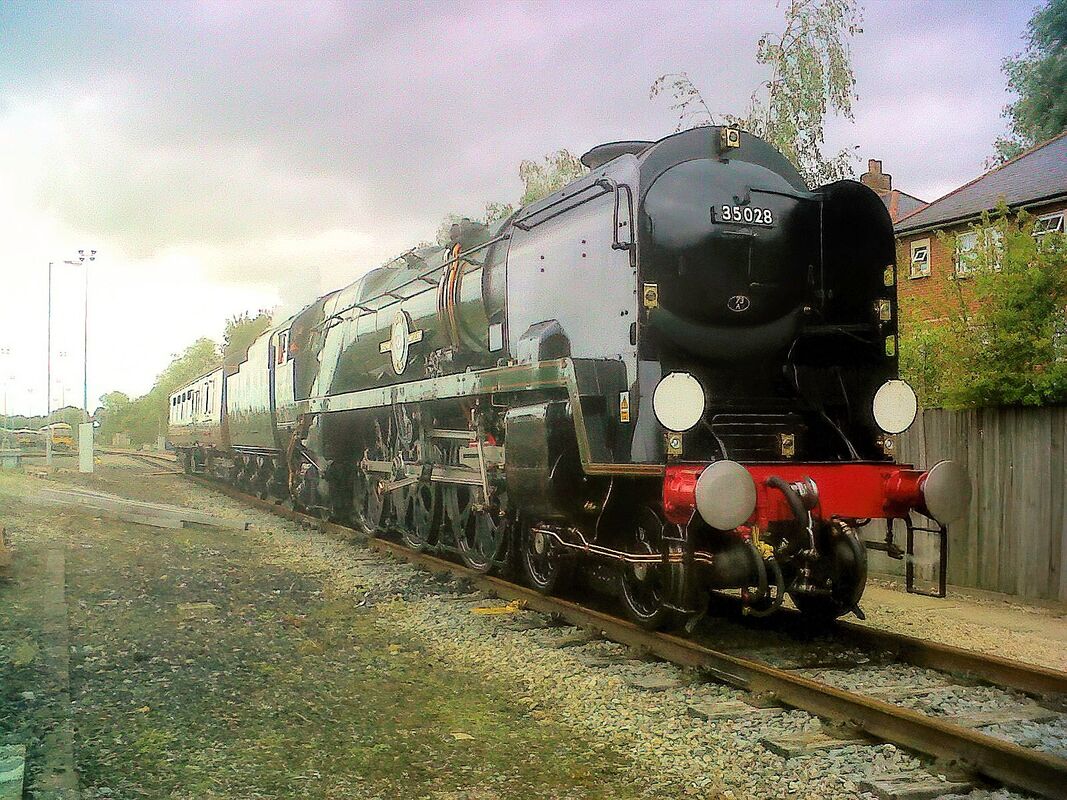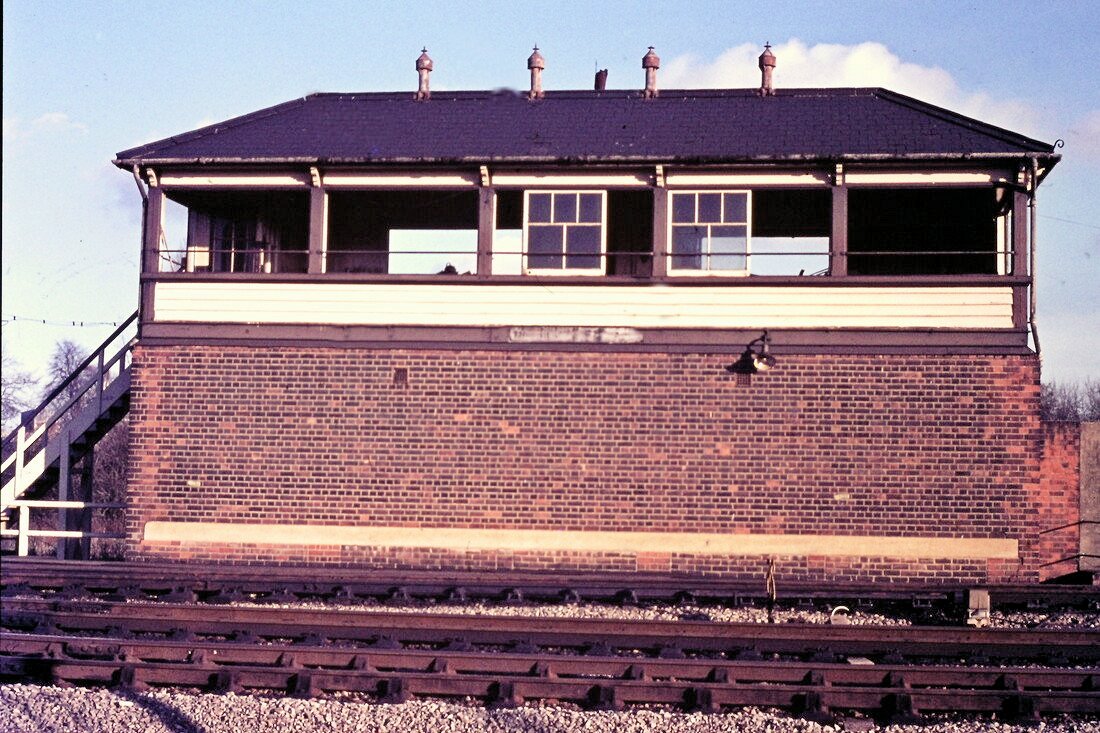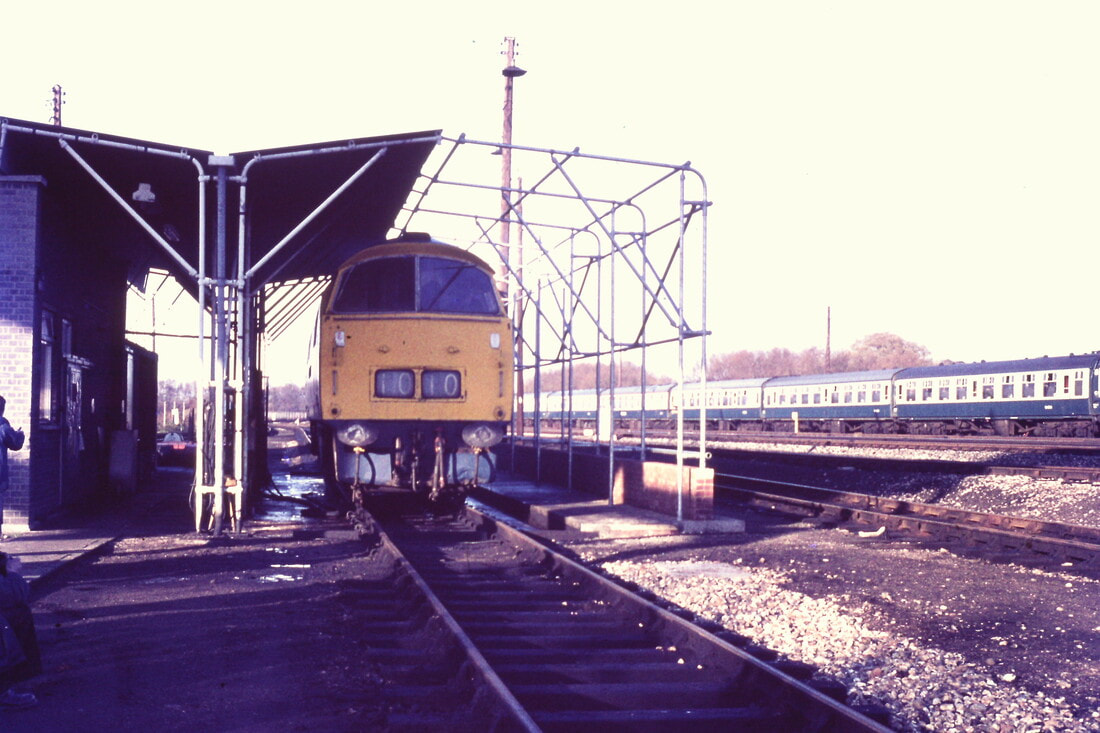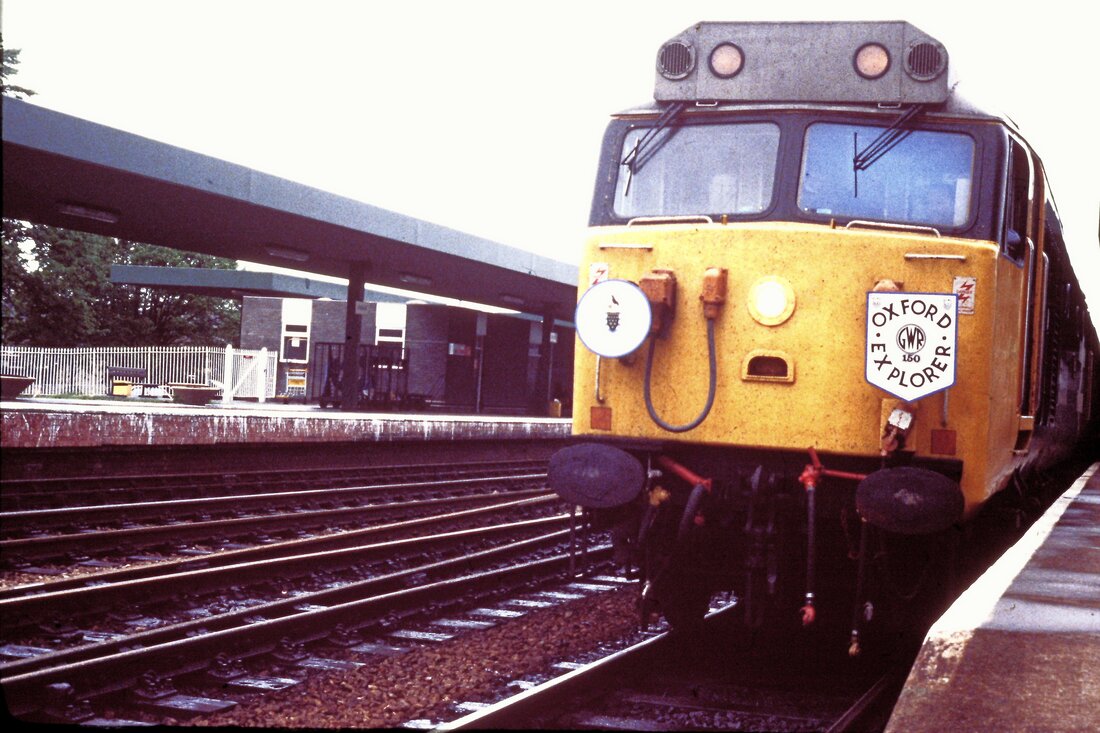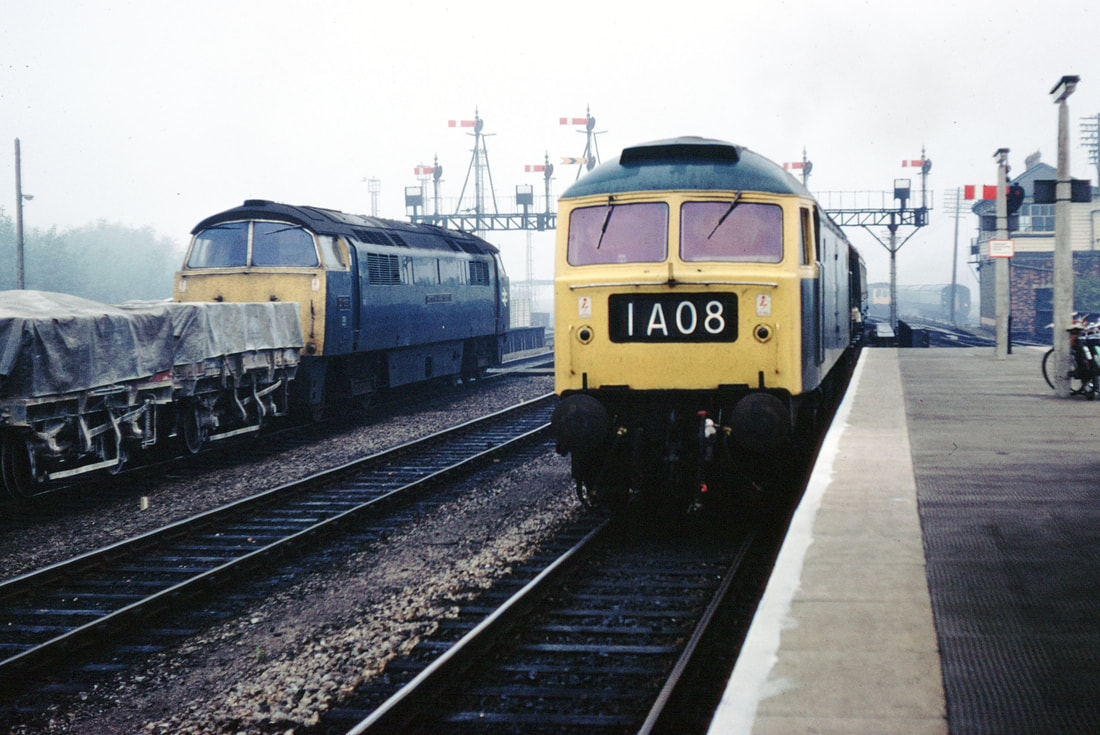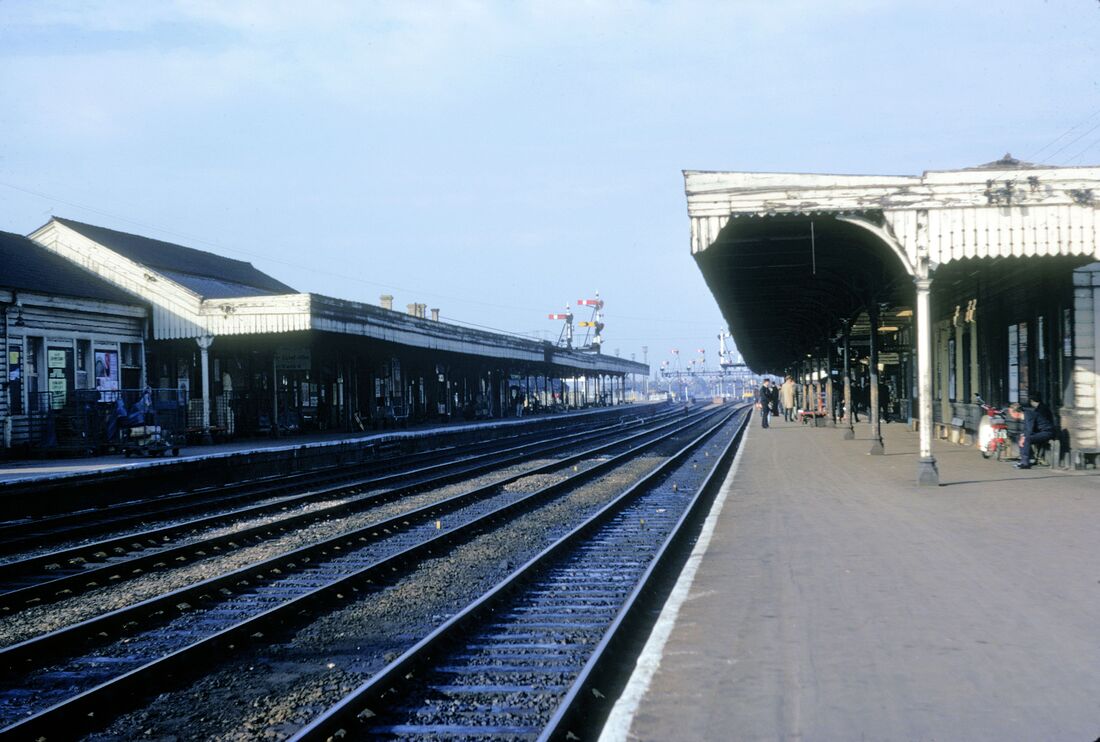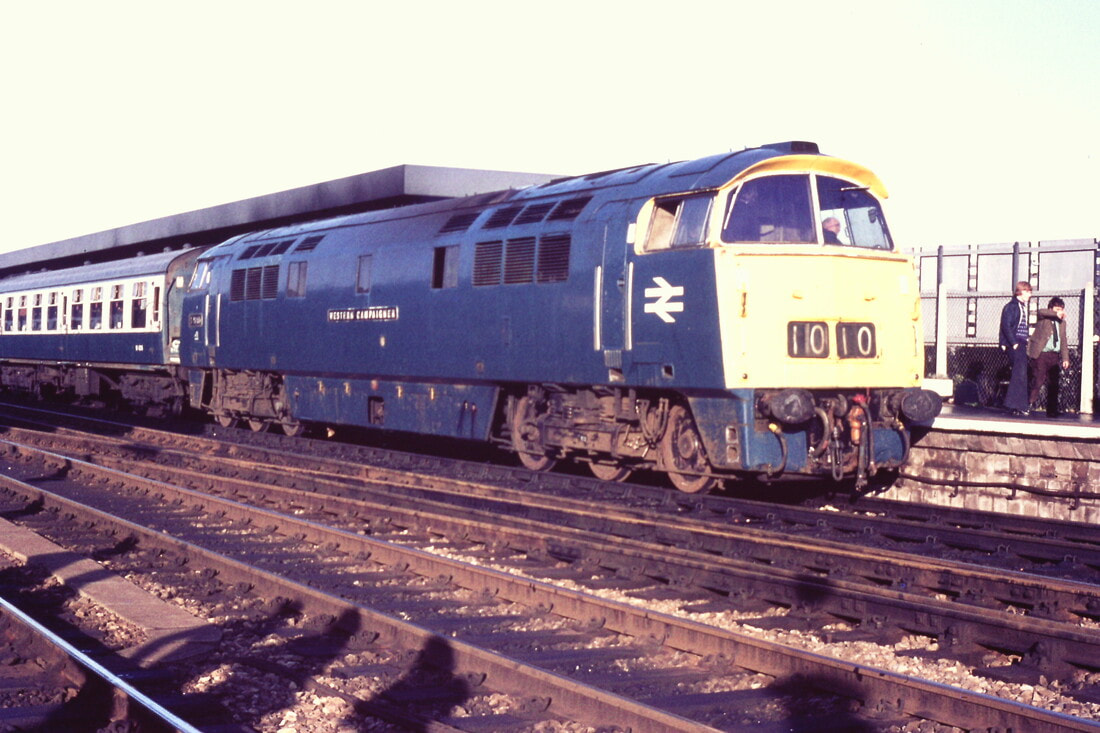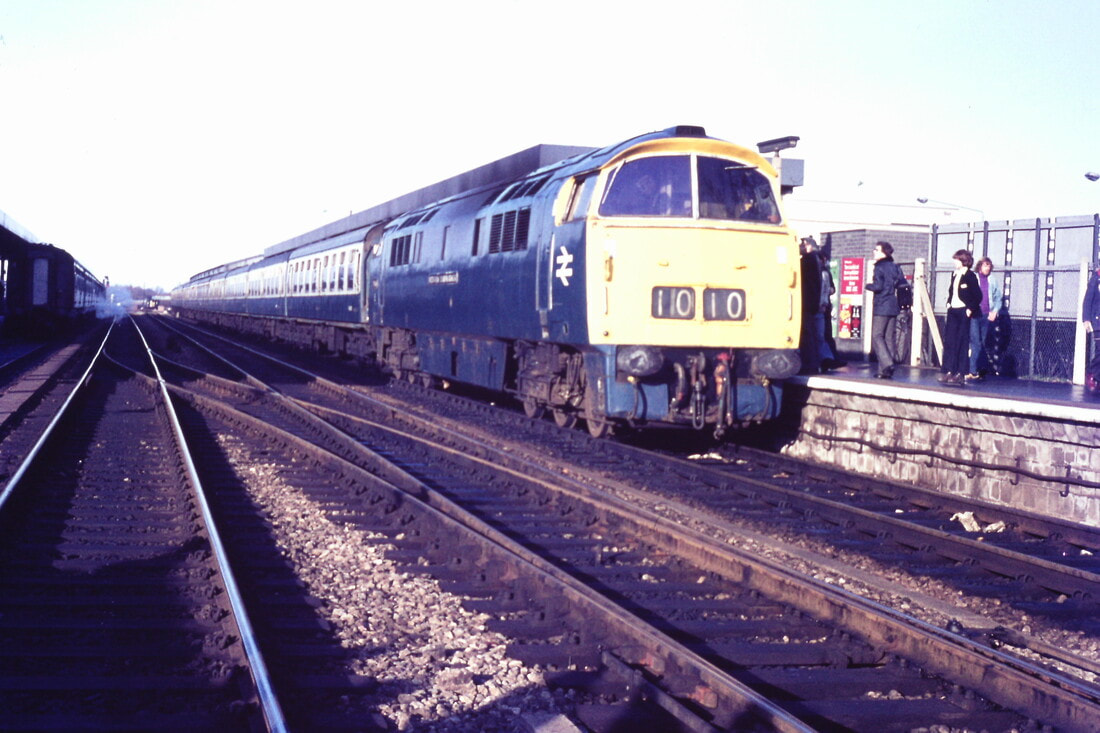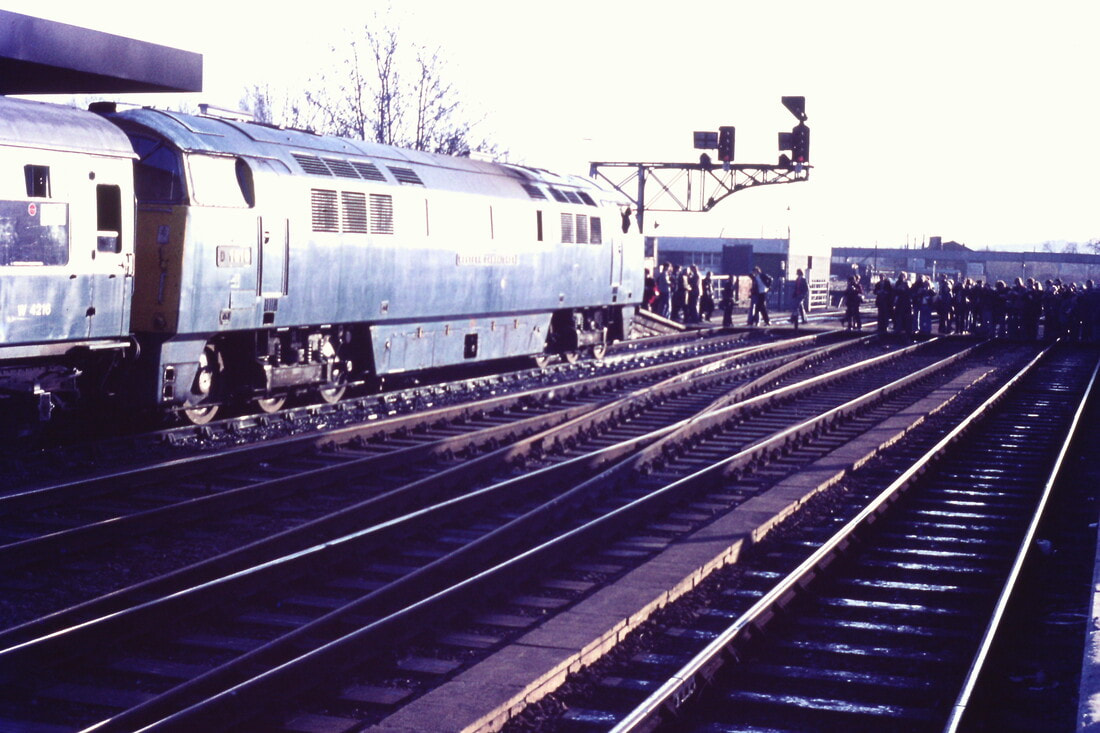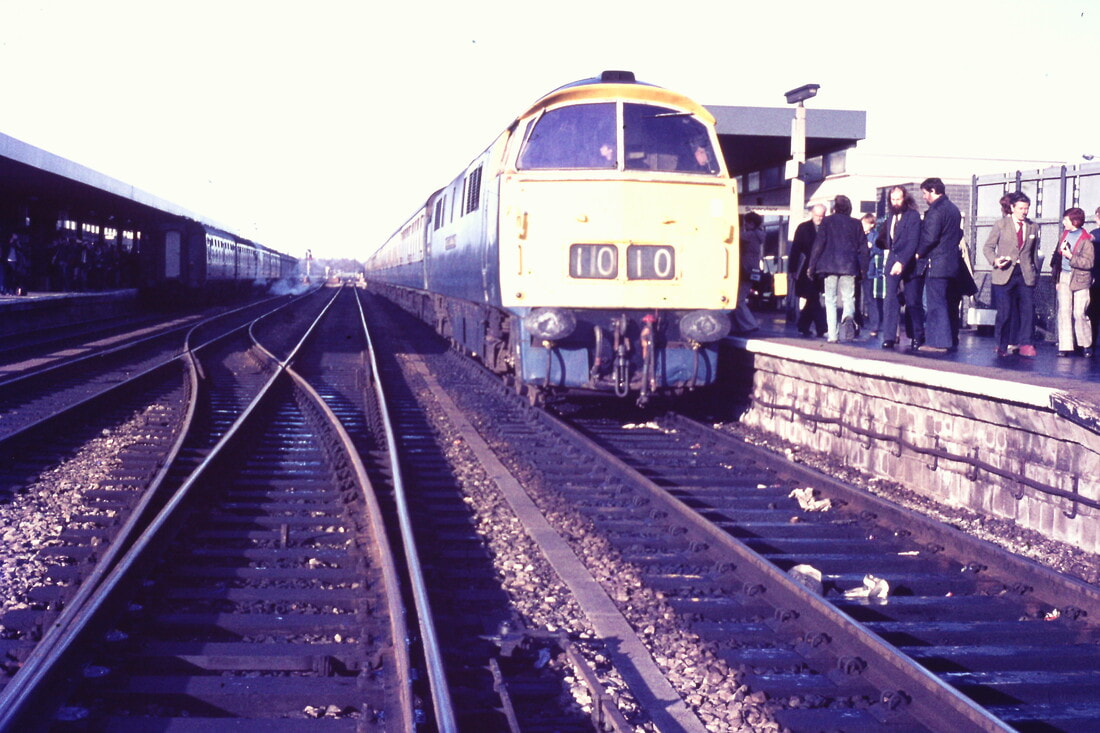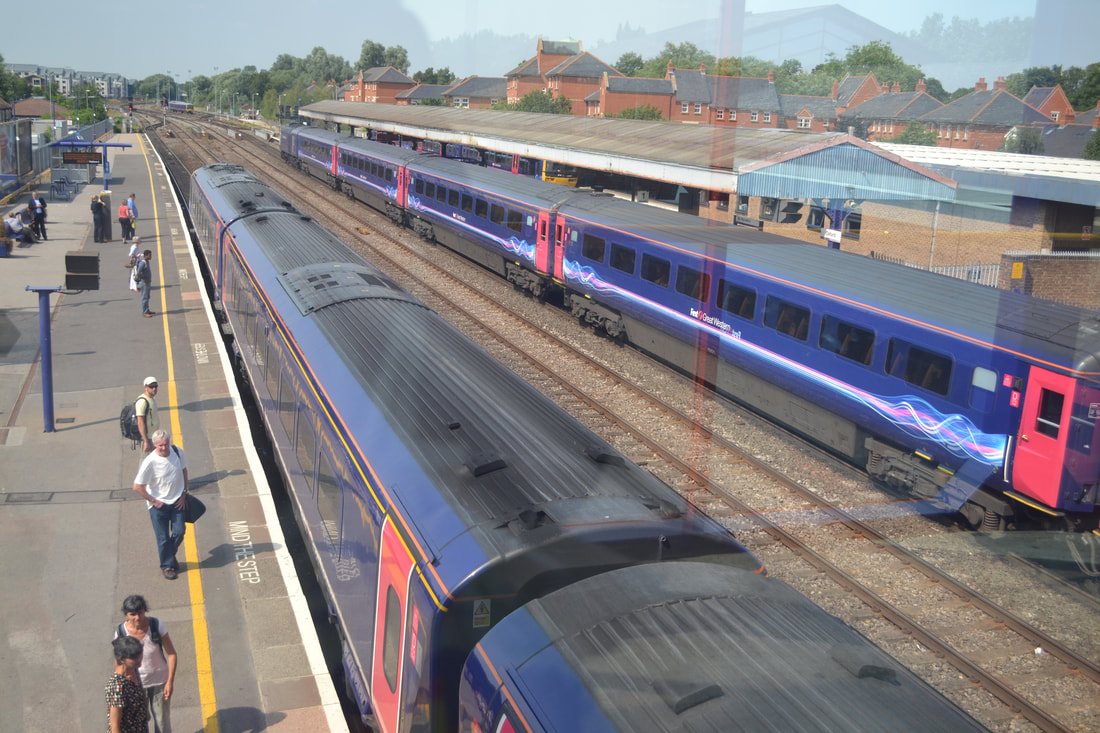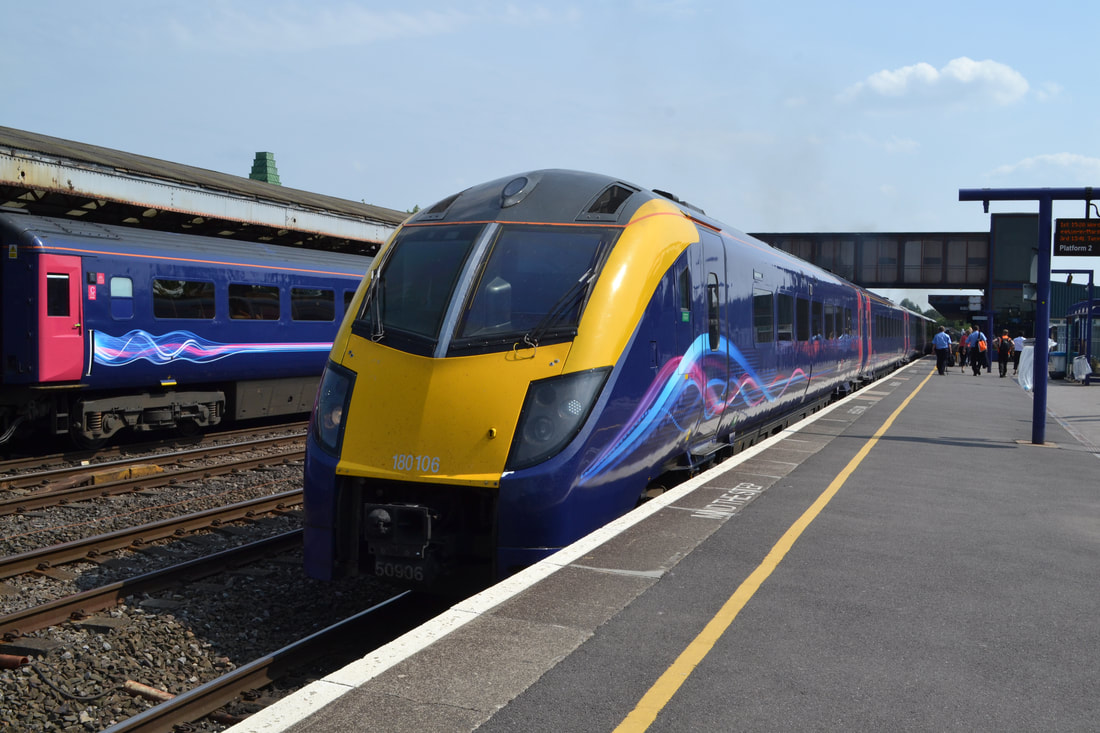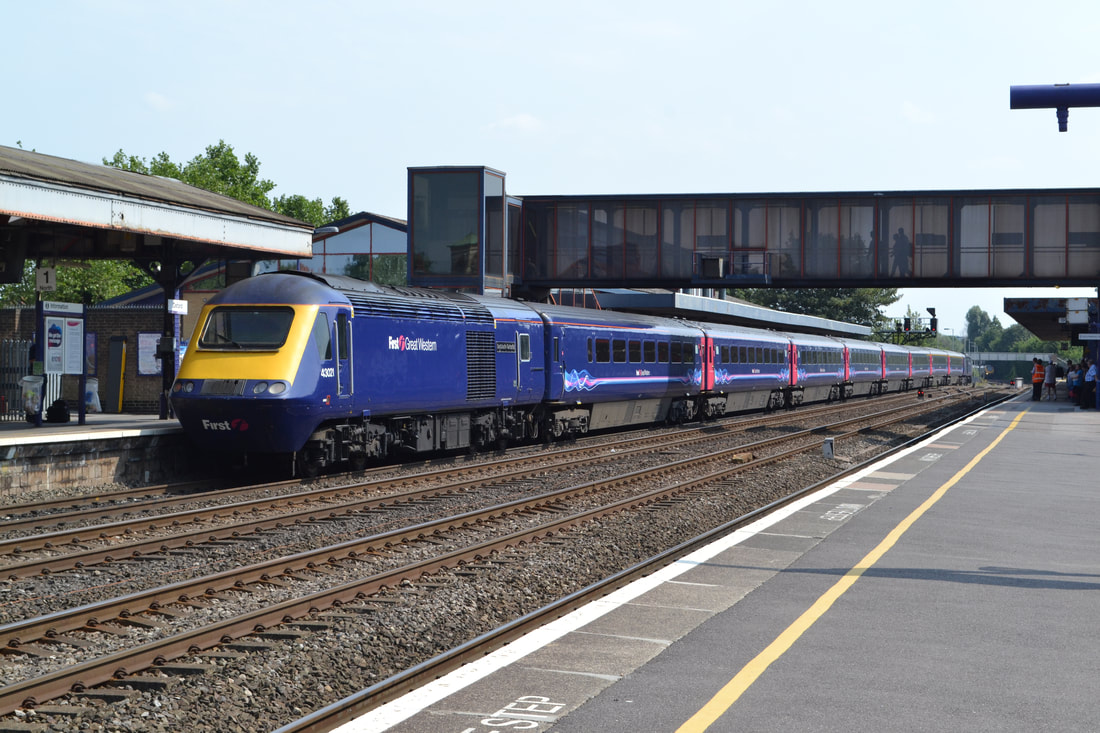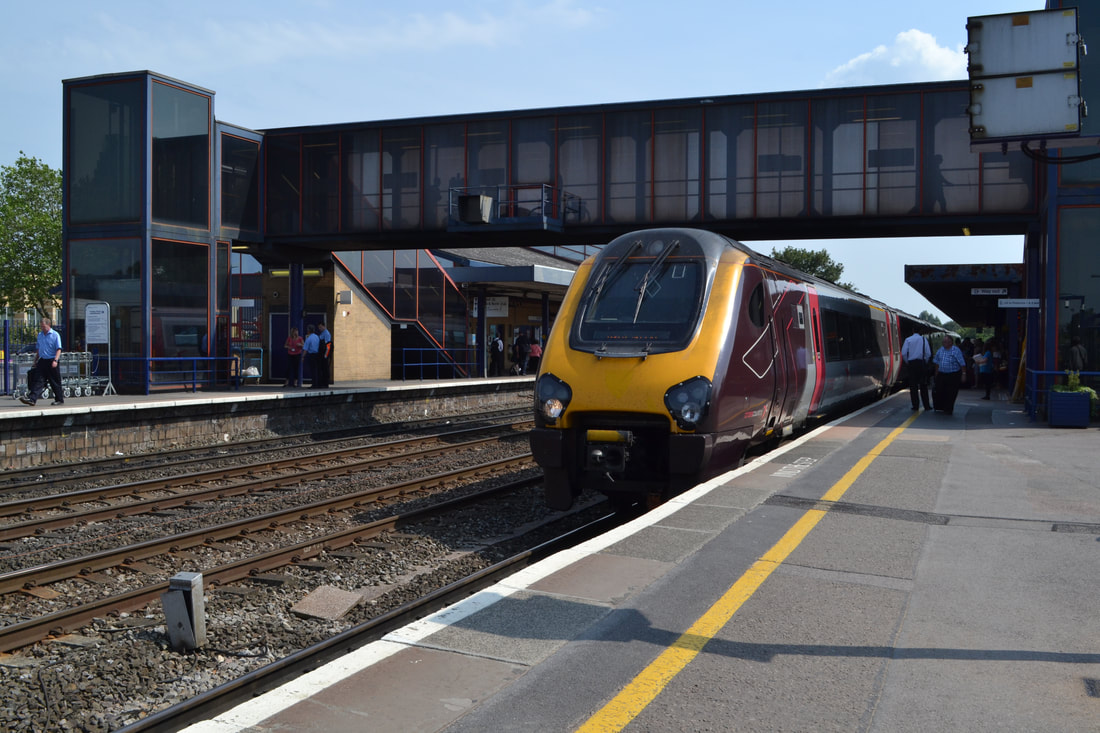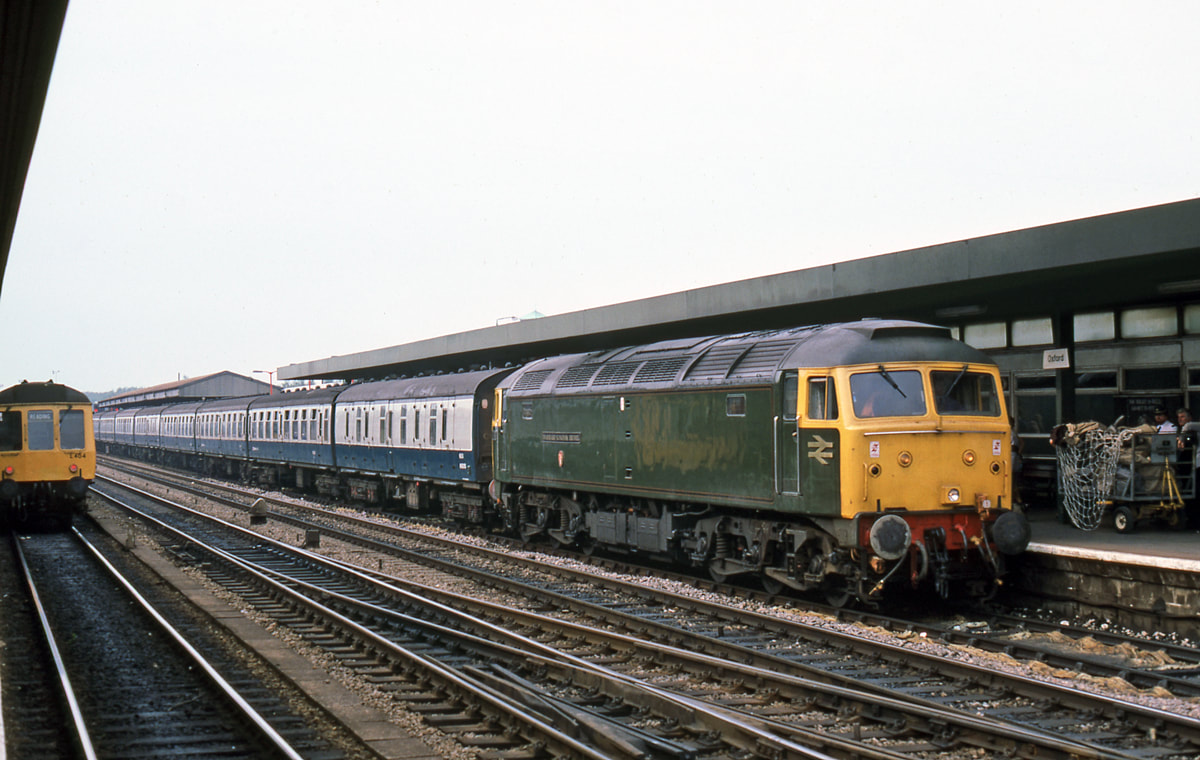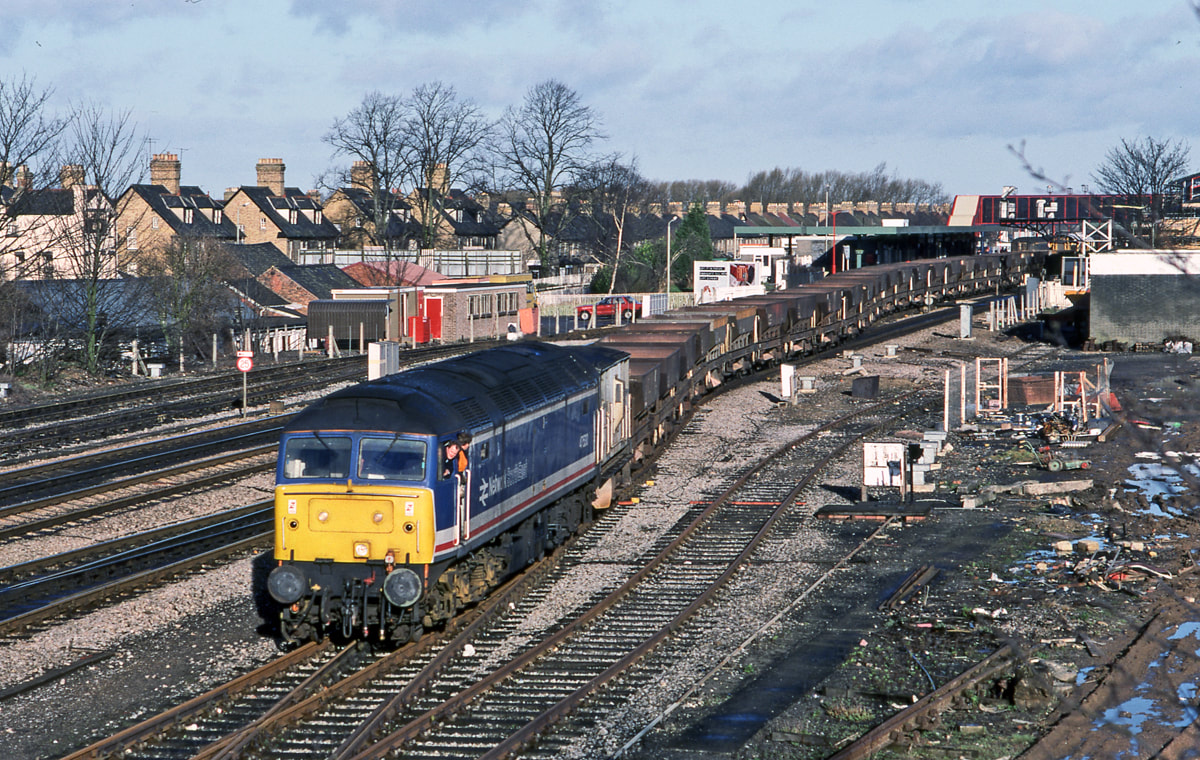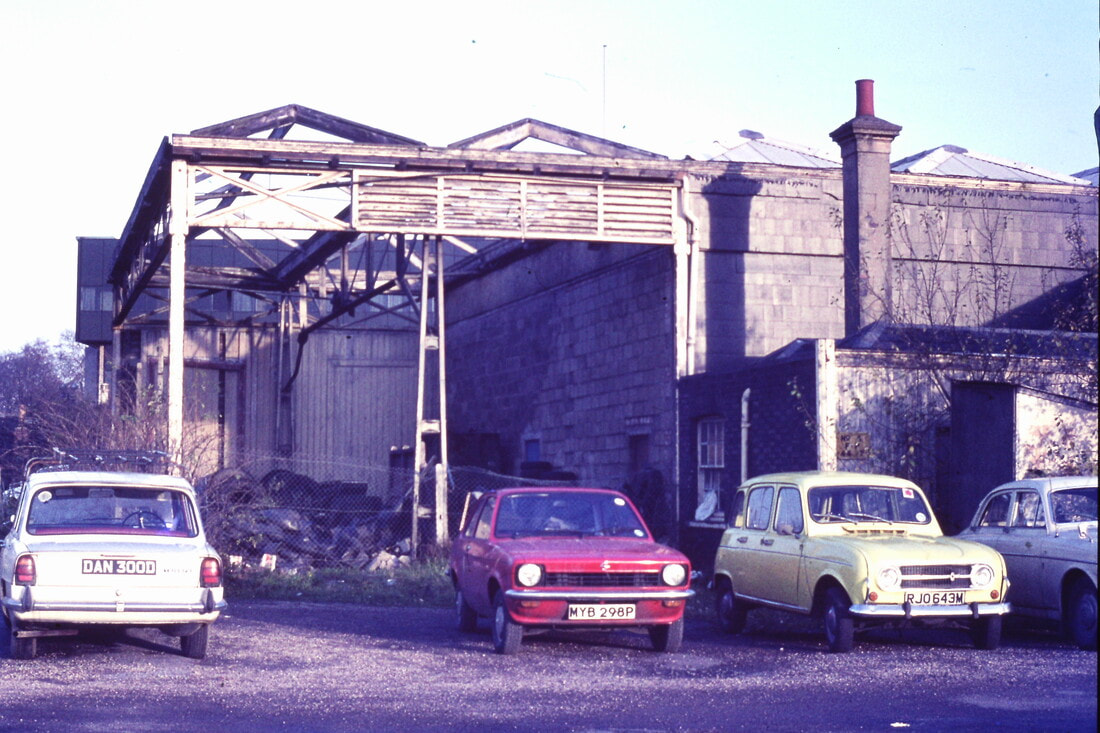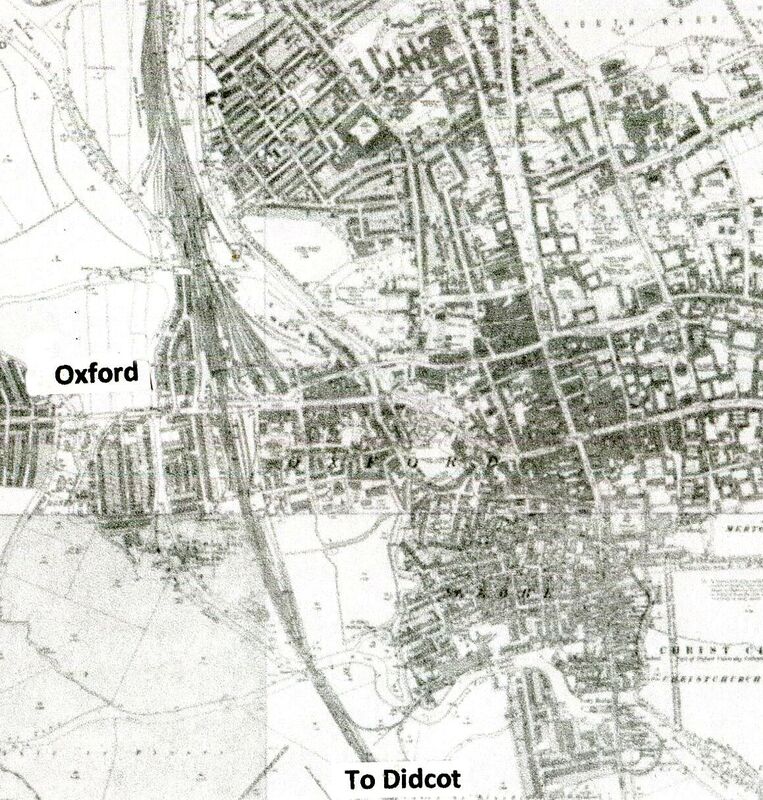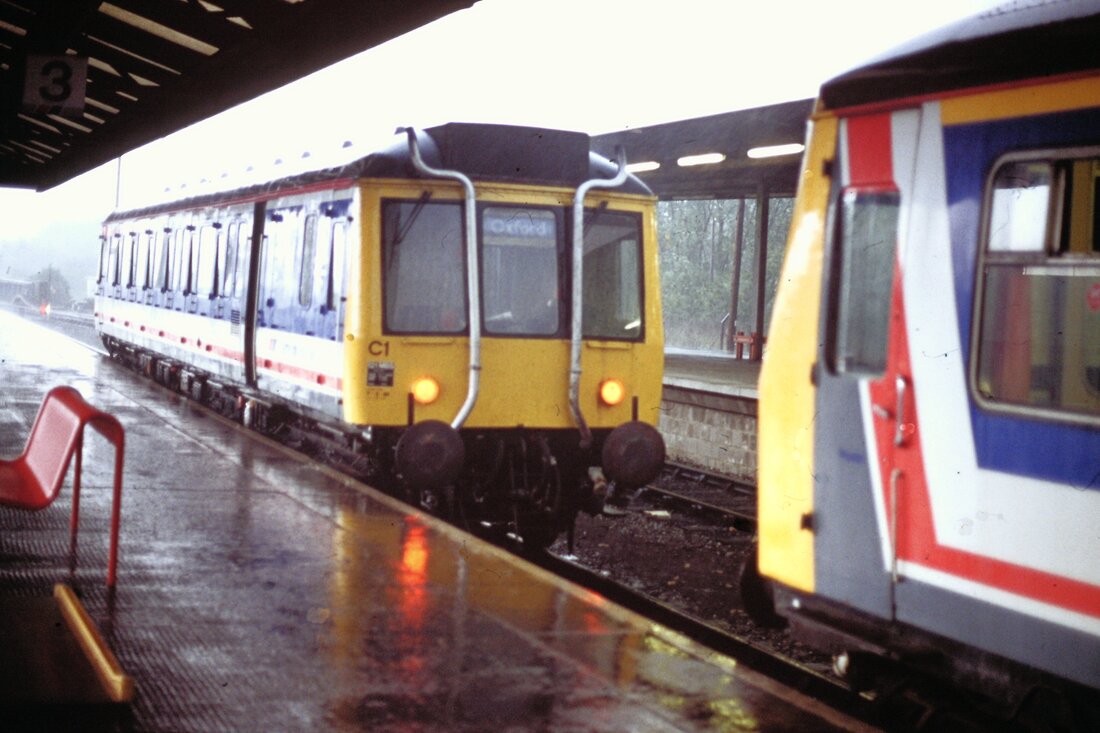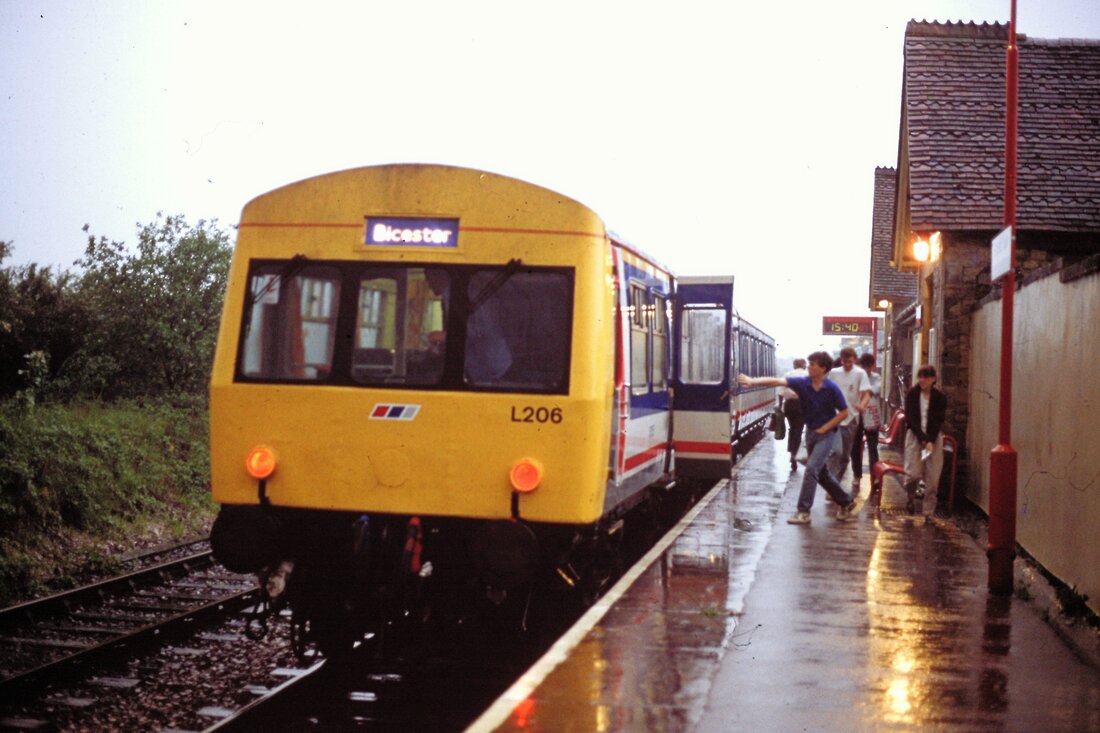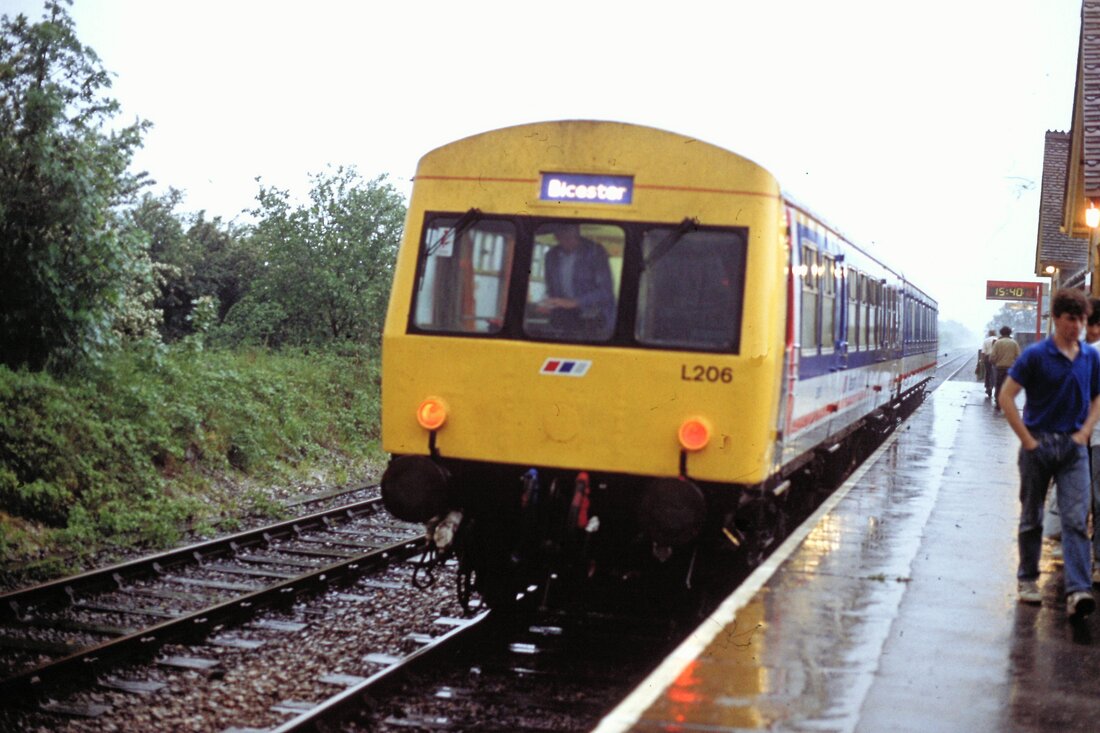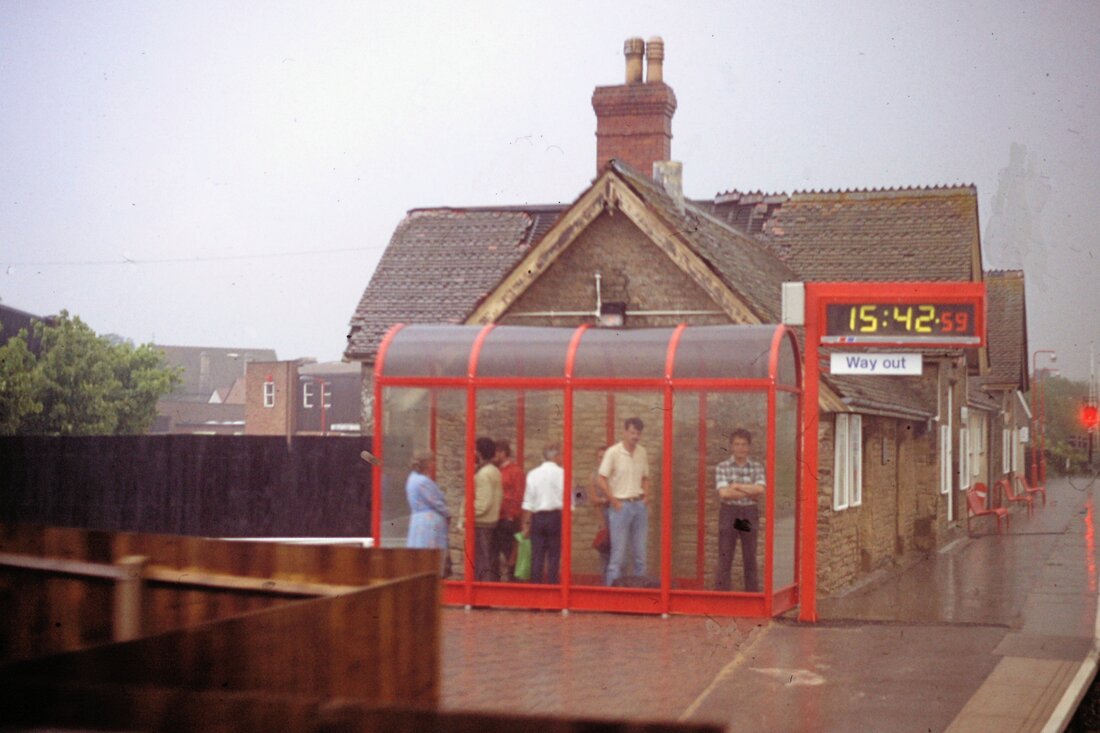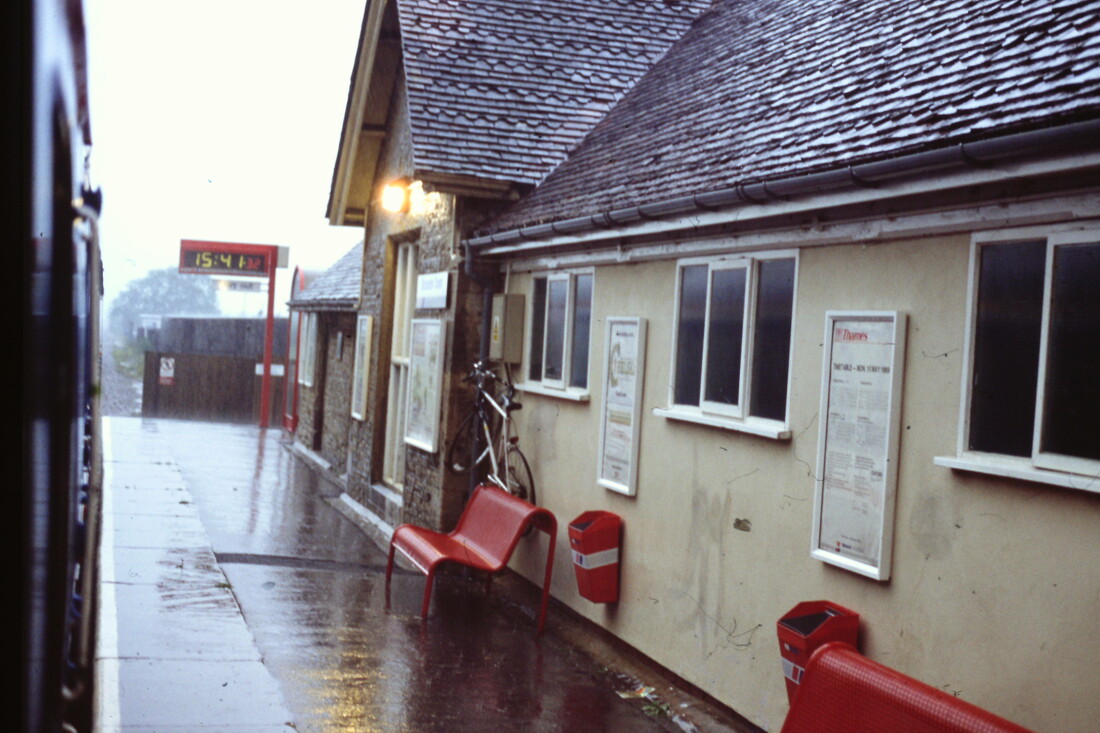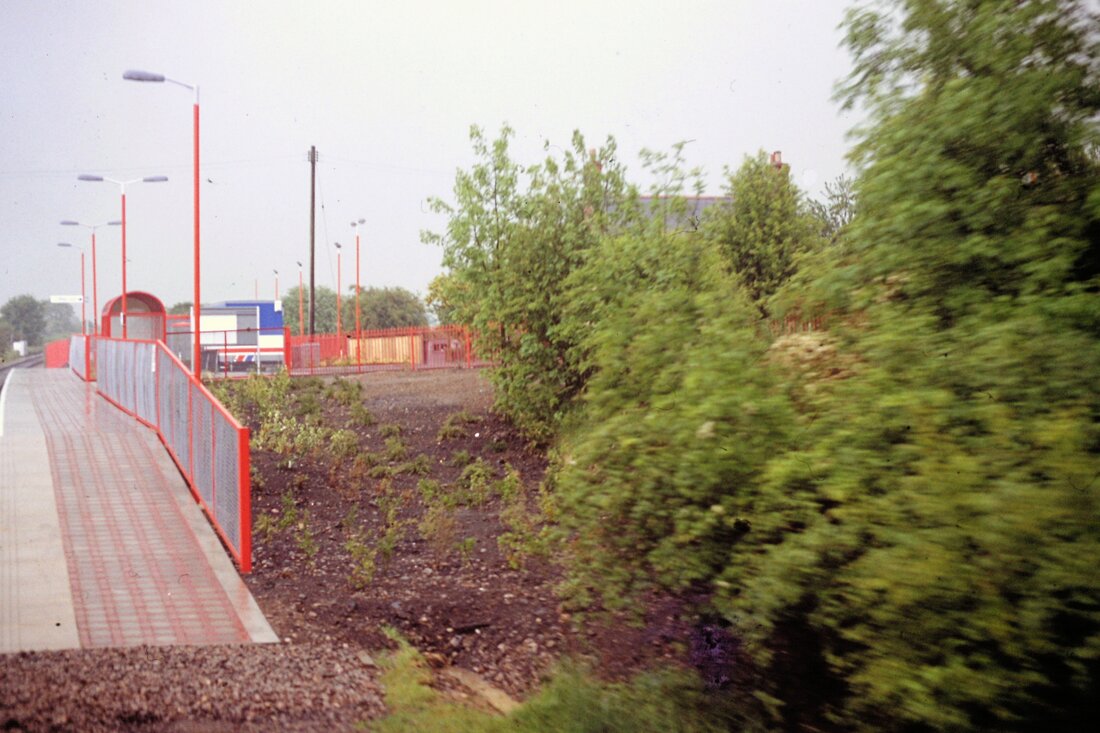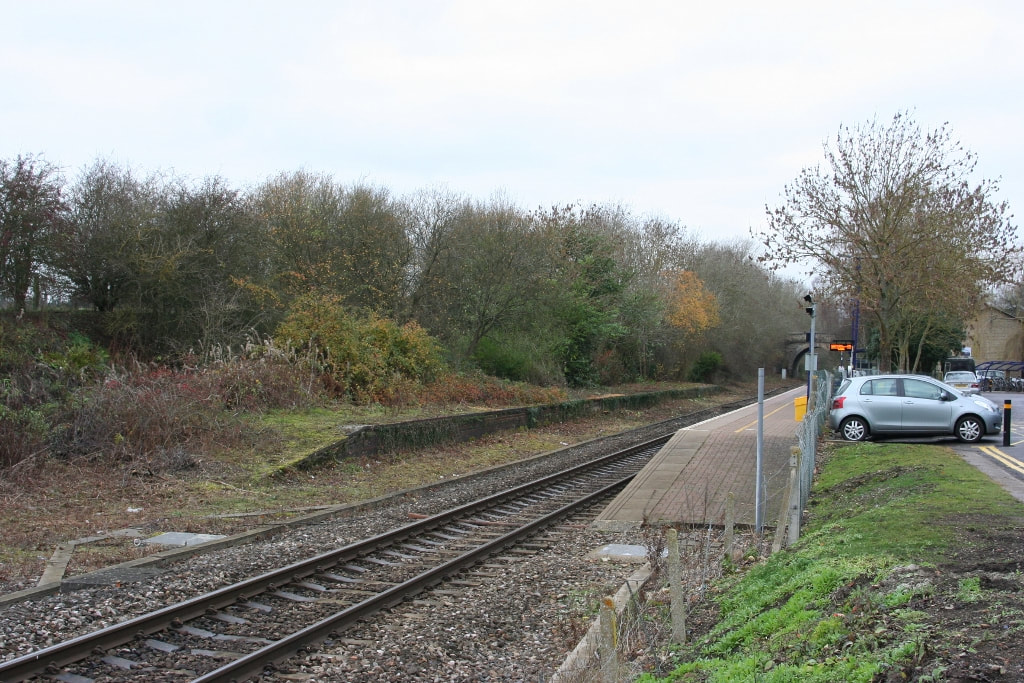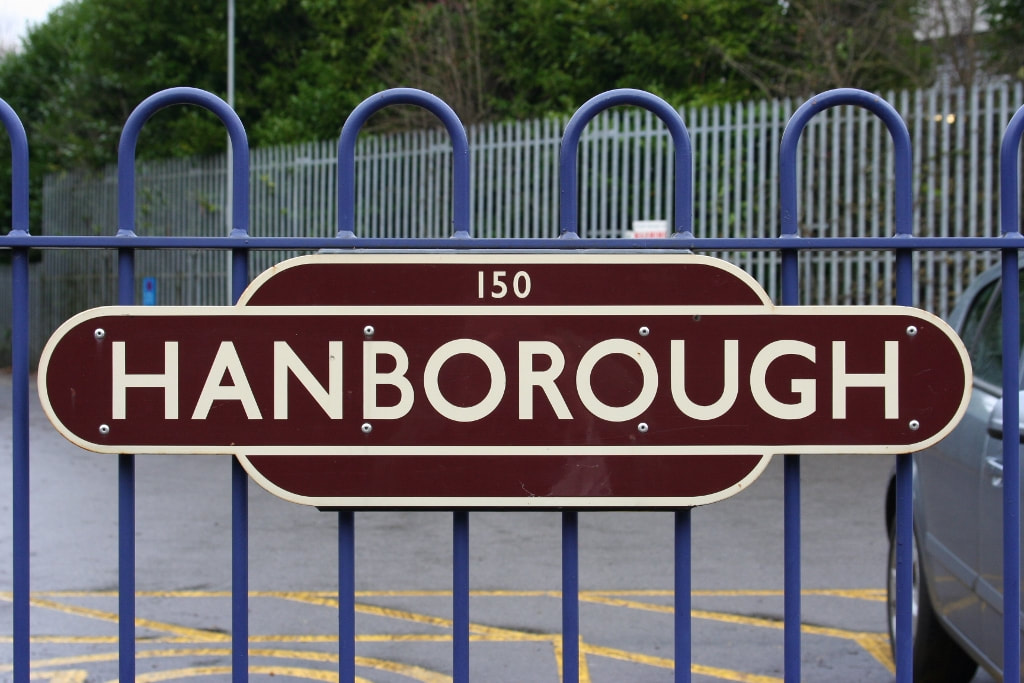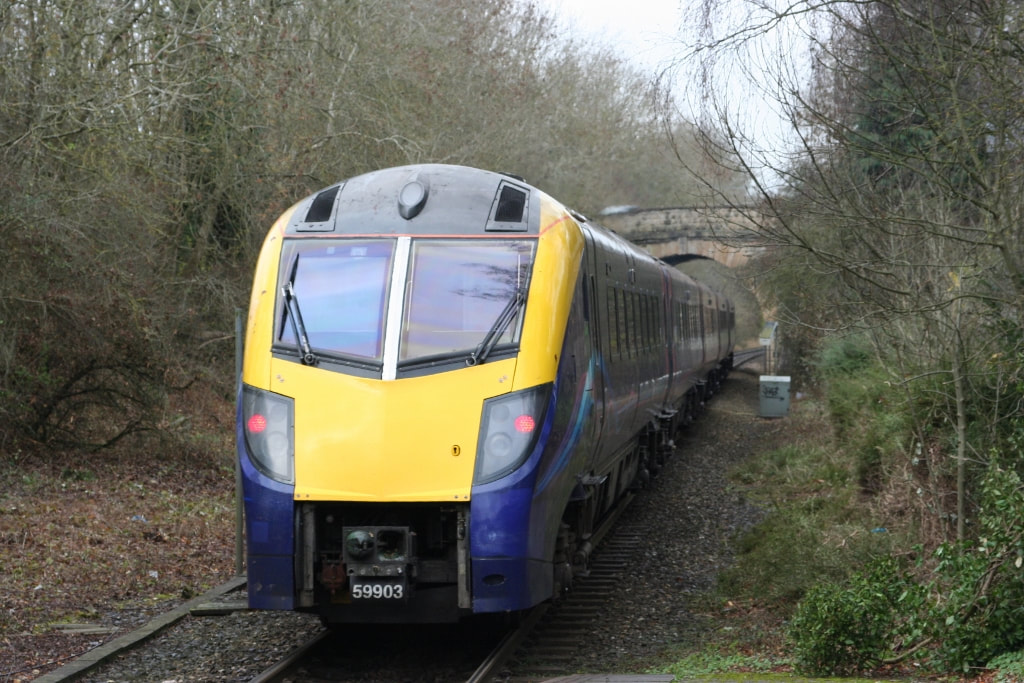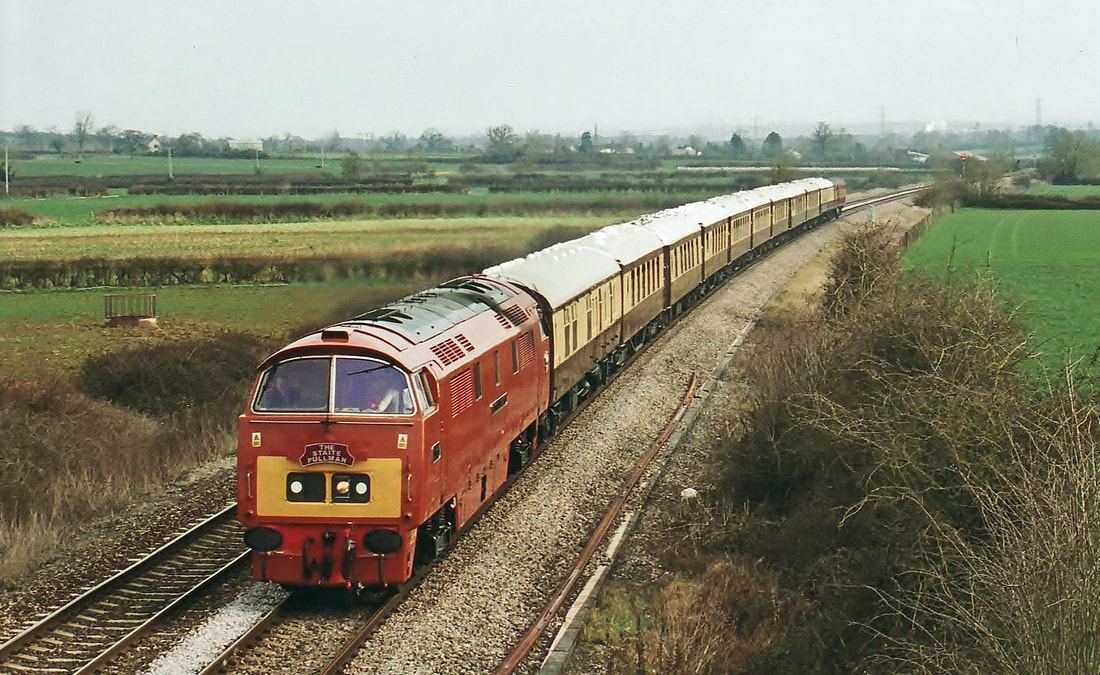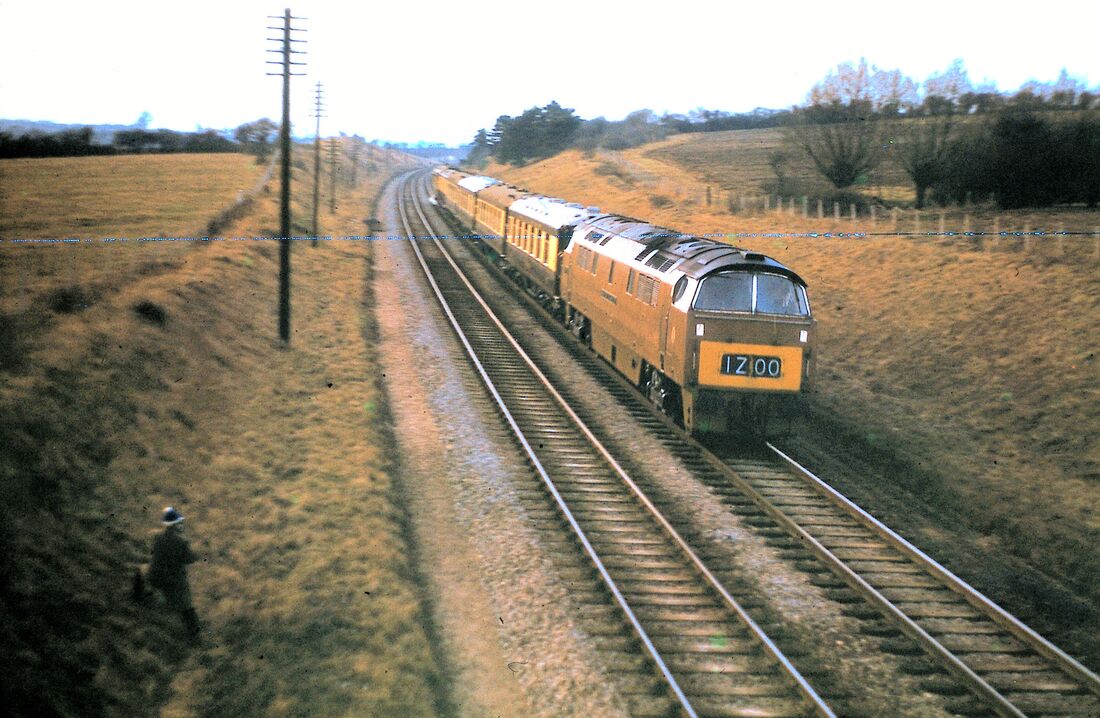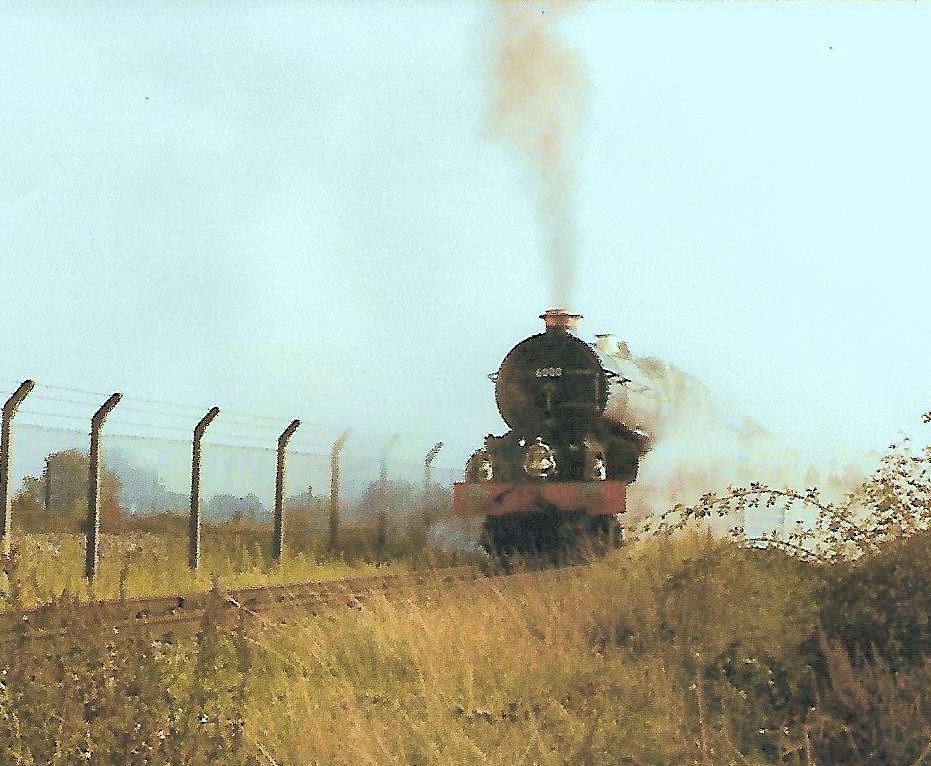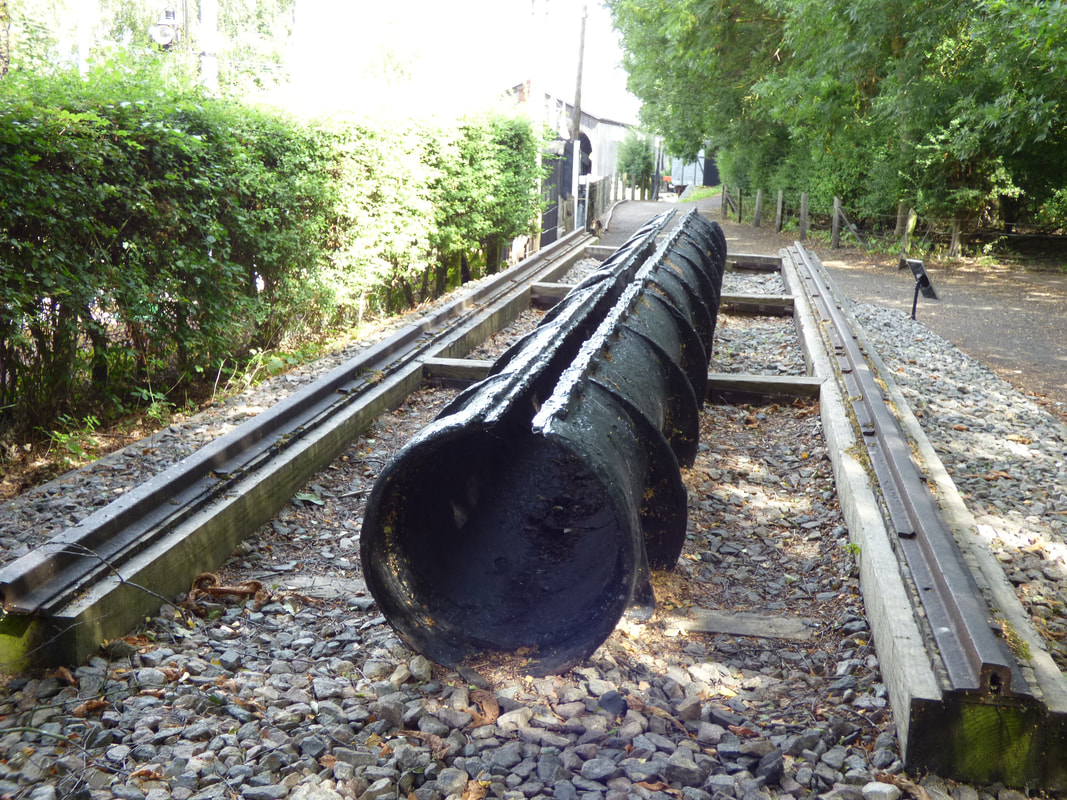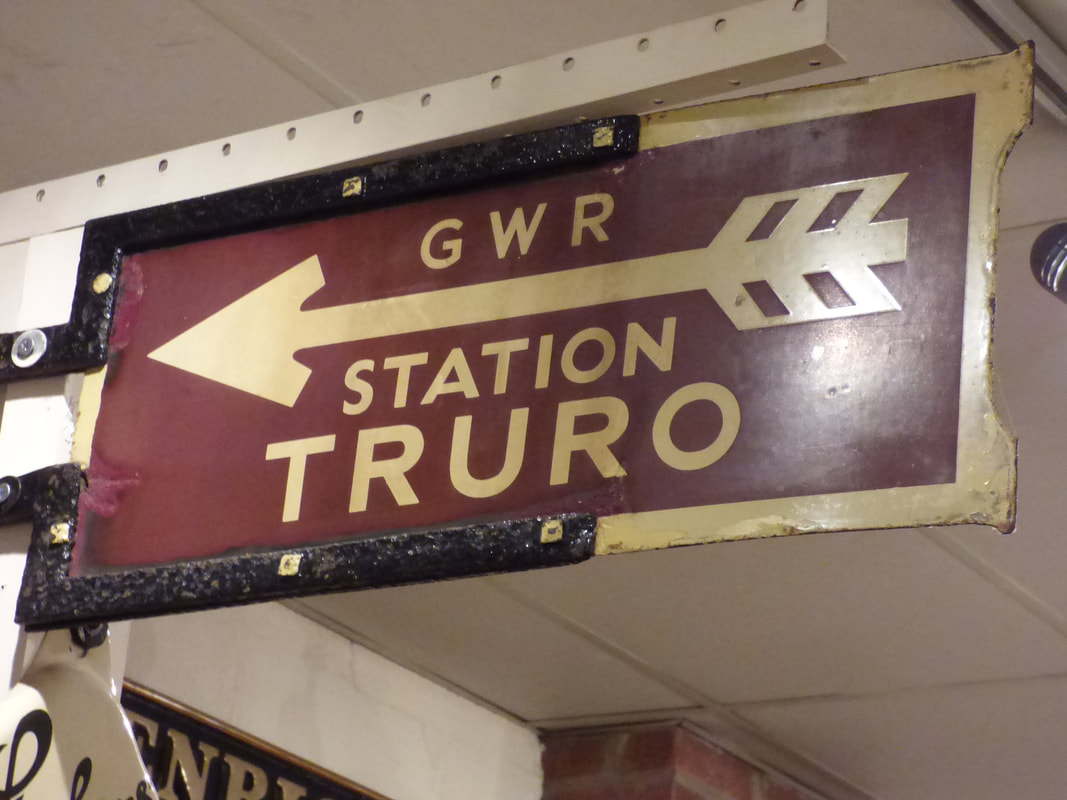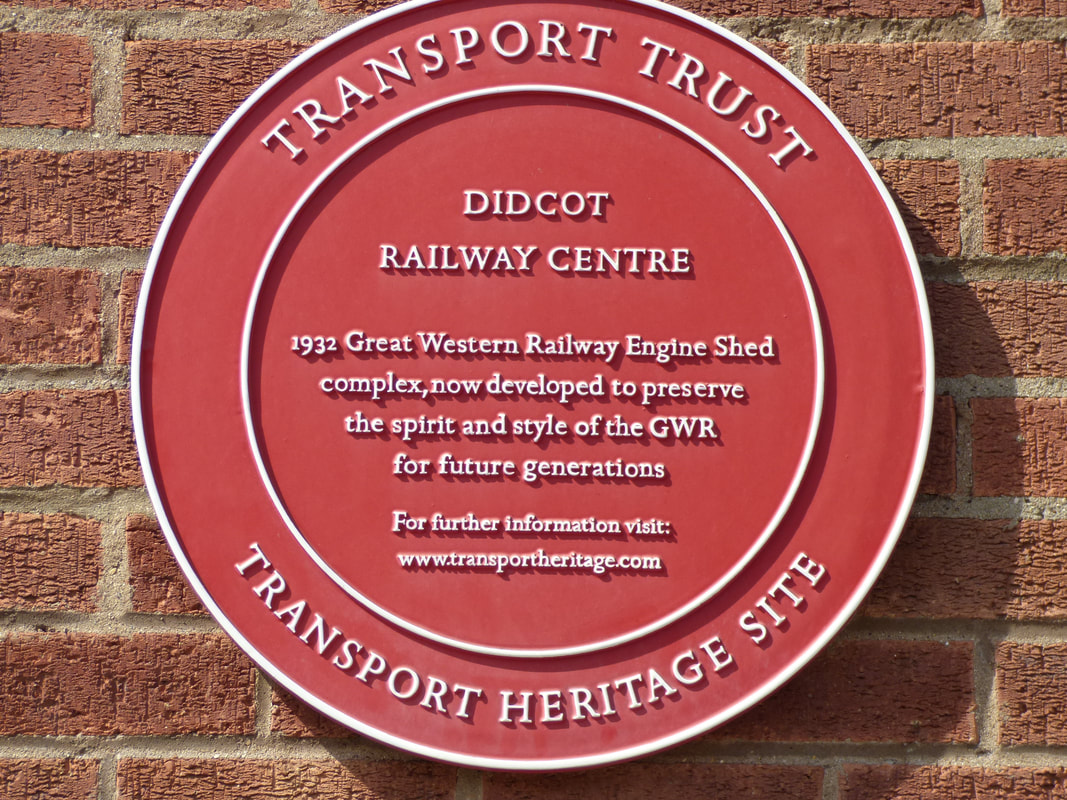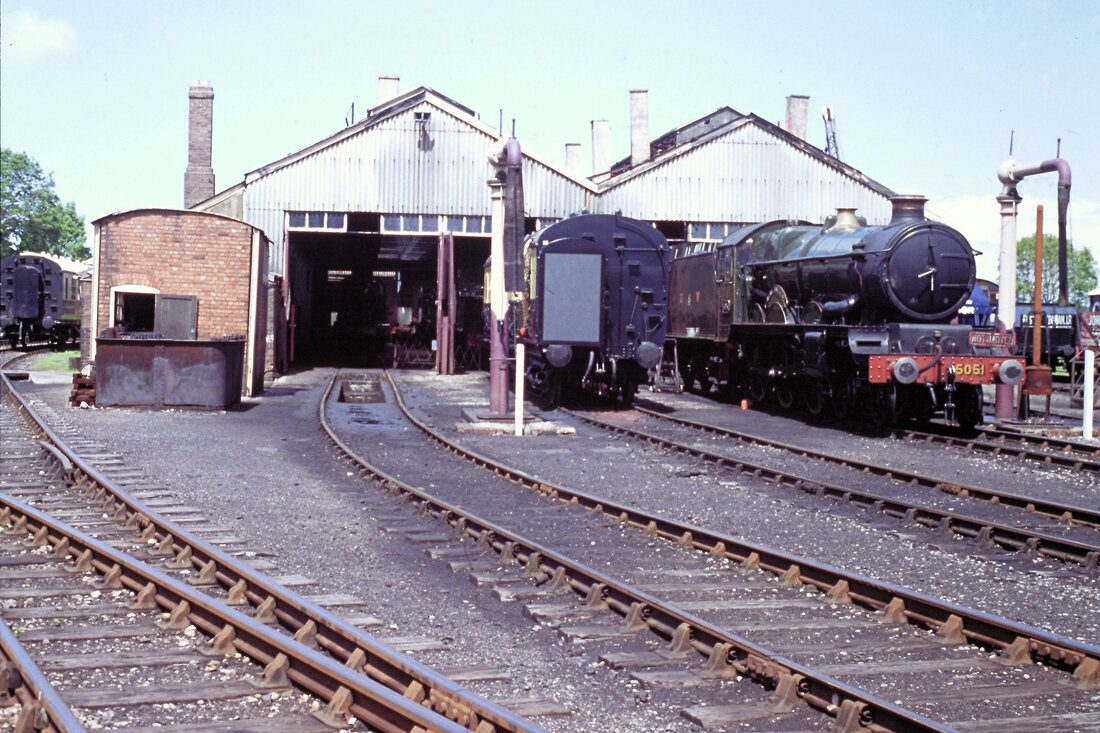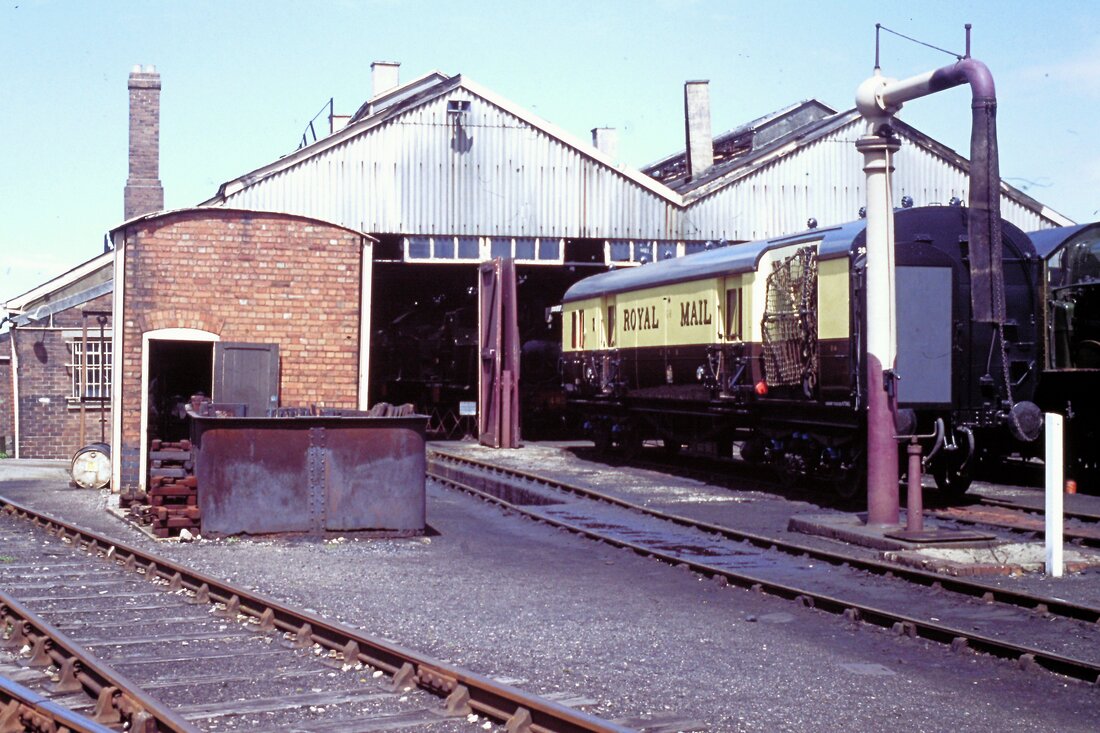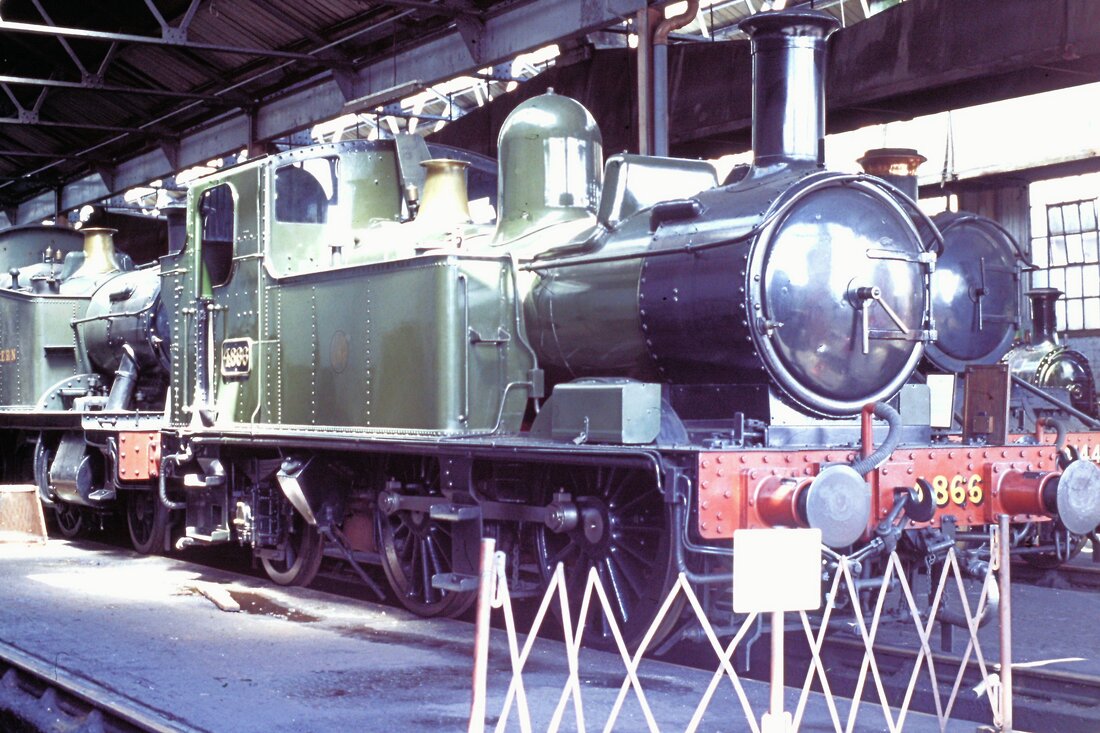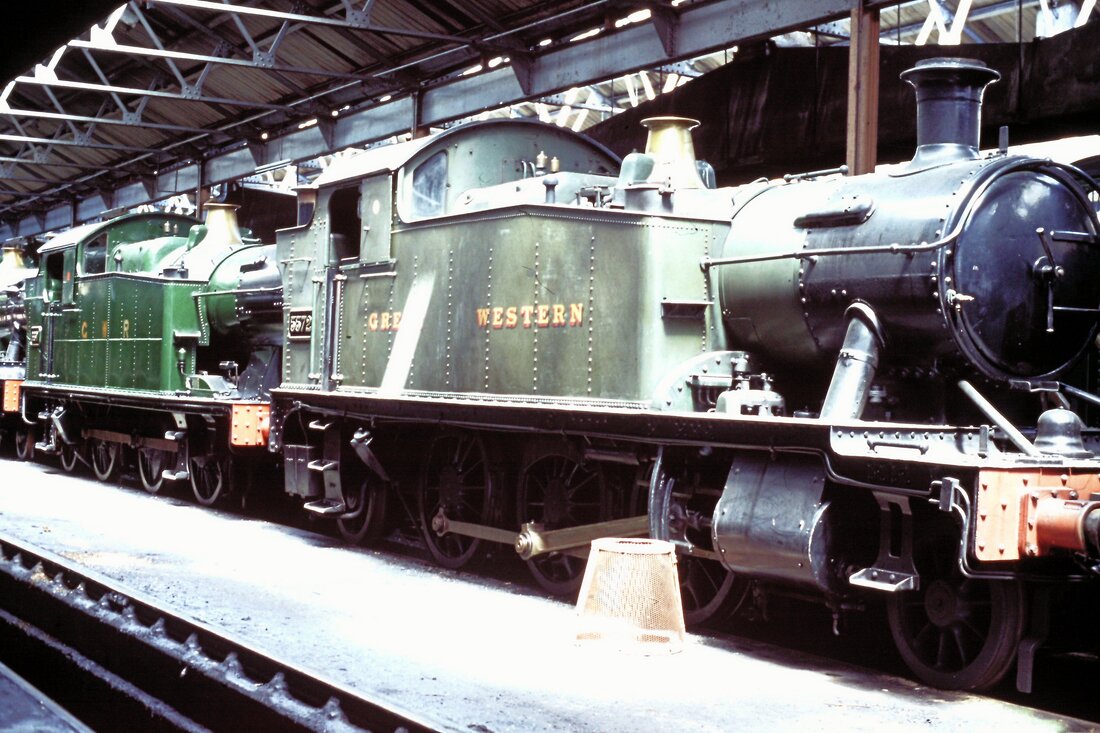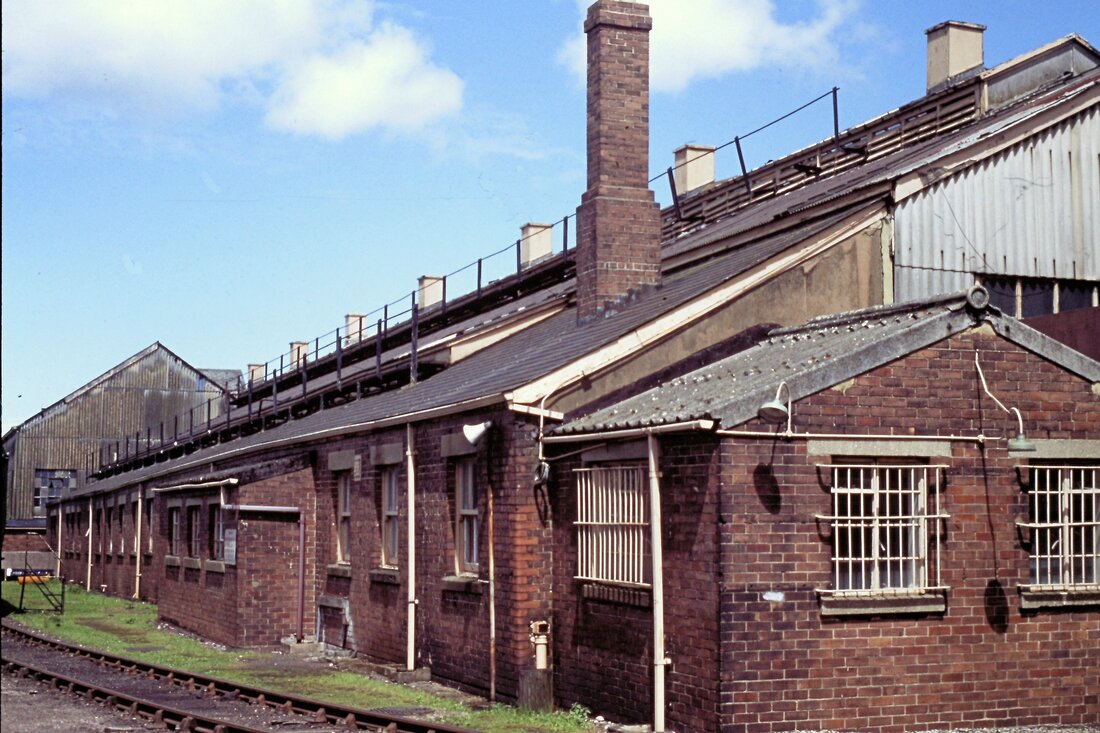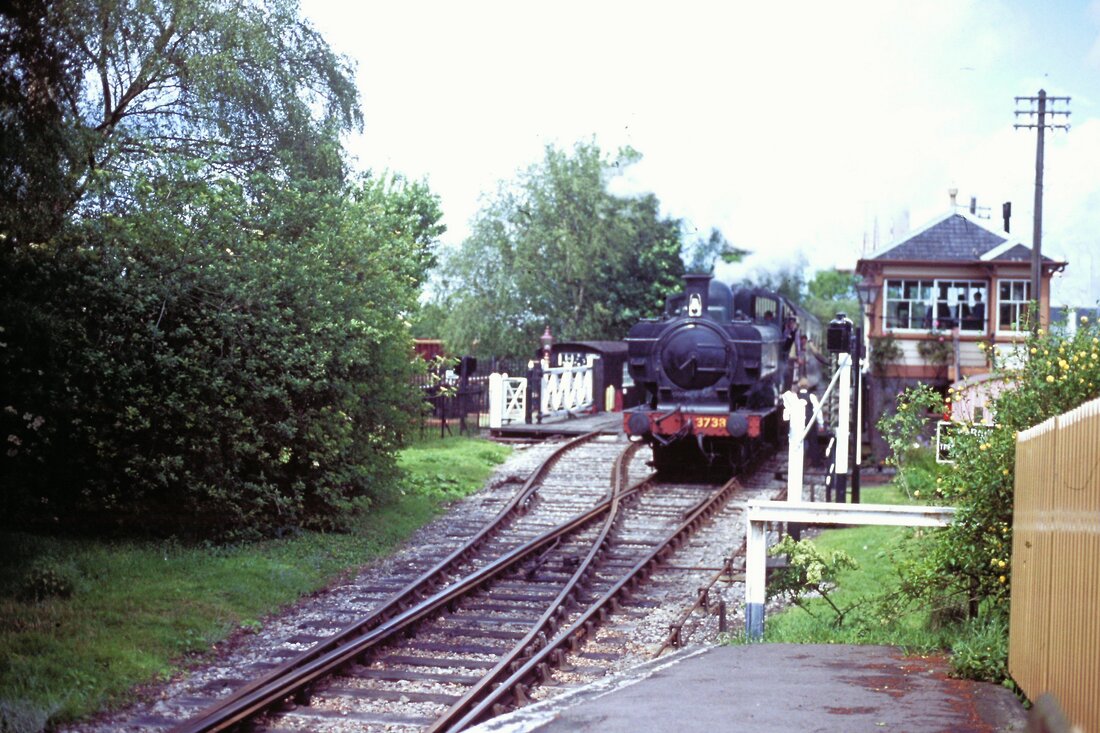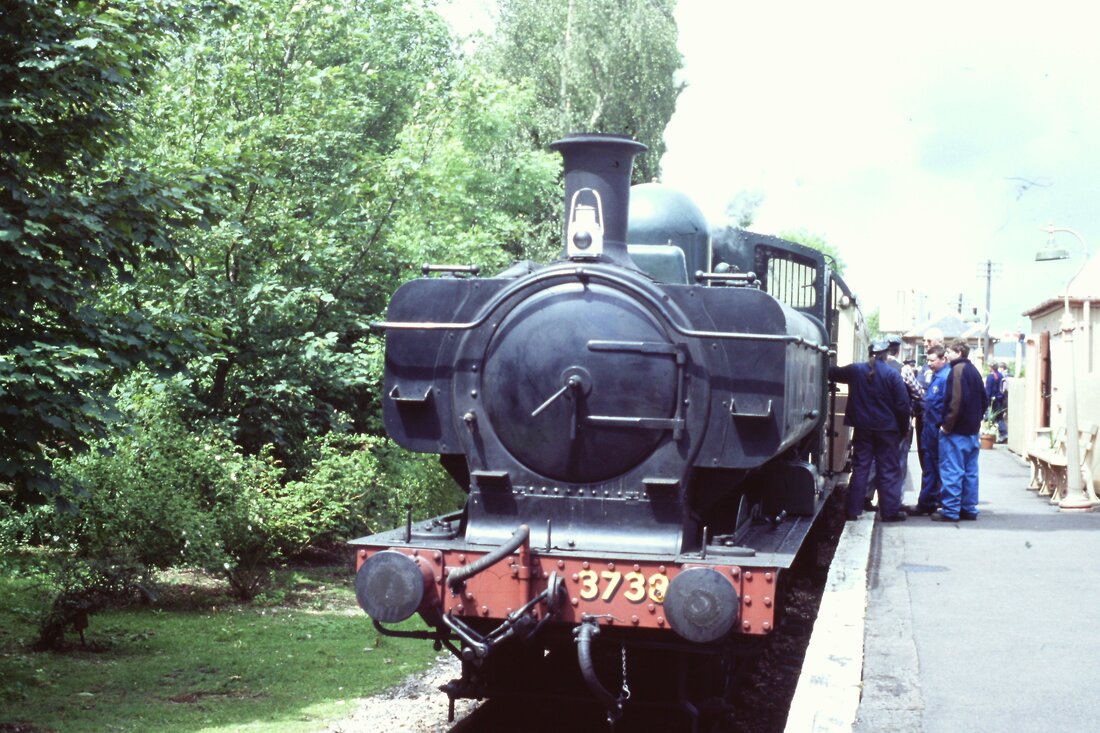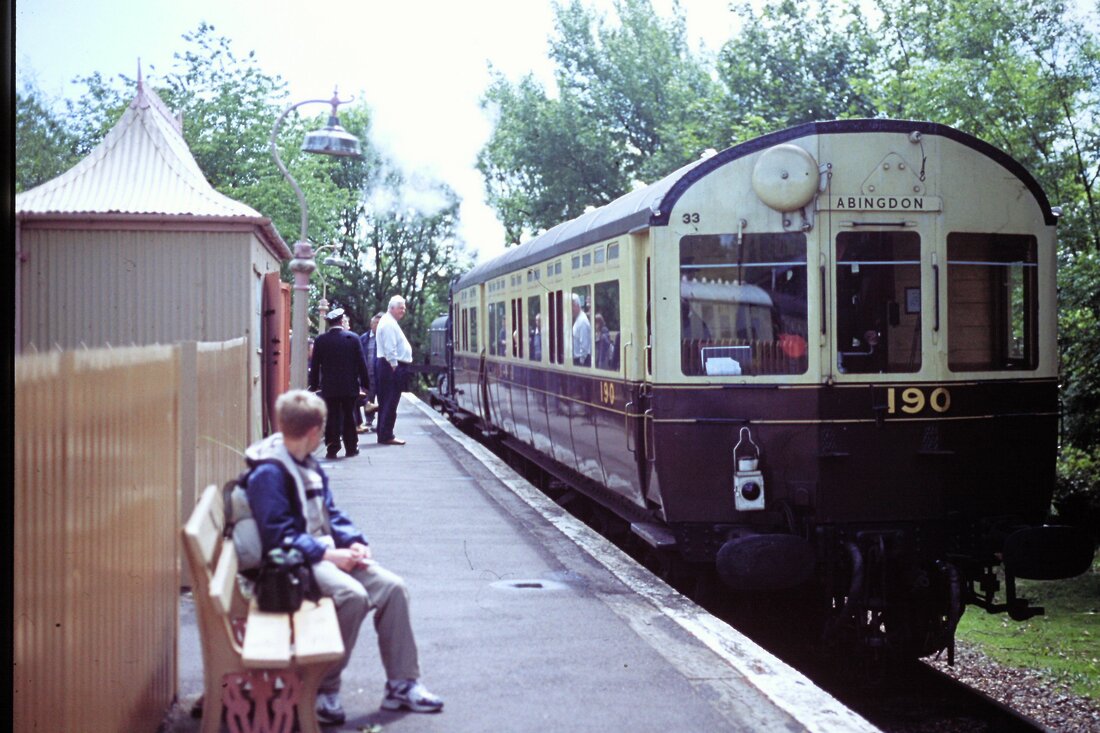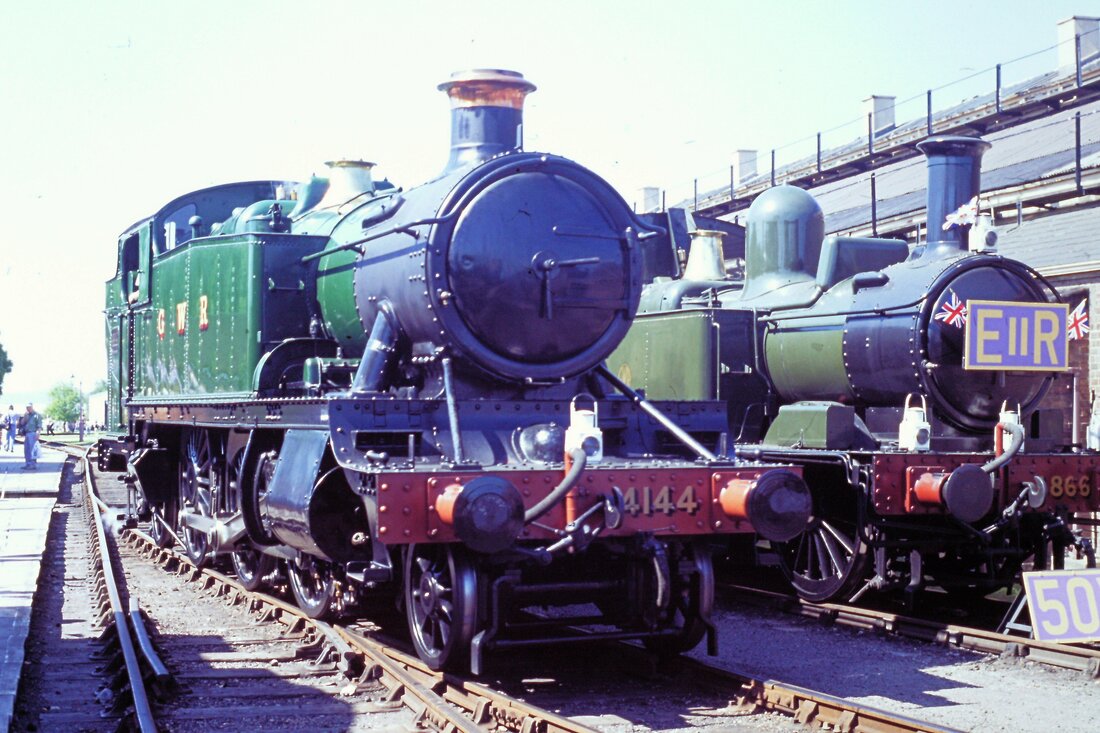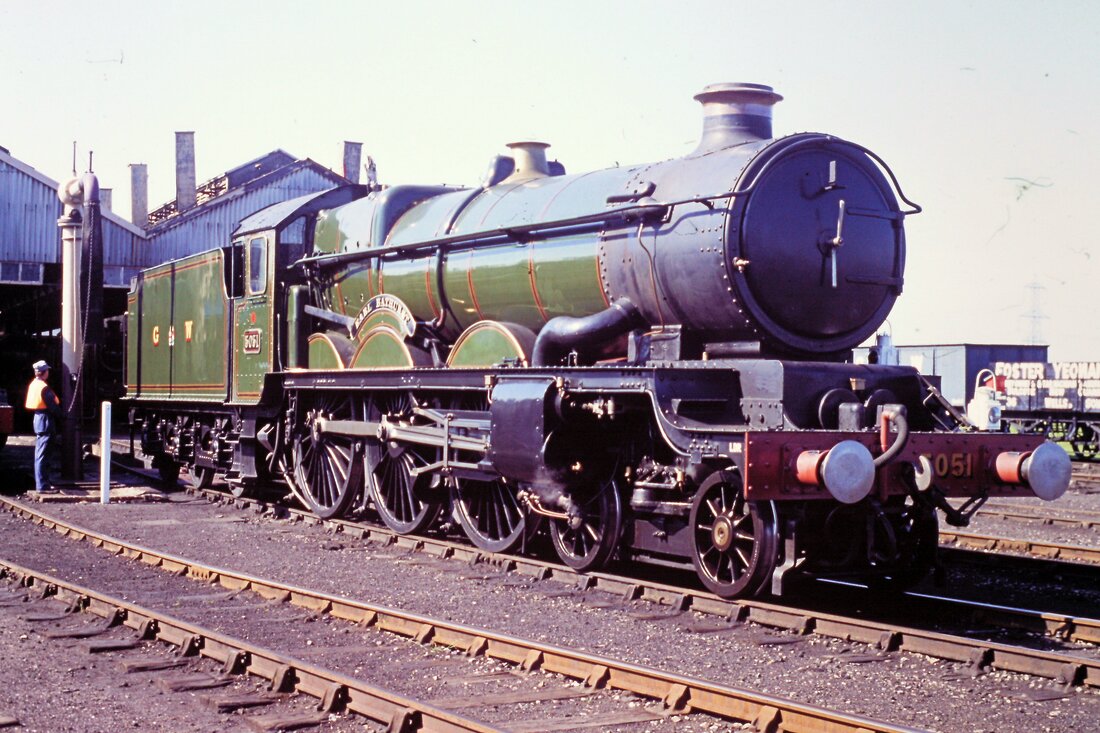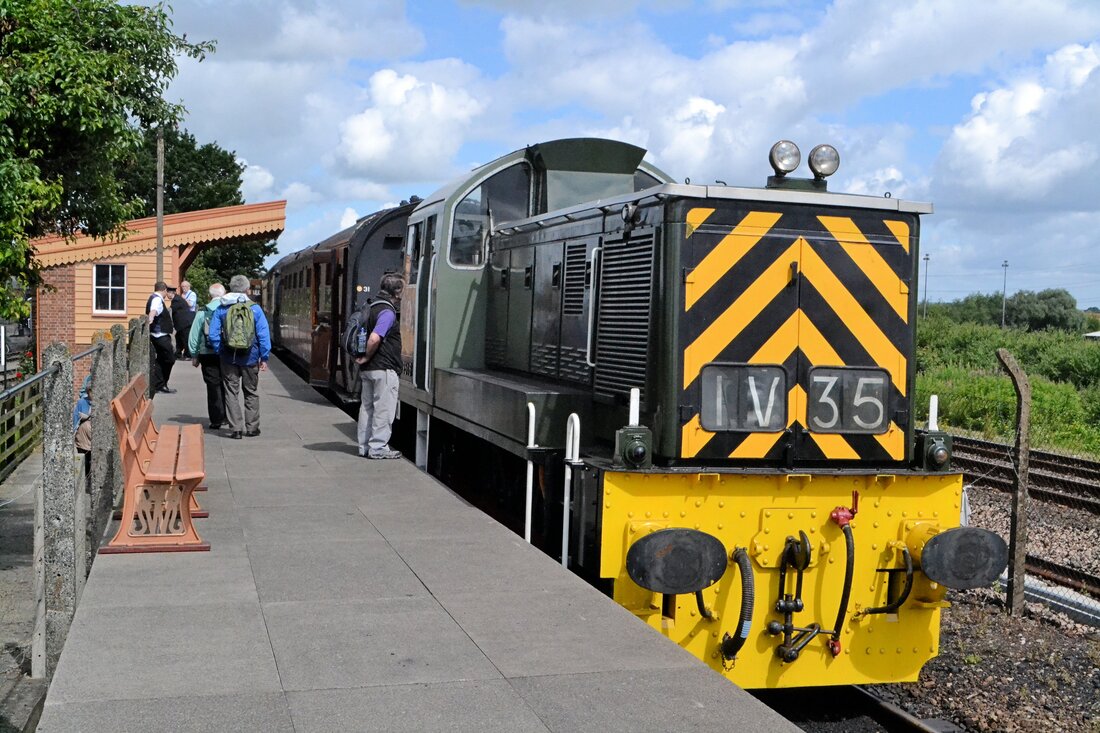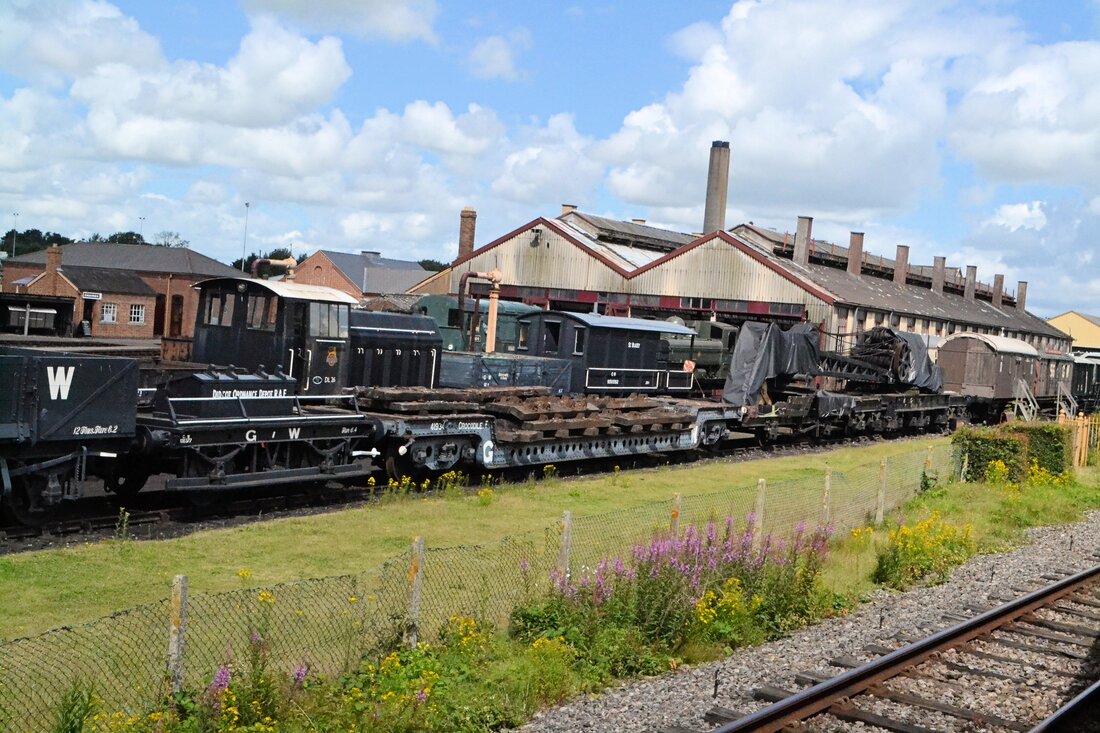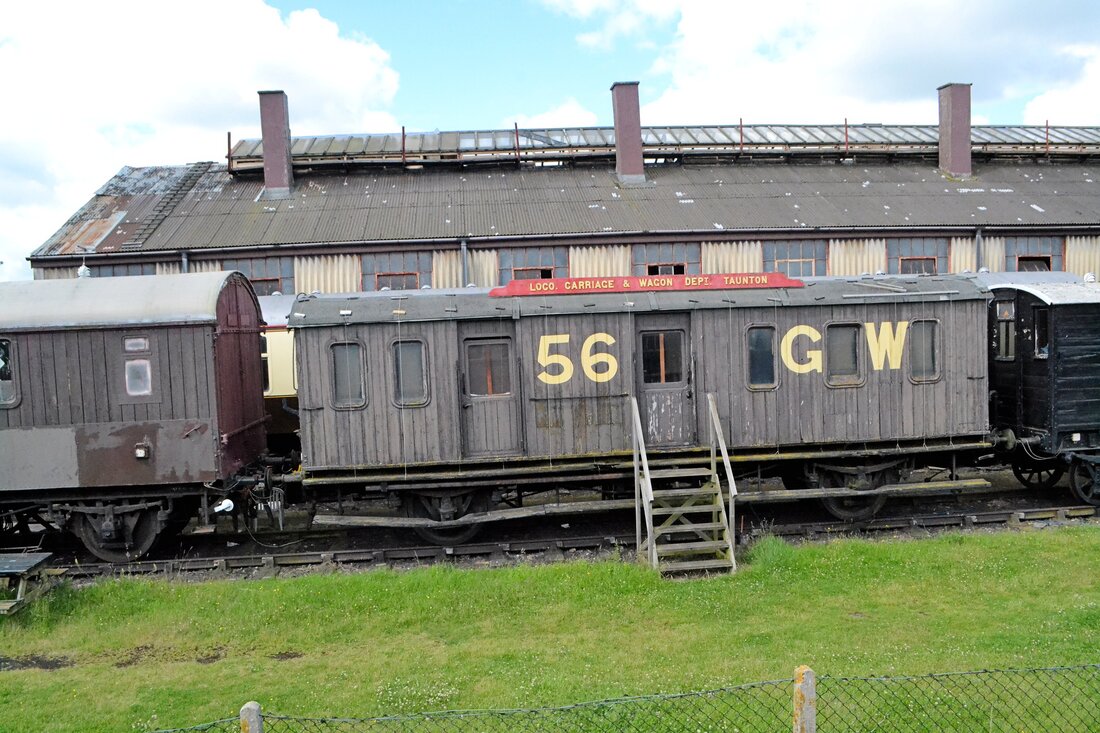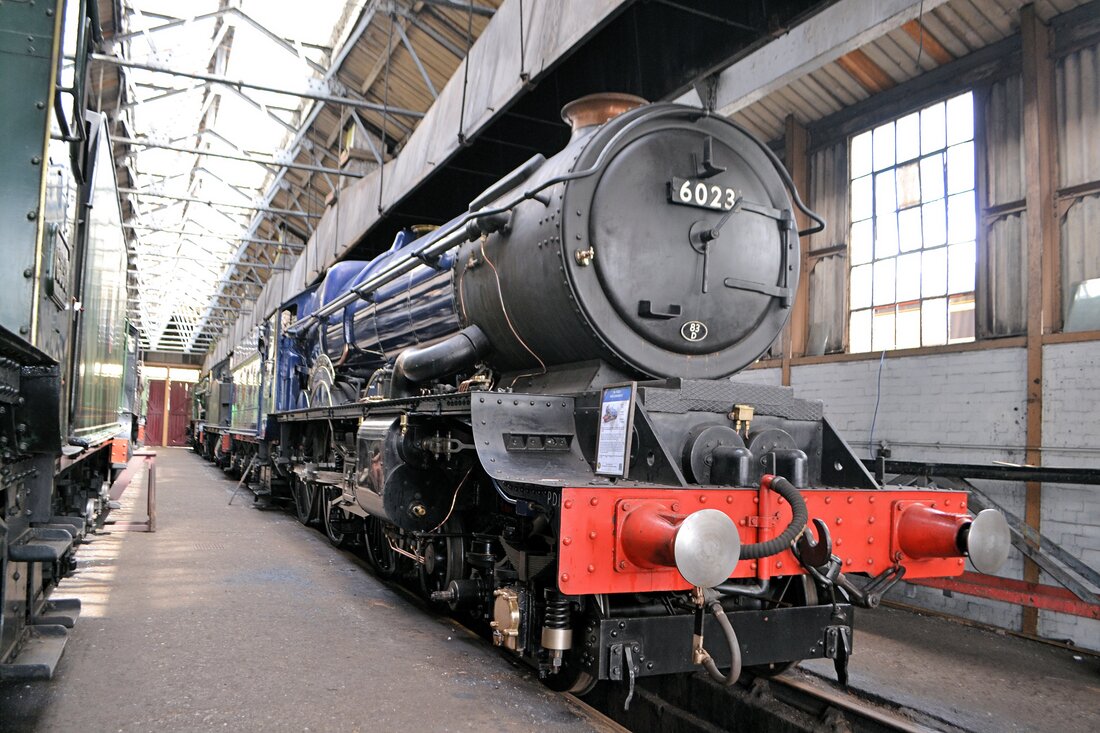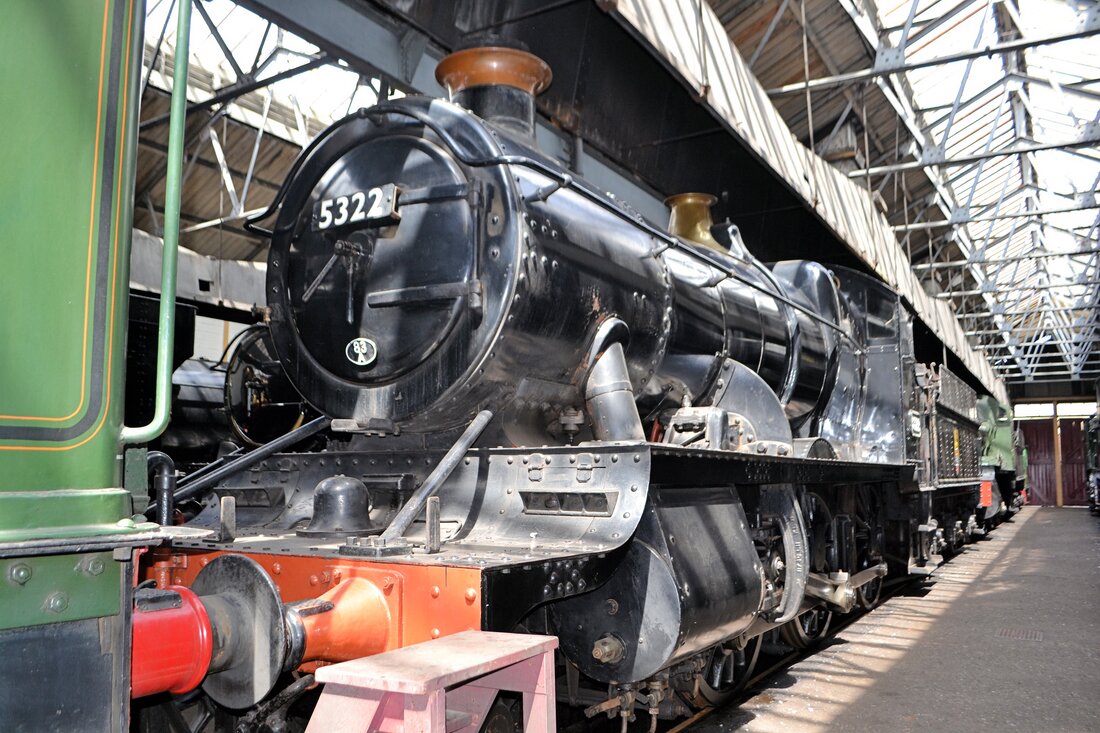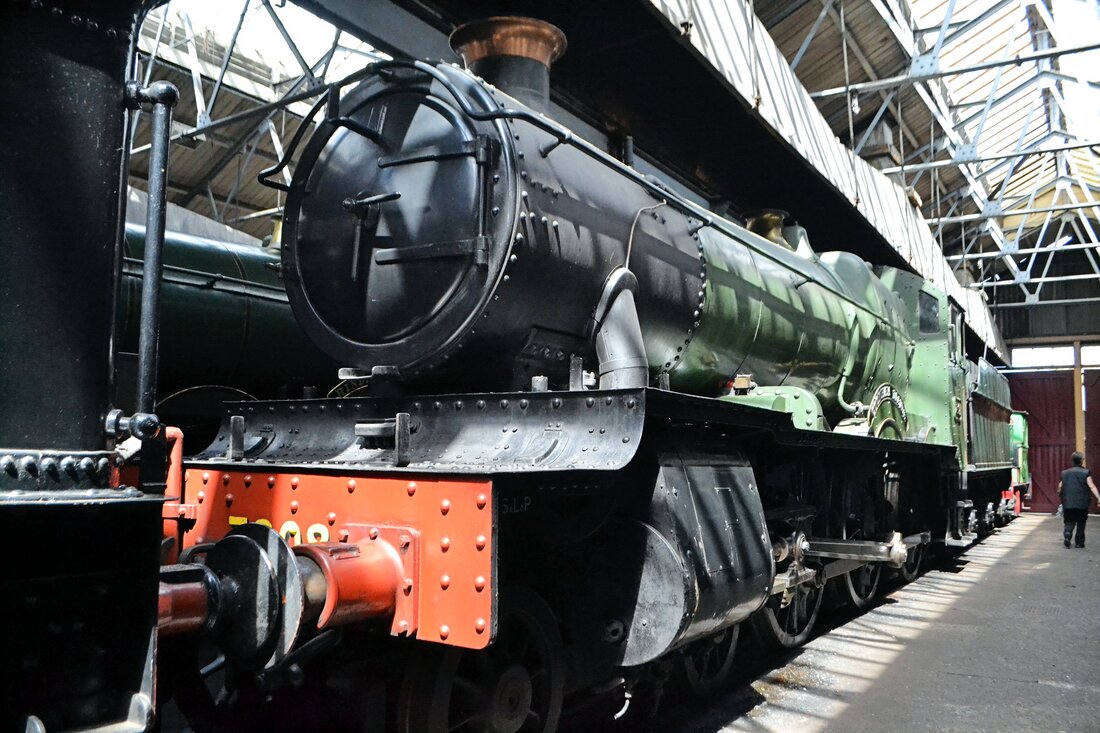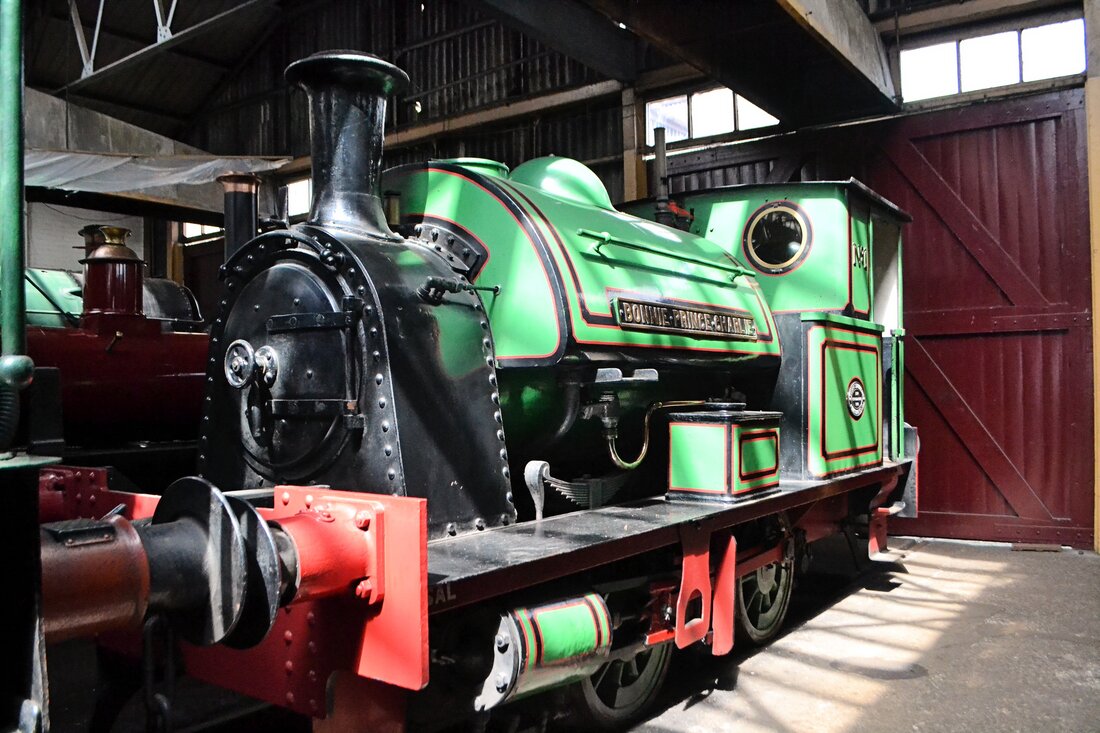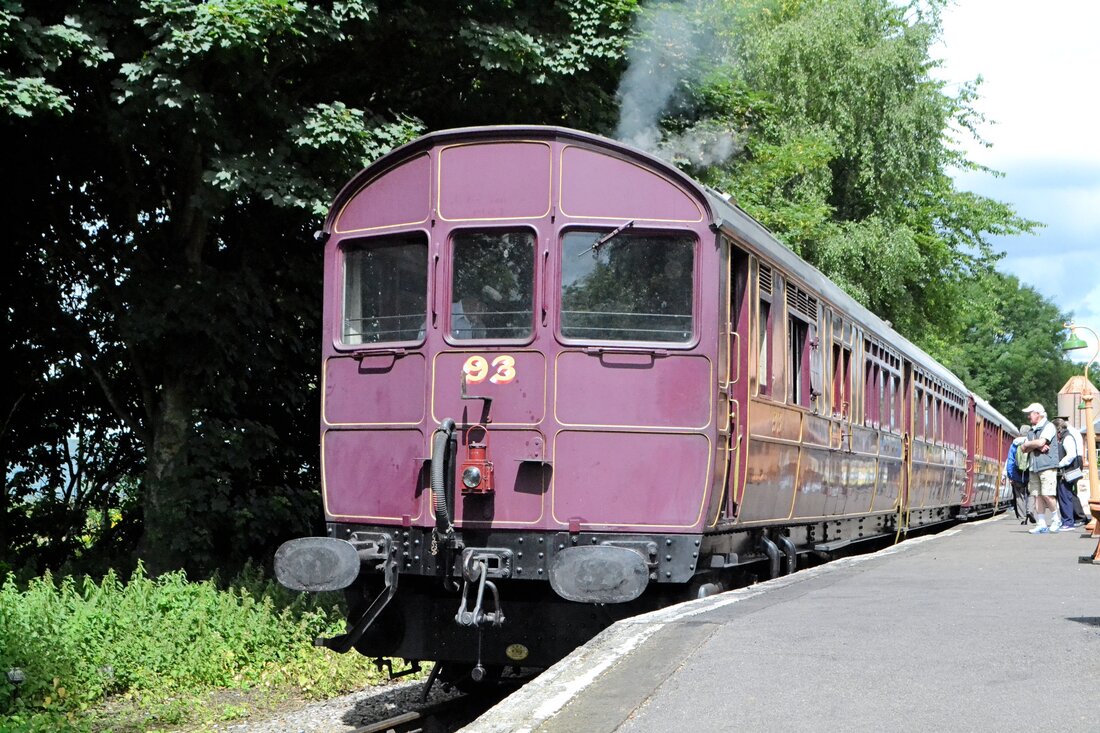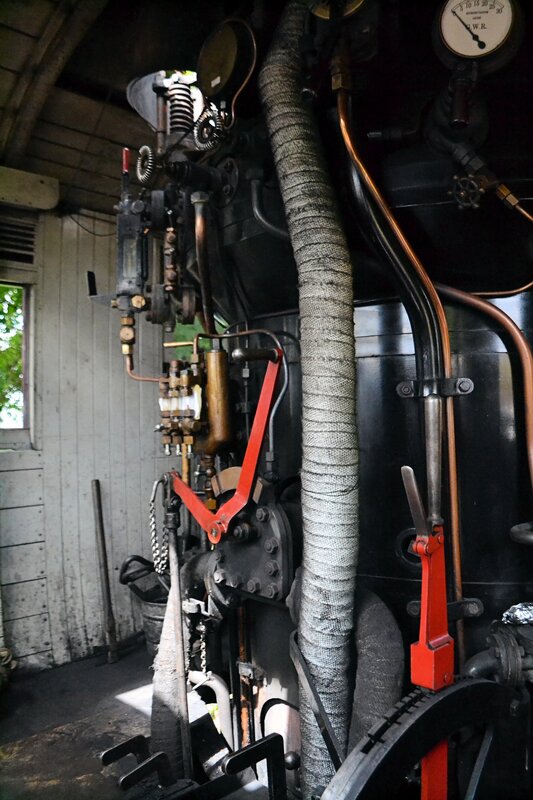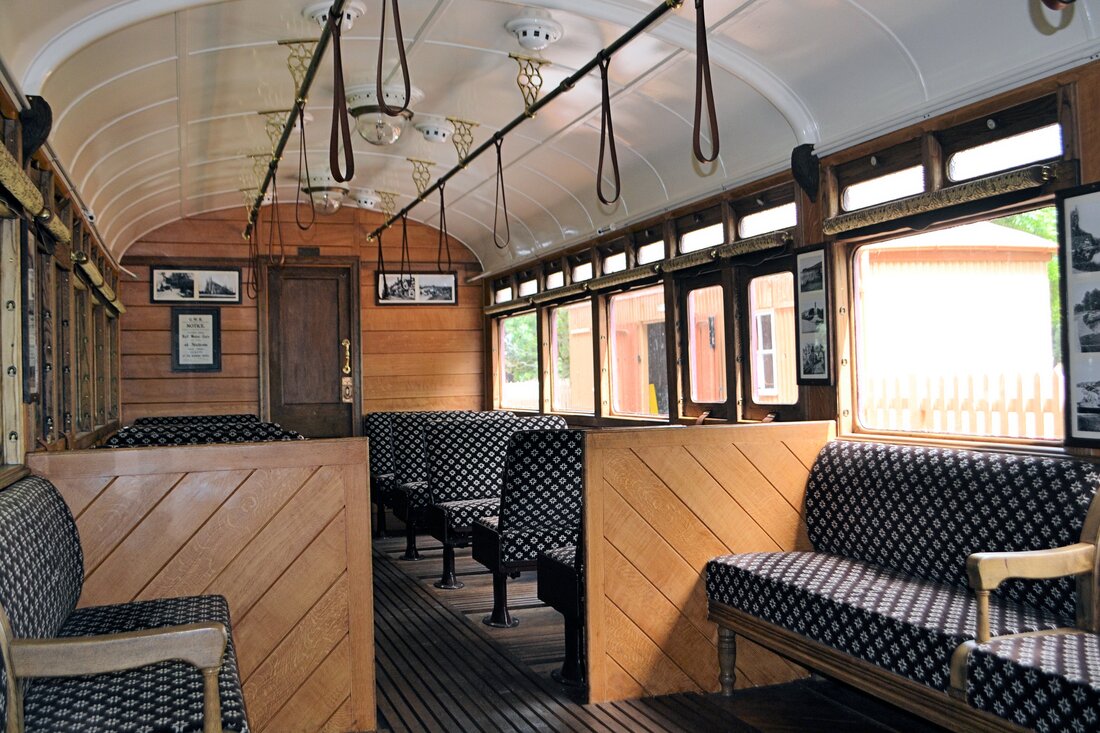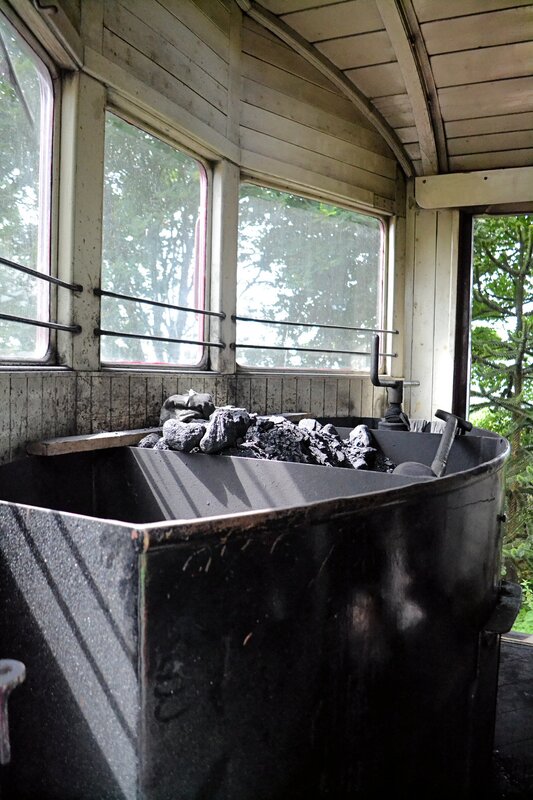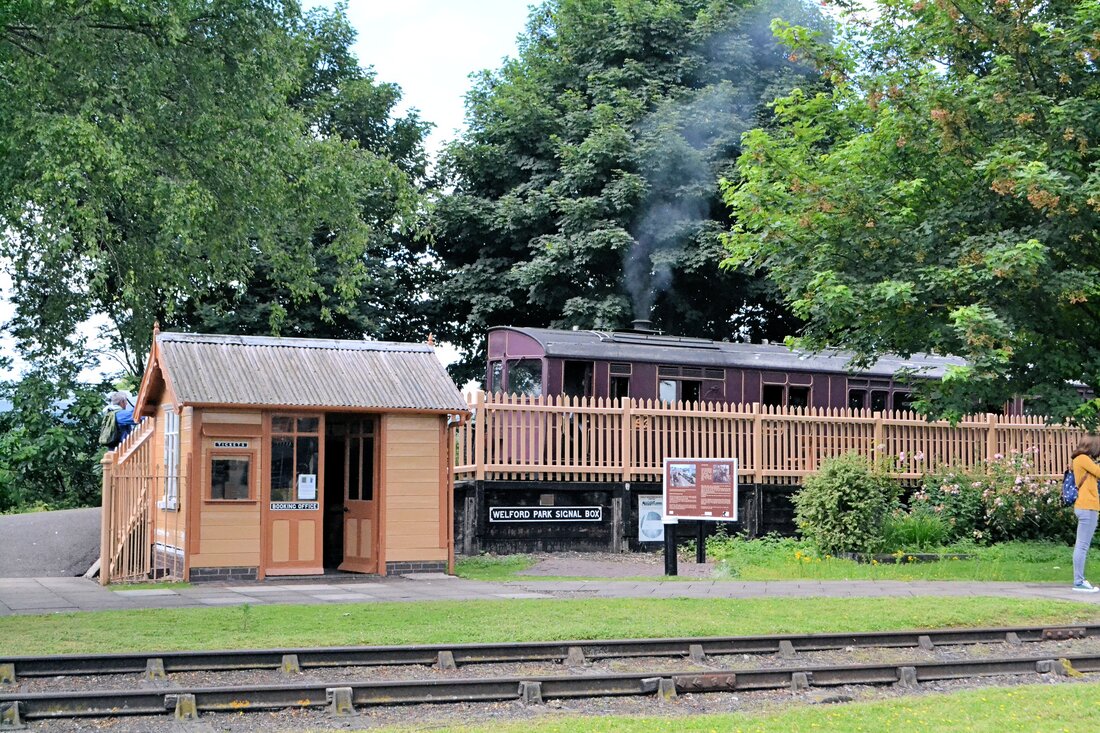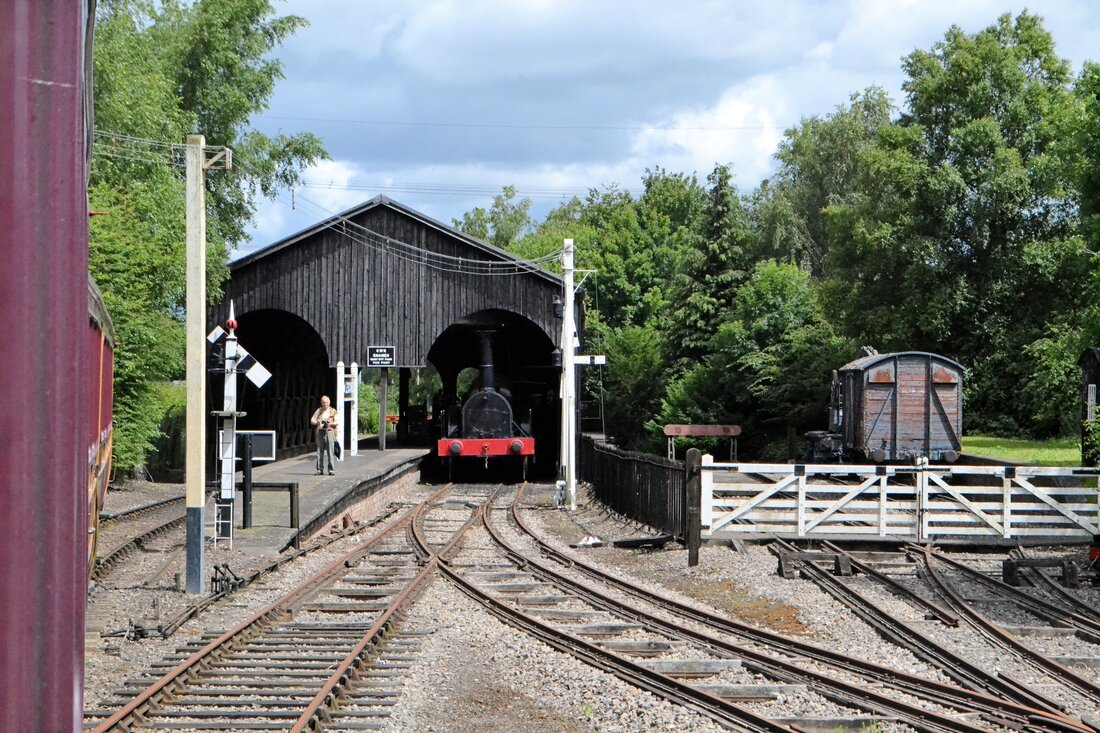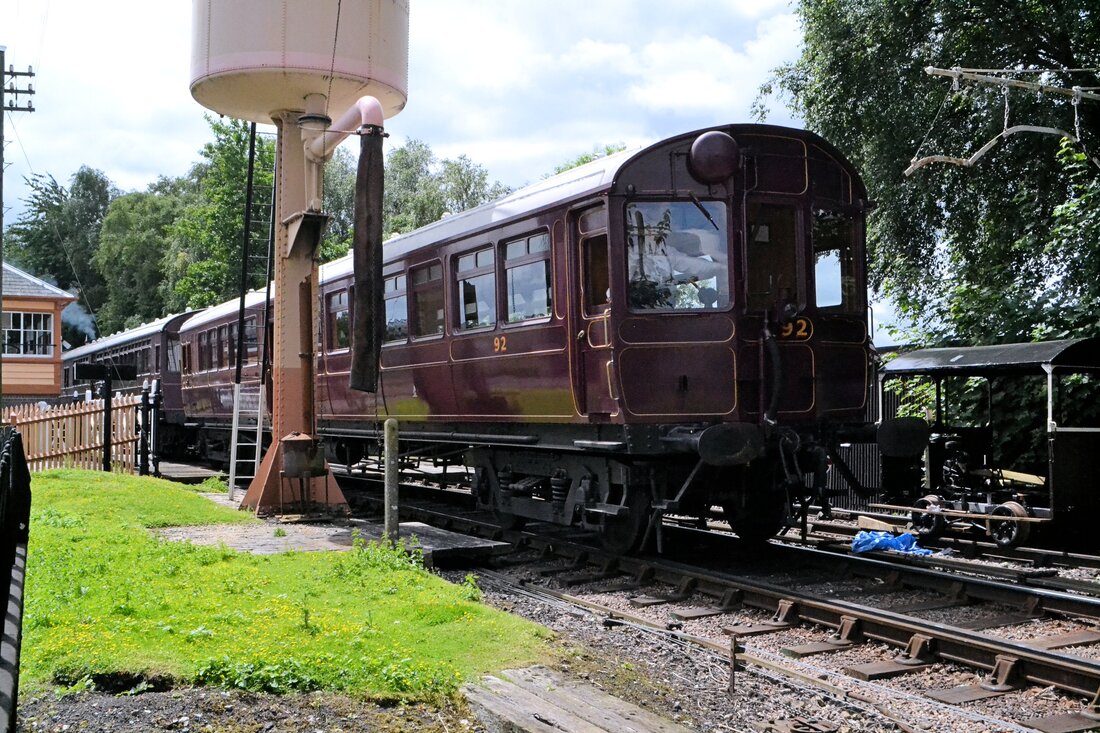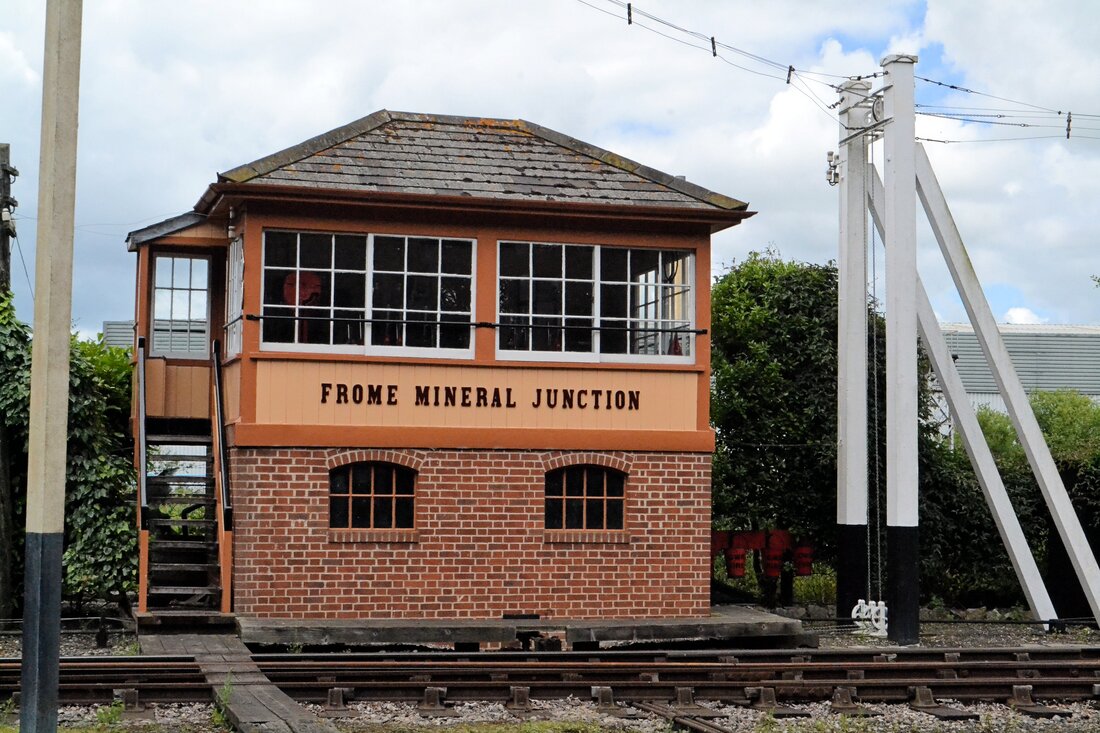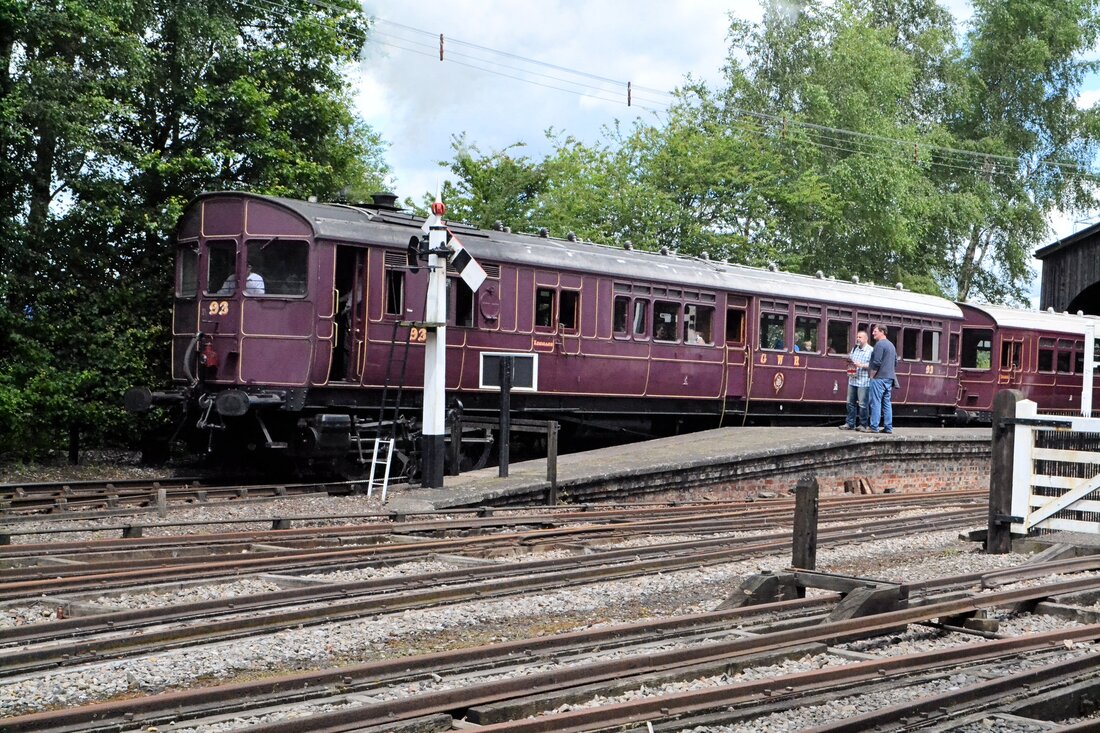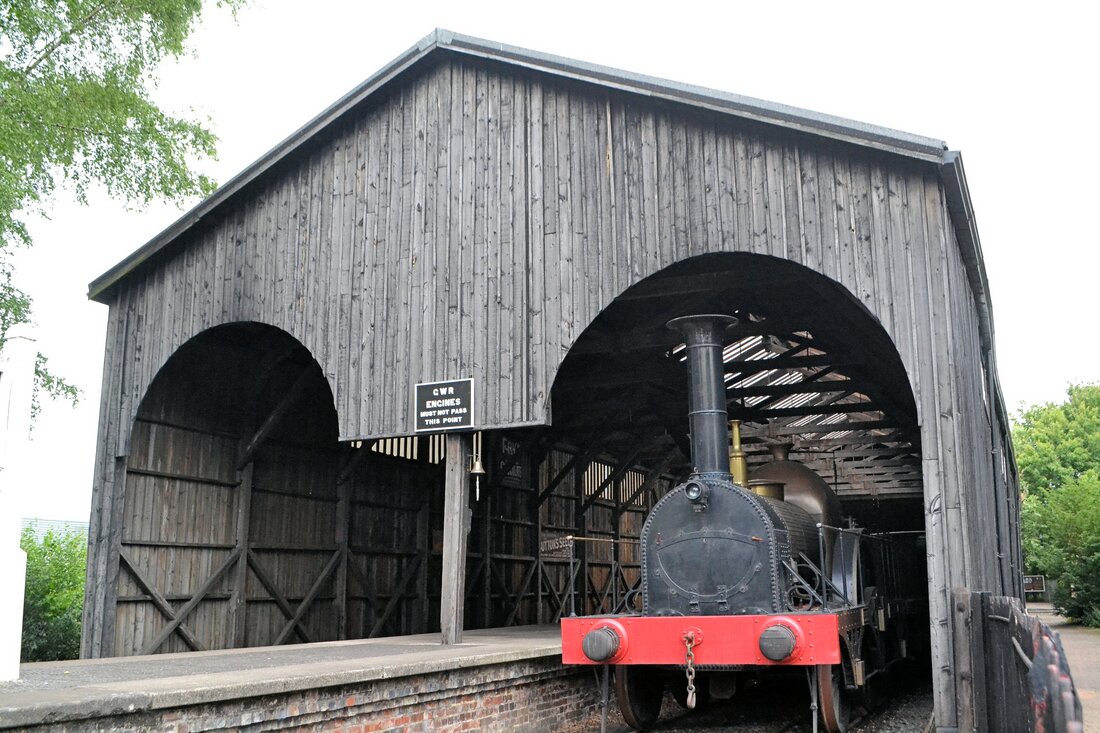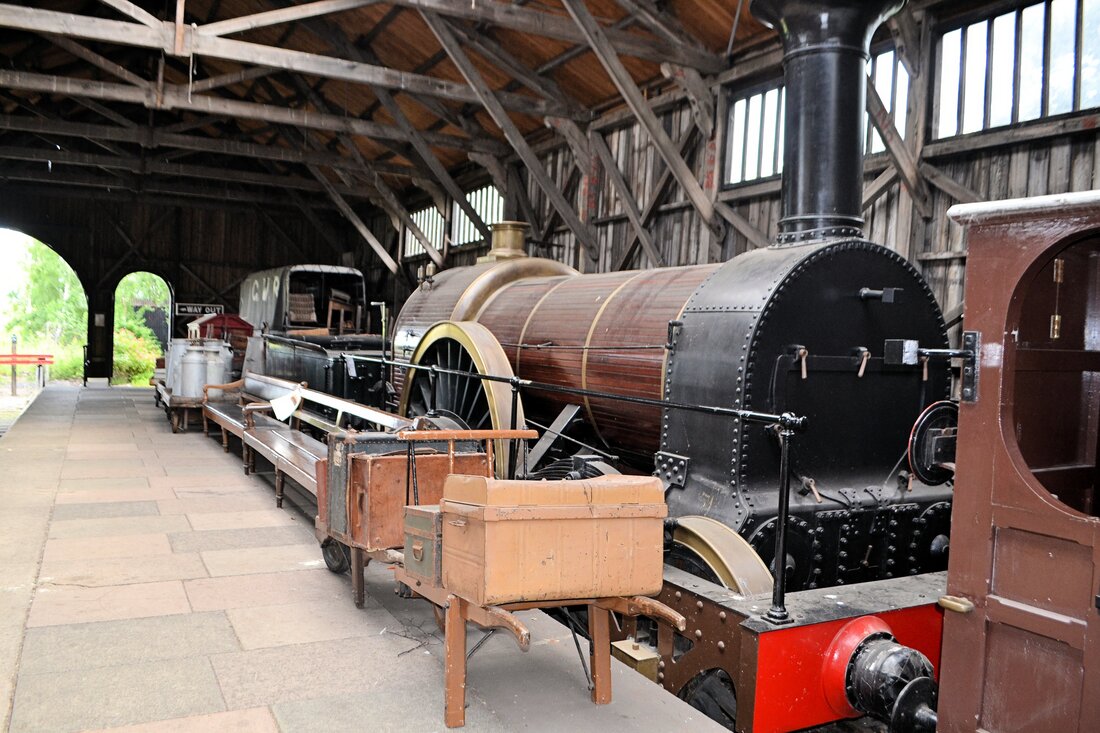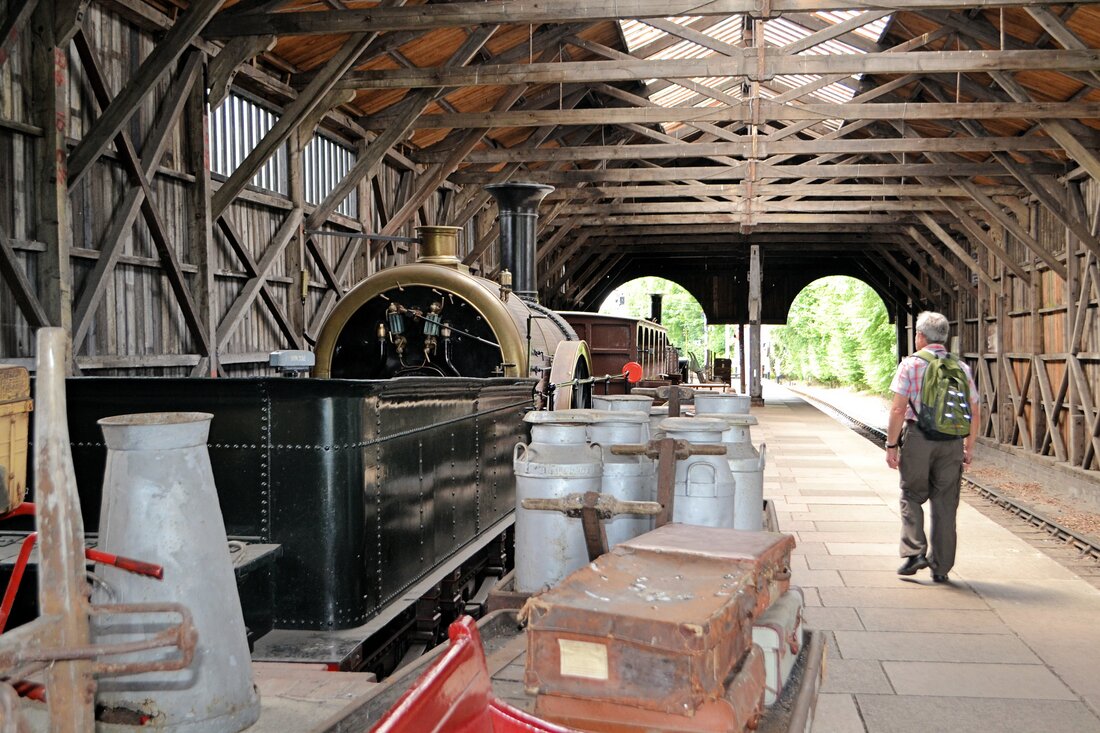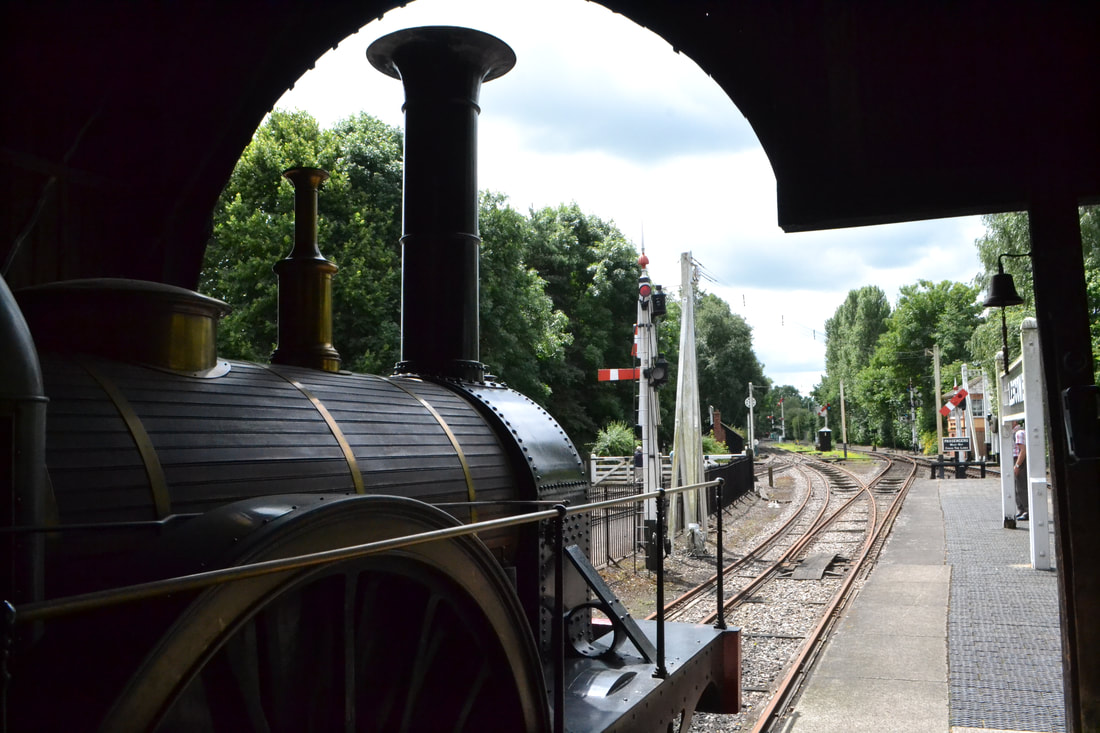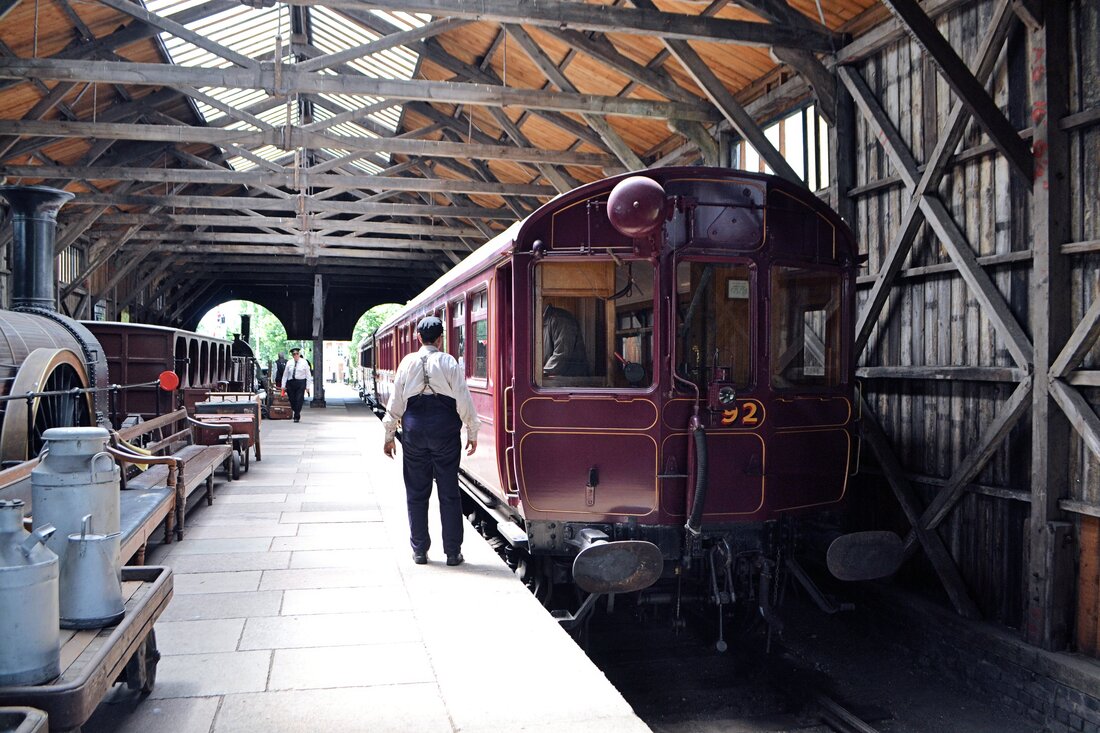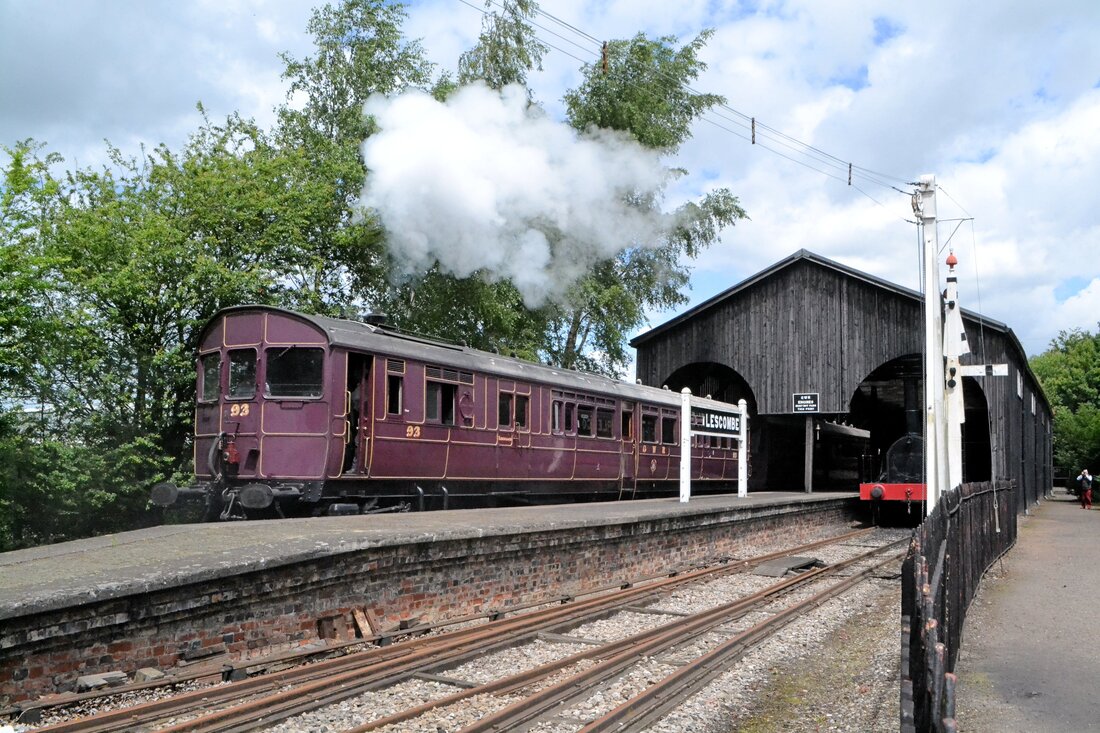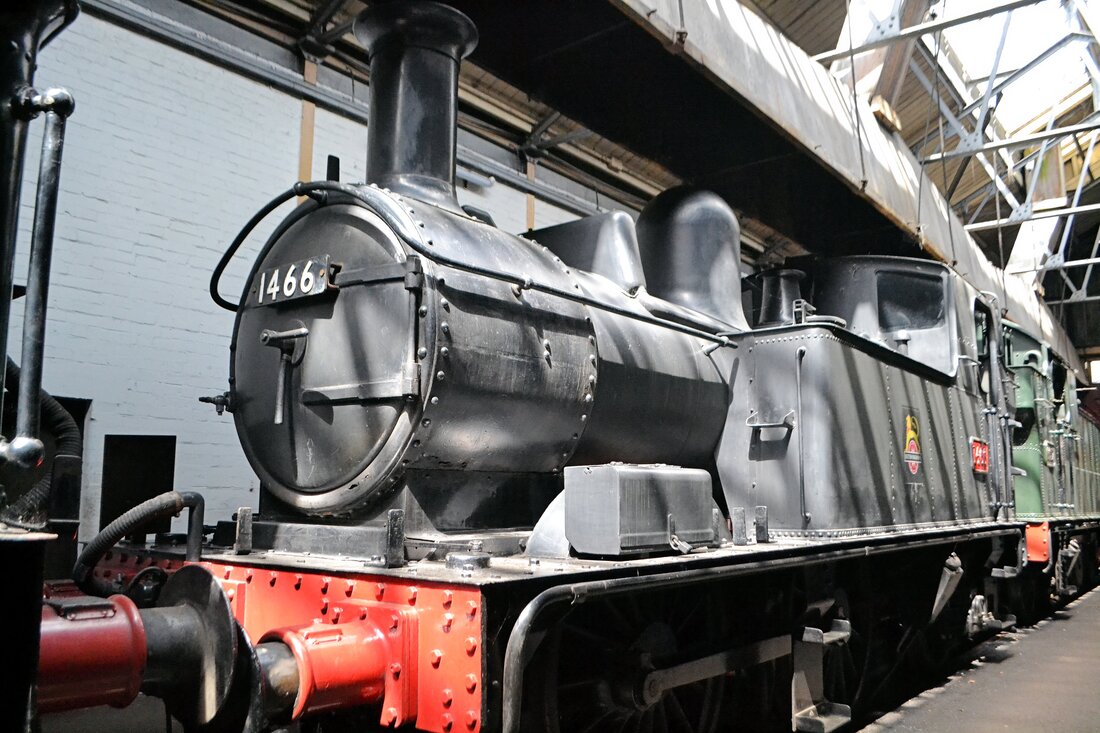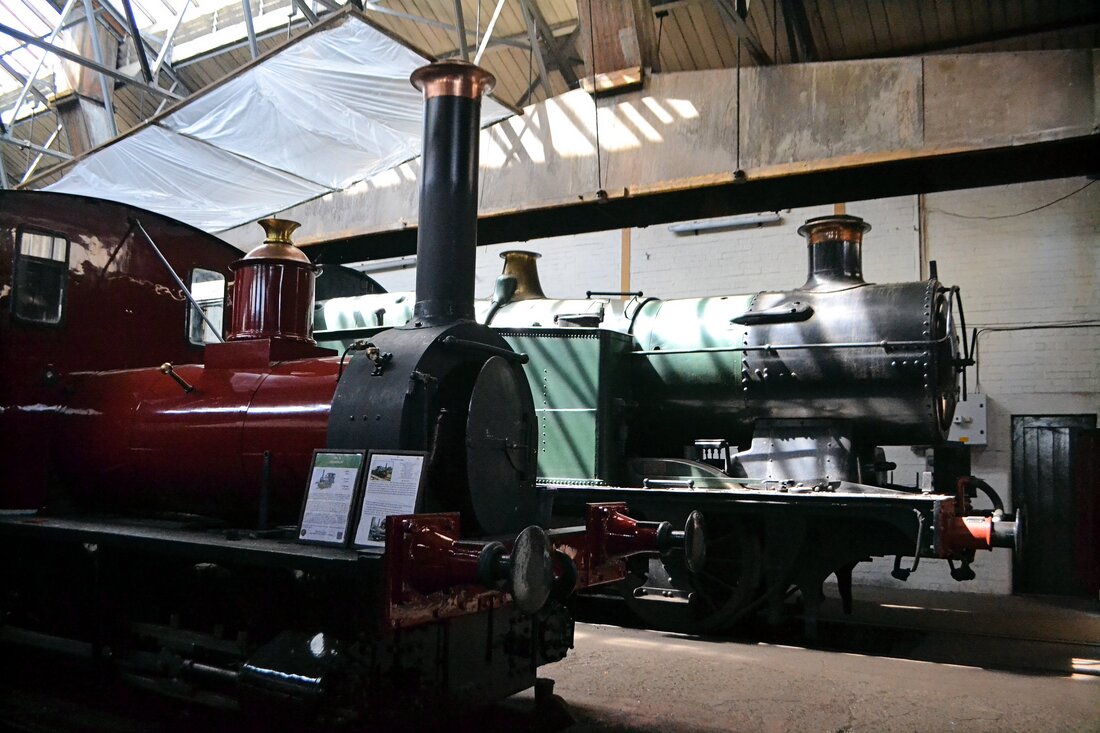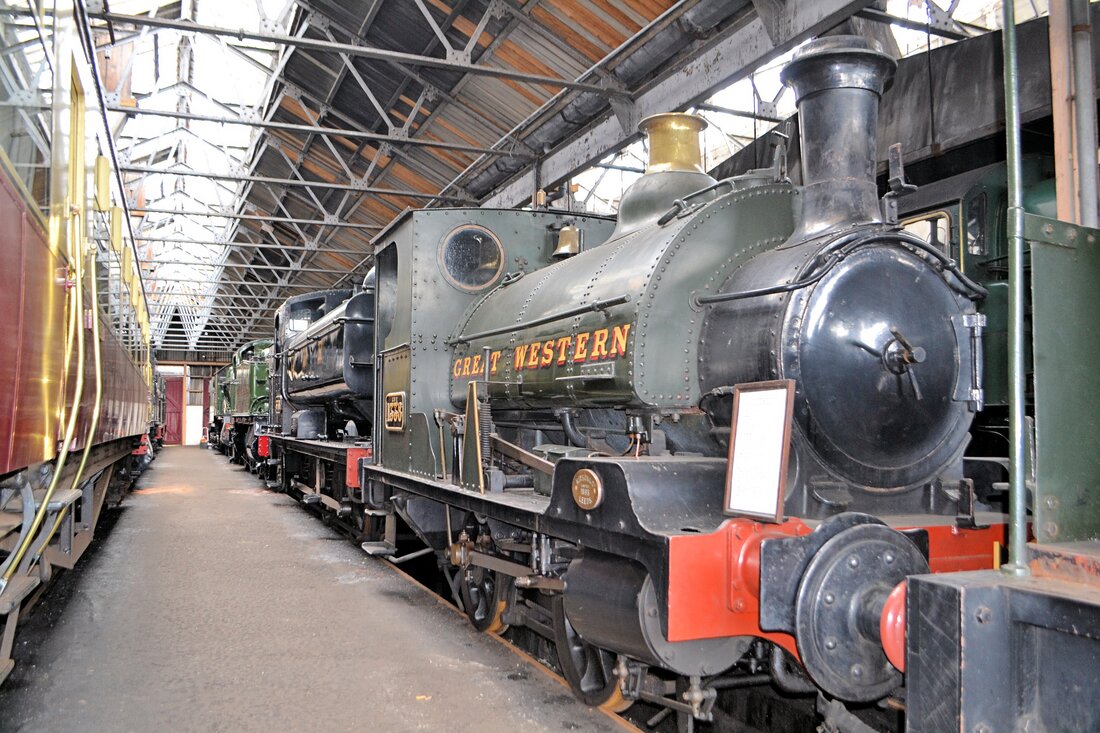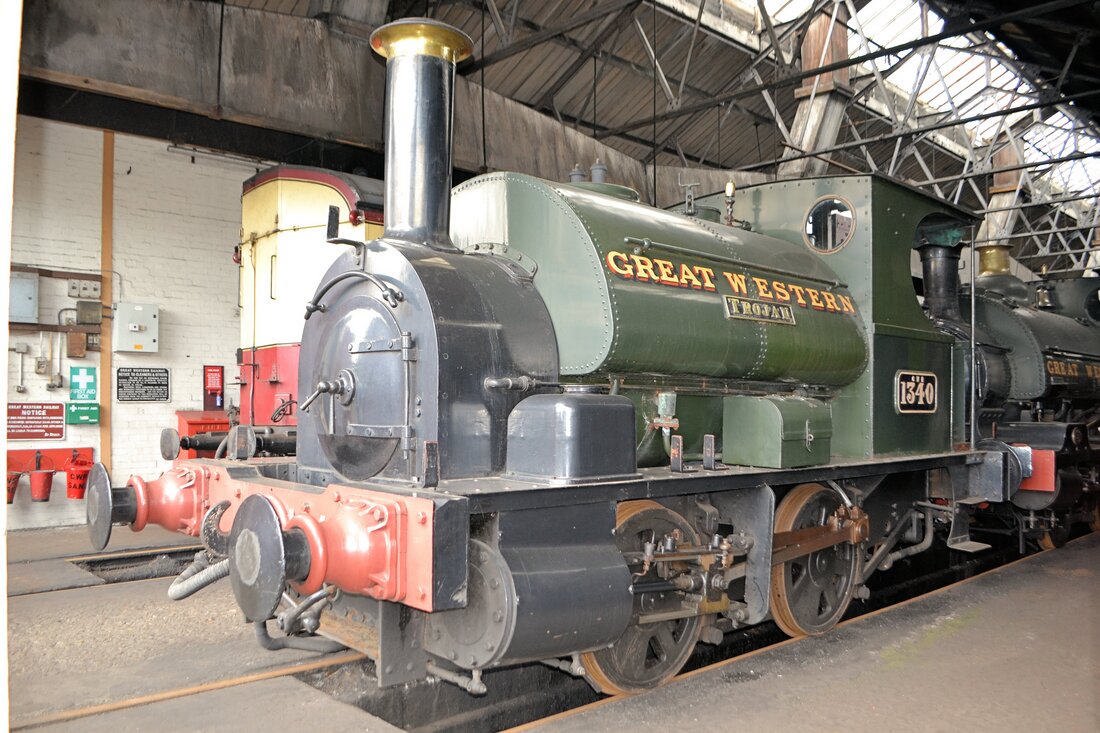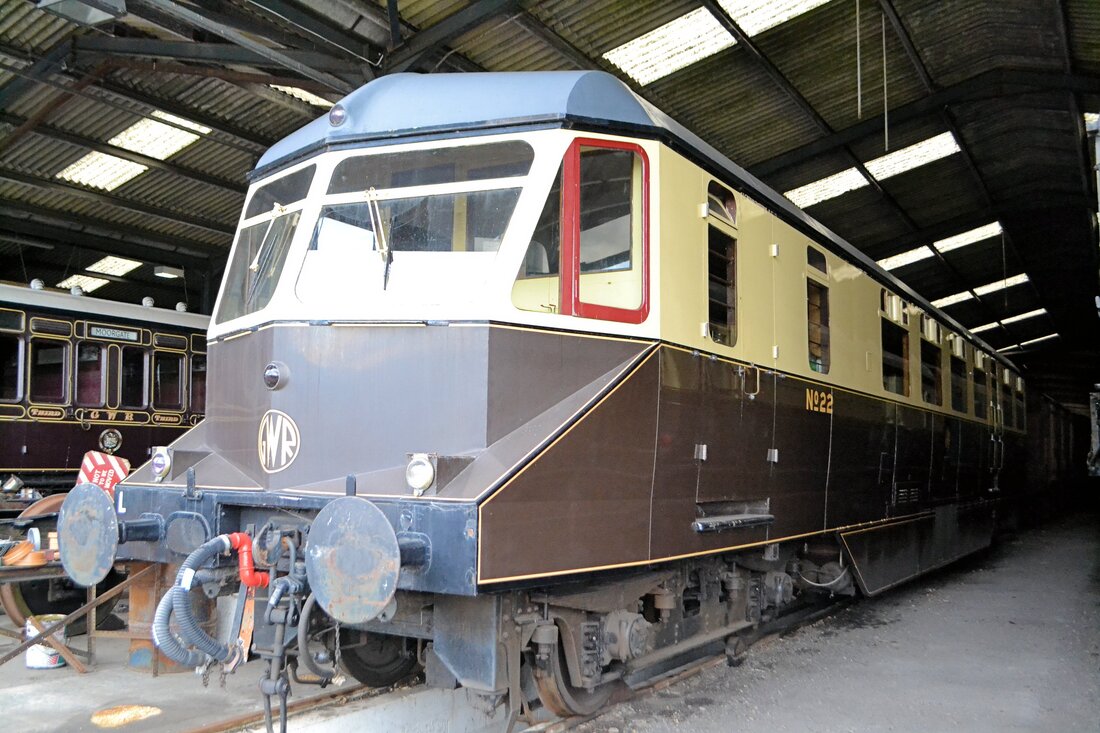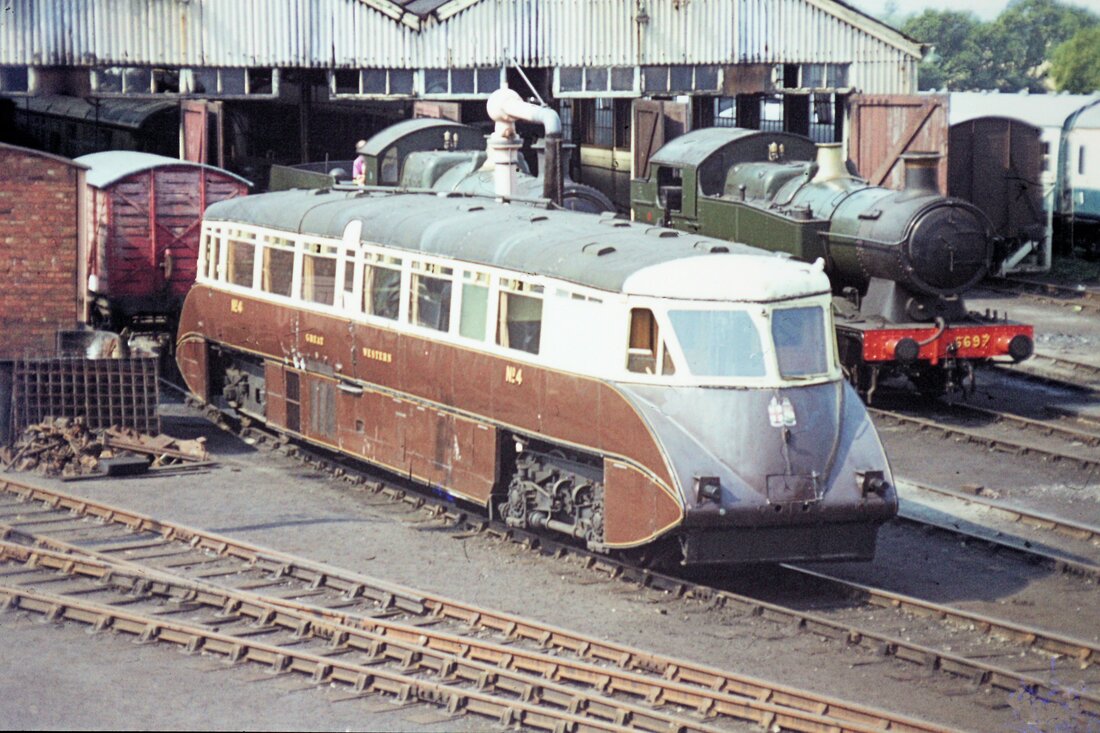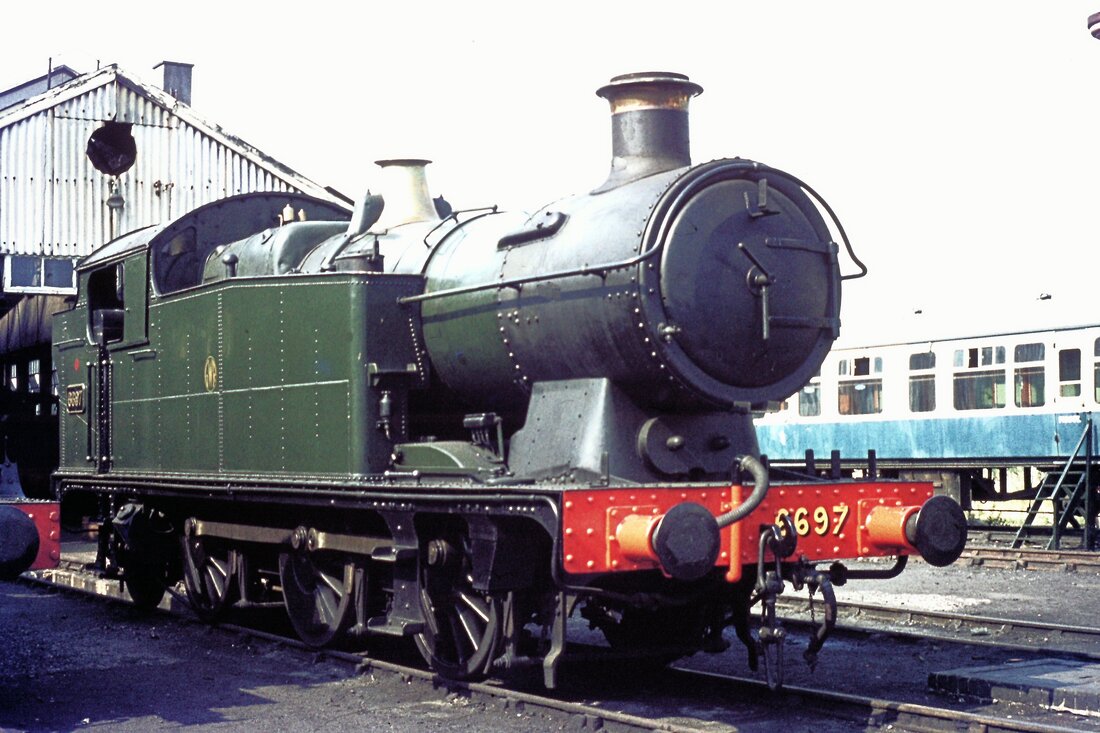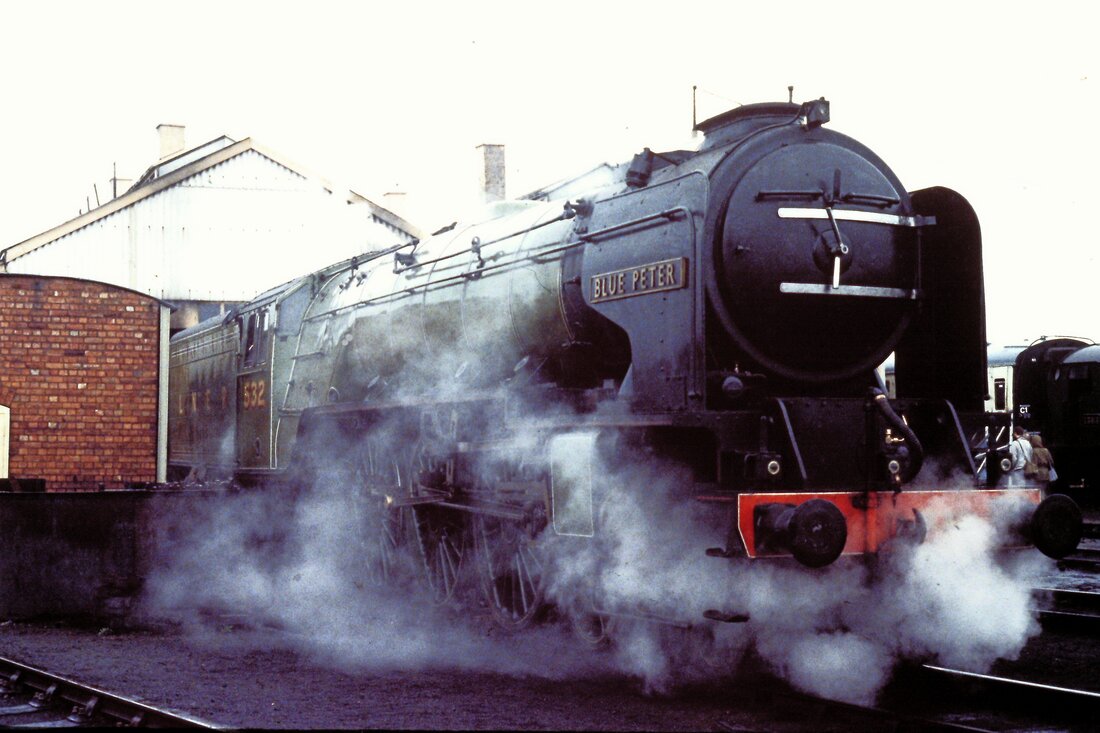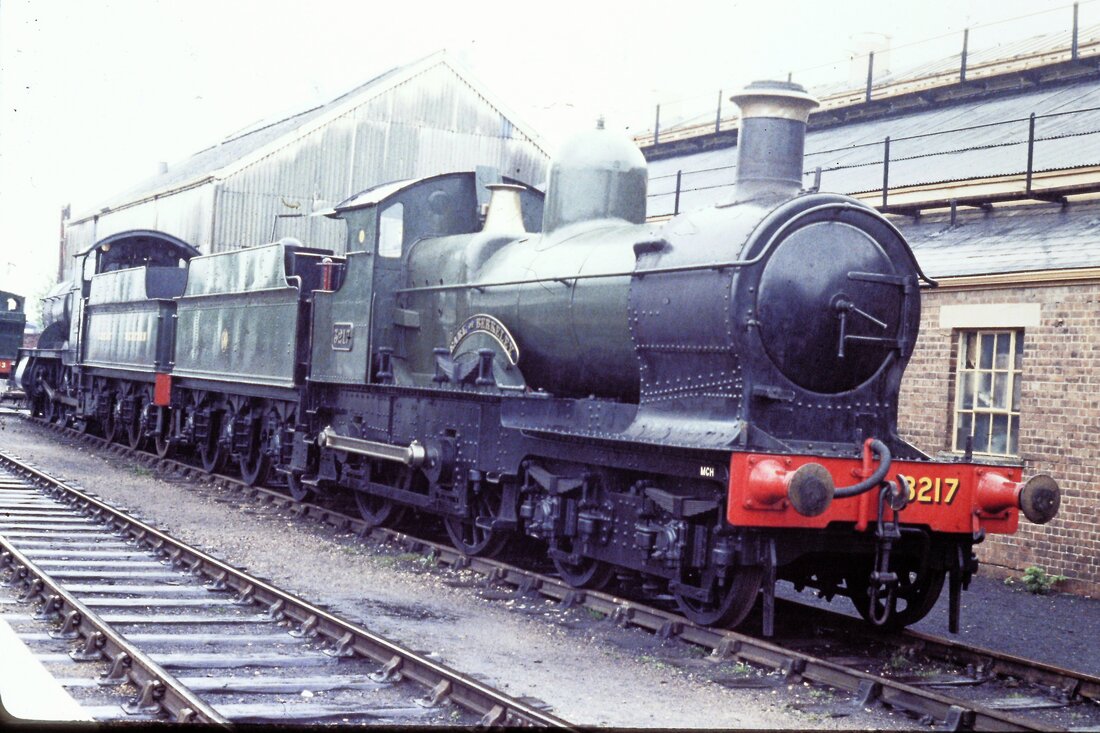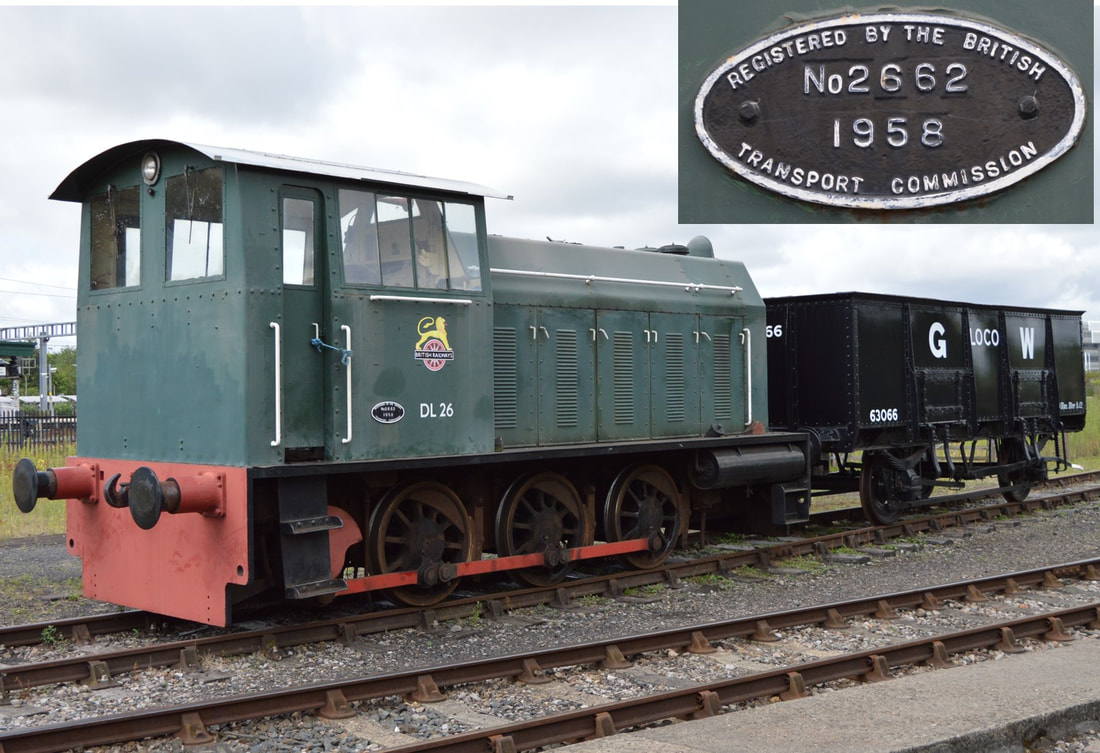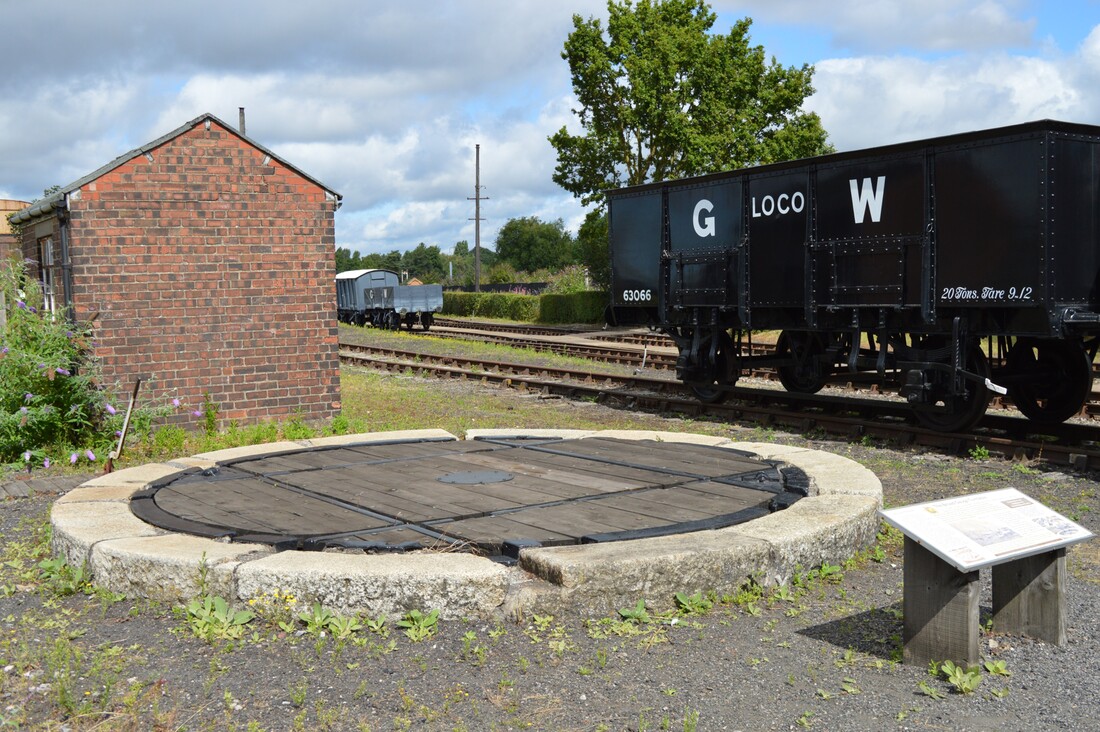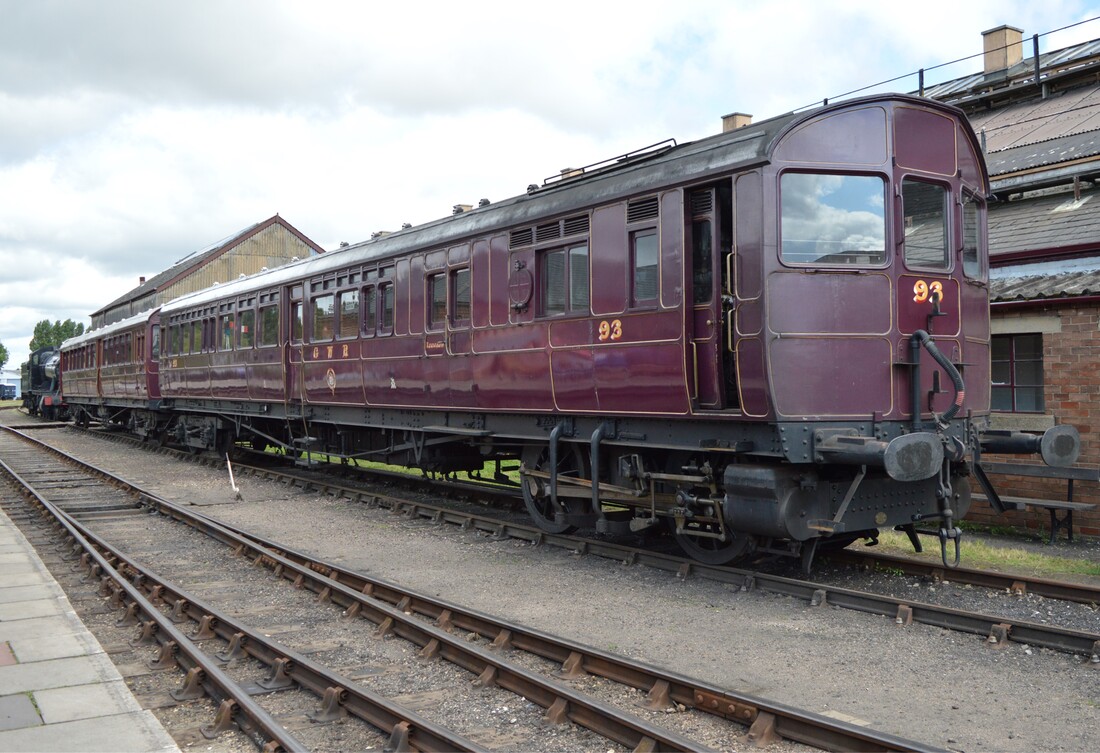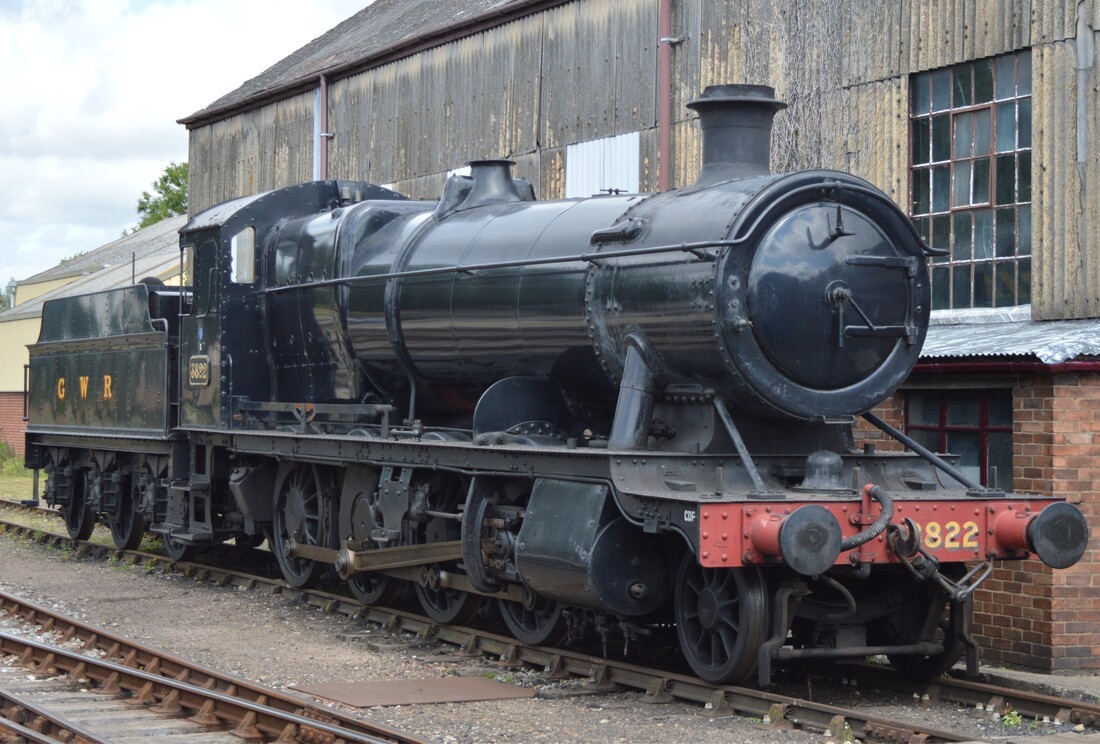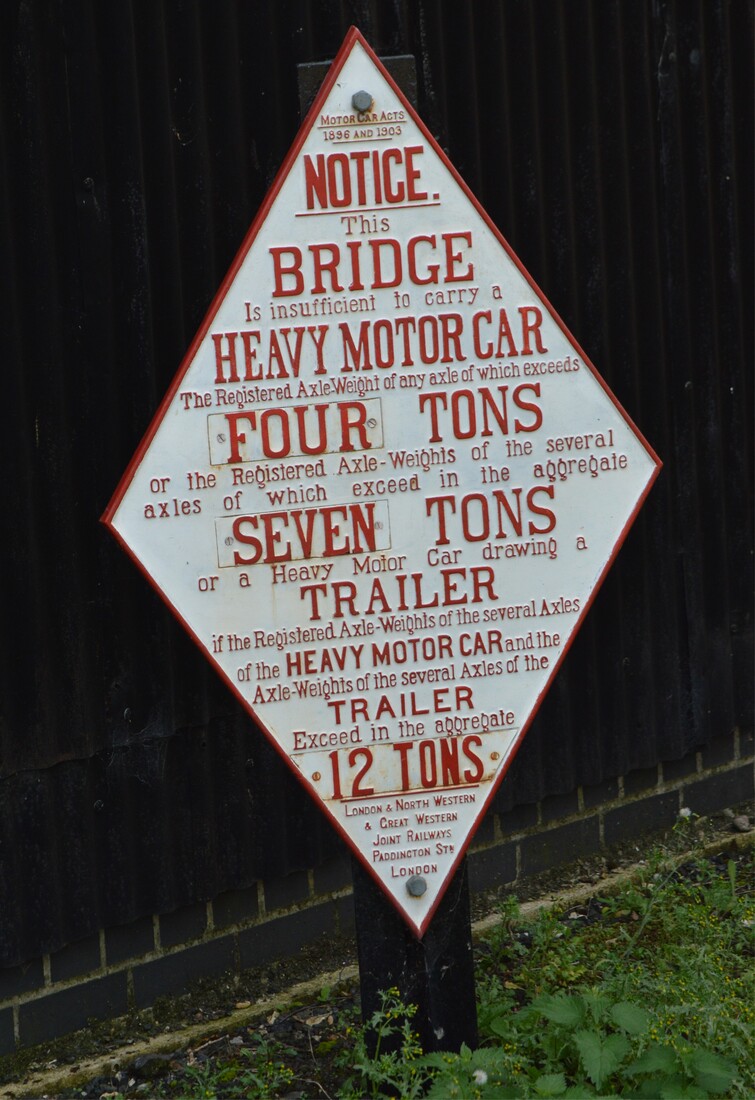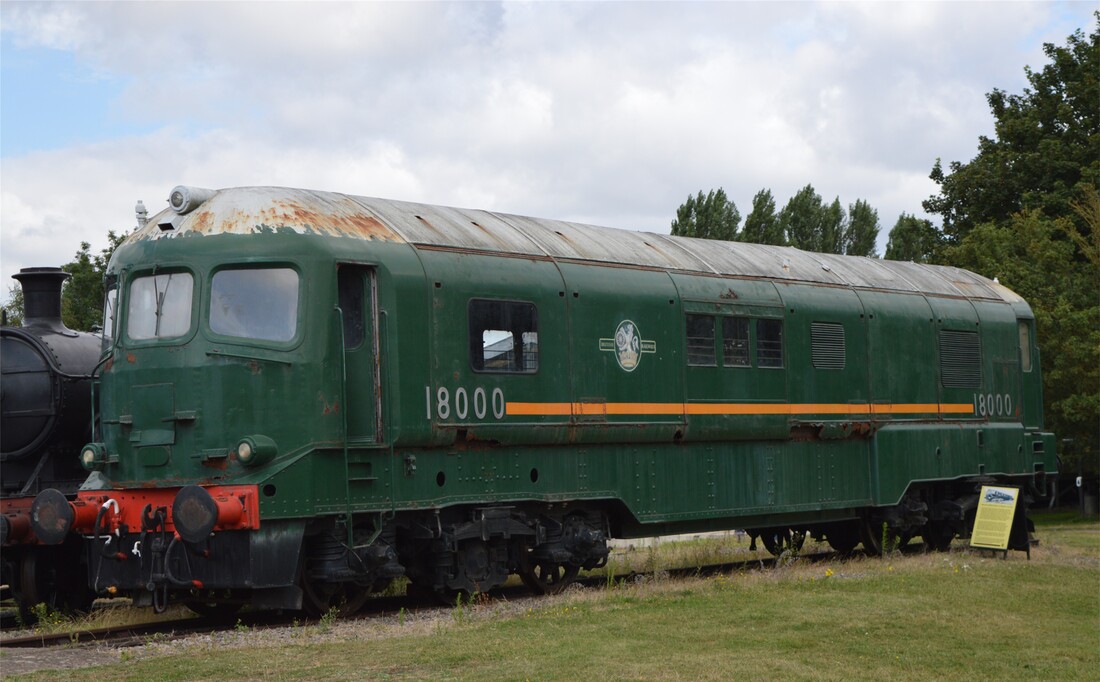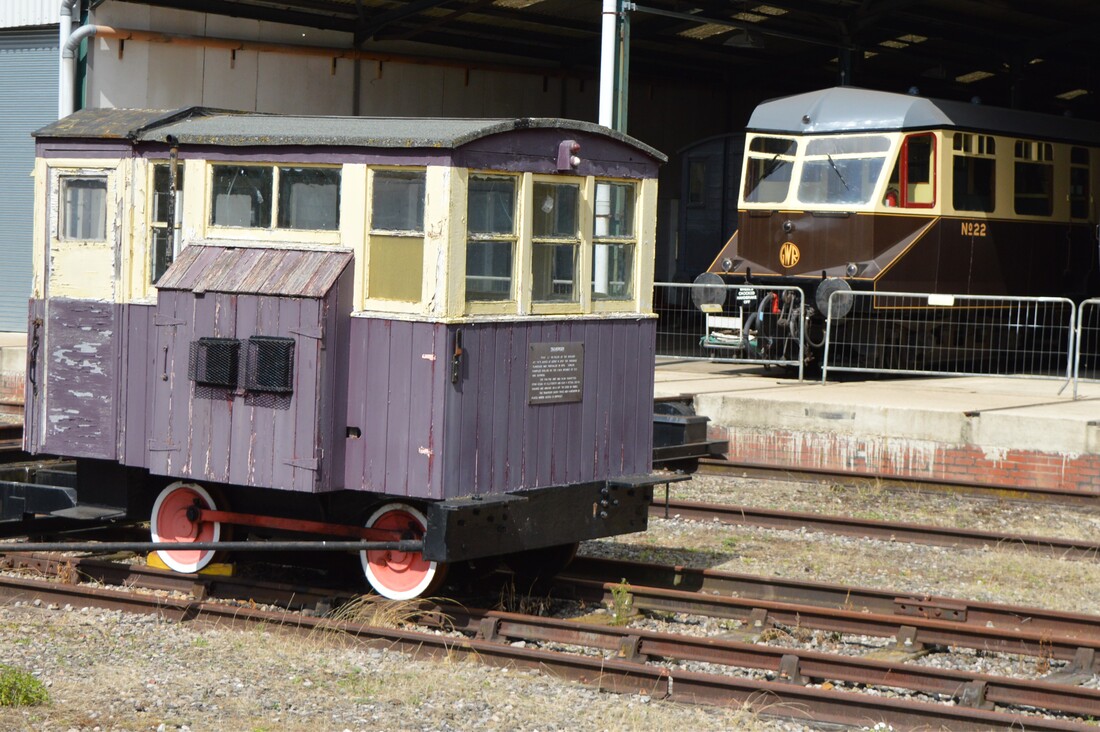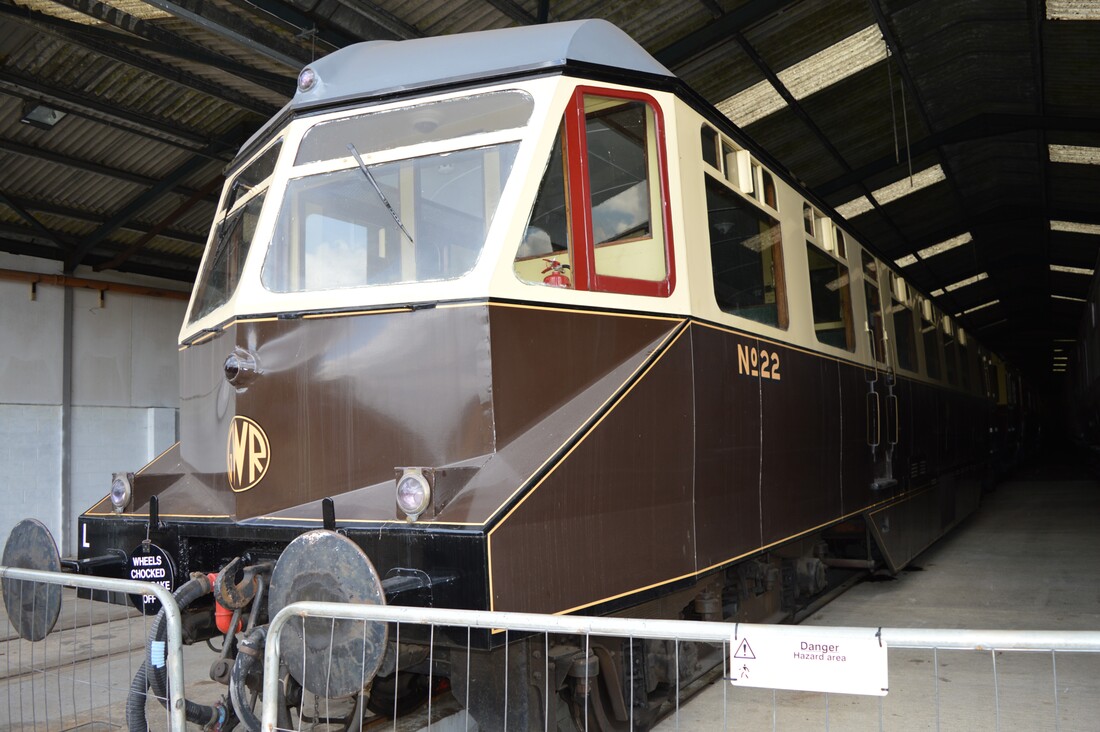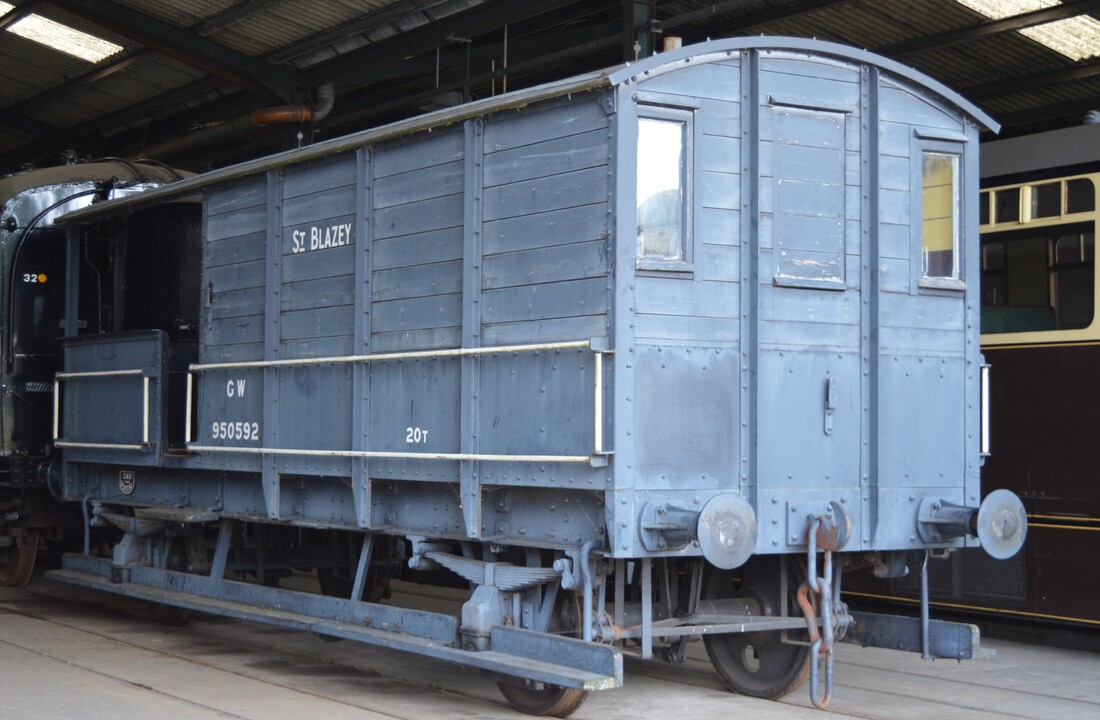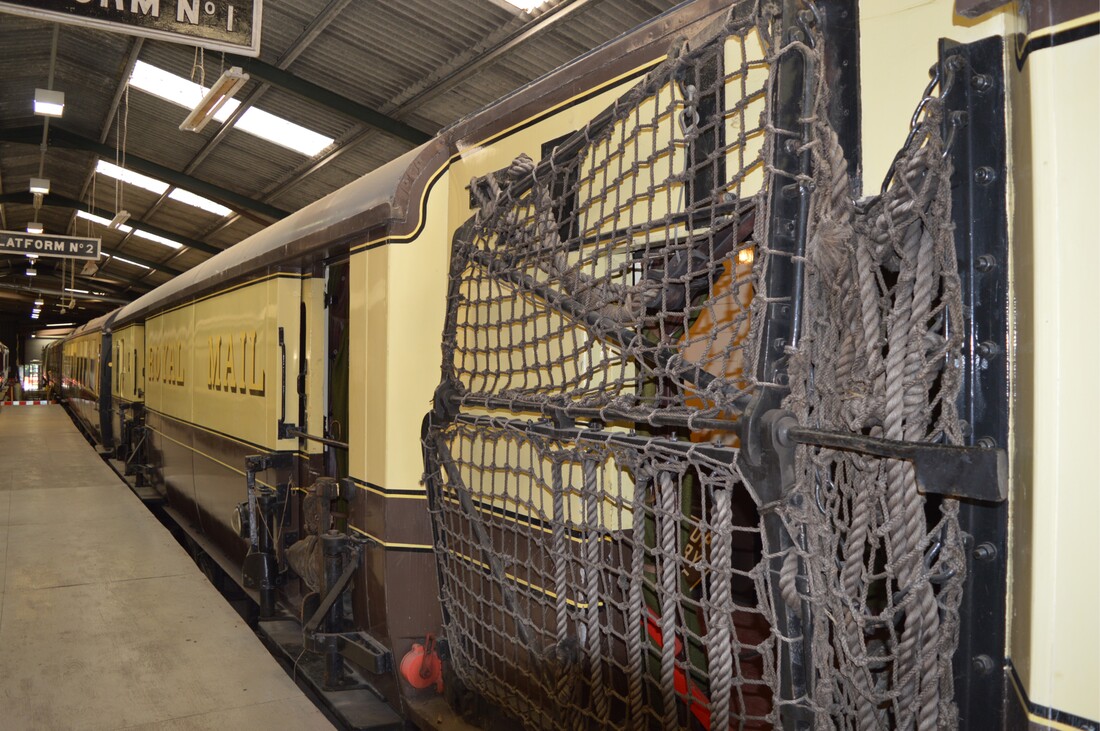Didcot to Oxford also
Didcot Great Western Society
Didcot 57.25 miles from Paddington
Didcot Parkway in 2022 - Driver Alan Peters
Appleford Halt 55.25 miles from Paddington
Try this link for more information https://en.wikipedia.org/wiki/Appleford_railway_station
Culham 56.25 miles from Paddington
For much much more information there is an excellent site on Culham Station please use this link Culham Station - highly recommenced. Masses of information, history, tour around the station etc etc.
Mike Roach Focuses on Culham on 30th January1965
- the end of the steam era - his collection
- the end of the steam era - his collection
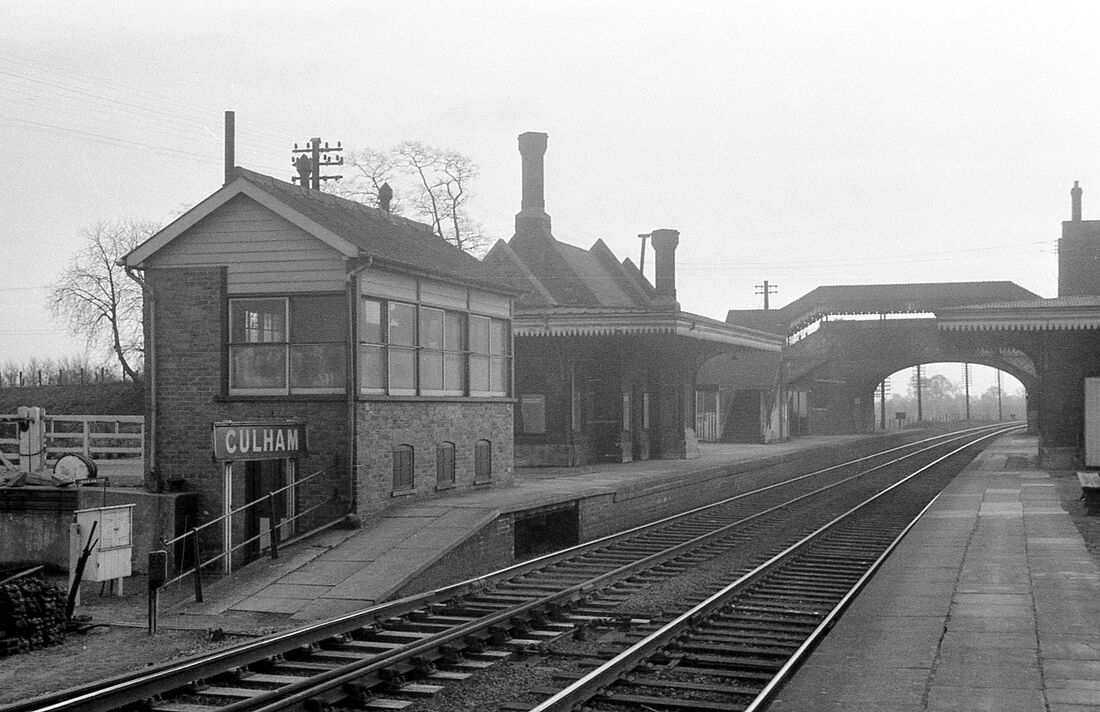
Culham - looking south. beyond the footbridge is station road bridge. 30th January 1965 Copyright Mike Roach. N.B. Due to the station building being too close to the up line and the platform being too low and new platform was constructed north of this location and the station building and the signalbox demolished. This view on the 30th January 1965. Copyright Mike Roach.
The last State Funeral
The 30th January 1965 was also the occasion of a very important State Funeral the last one - that of Sir Winston Churchill. Fortunately for us Mike Roach had made the 200 or so mile journey up to the Culham area.
The 30th January 1965 was also the occasion of a very important State Funeral the last one - that of Sir Winston Churchill. Fortunately for us Mike Roach had made the 200 or so mile journey up to the Culham area.
It was Winston Churchill's Funeral on 30 January 1965. Here are 3 photos of the train taken from 2 negatives. The location is just north of Culham midway between the Station and the bridge across the River Thames. It was a dull miserable day and not a bit conducive to photography, but I had to take it having travelled a couple of hundred miles to do it.
The coffin was in the second vehicle which was a wooden bodied parcels van.
Regards, Mike
The coffin was in the second vehicle which was a wooden bodied parcels van.
Regards, Mike
On 24 January 1965, Winston Churchill died. At his state funeral on 30 January 1965 a special train hauled by 34051 Winston Churchill was been laid on to take the family to Hanborough (This was the closest station to the parish church of Bladon where Churchill’s body was to be interred. The Church was only about one and a quarter miles from the station), The station is about seven miles north-west of Oxford. Hanborough station was closed to passengers on the 20th September 1965.
Fortunately for us Mike Roach had made the 200 or so mile journey from Plymouth up to the Culham area.
The coffin was in the second vehicle which was a wooden bodied parcels van.
Regards, Mike
Fortunately for us Mike Roach had made the 200 or so mile journey from Plymouth up to the Culham area.
The coffin was in the second vehicle which was a wooden bodied parcels van.
Regards, Mike
Highly recommended :- There is an excellent piece on Sir Winston Churchill's Funeral train on the National Railway Museum site = please click here https://www.railwaymuseum.org.uk/what-was-on/churchills-final-journey
34051 2C151 was built at Brighton and entered traffic in December 1946. It was withdrawn from active service in September 1965 and later given a place at the National Railway Museum York,
Many thanks Mike.
Roger Winnen visits Culham in 1983/5 - his collection
Many thanks Roger.
Radley 58.5miles from Paddington
Radley railway station serves the villages of Radley and Lower Radley and the town of Abingdon.
It is on the Cherwell Valley Line between Didcot Parkway and Banbury 58 miles 35 chains measured from London Paddington.
History The station was built primarily for the boys of Radley College. It was formerly a junction station for a now-dismantled branch to the adjacent town of Abingdon. Opened in 1873 by the GWR , it replaced the original interchange. Abingdon Junction which had opened in 1856. The branch line was extended north to terminate in a bay platform at the new station.The station was renovated during 2008, with a new footbridge, shelters, a new car park and increased cycle storage.In recent years passenger traffic at Radley has grown rapidly. In the five years 2005–10 the number of passengers using the station increased by 38%.
The above information courtesy of Wikipedia.
The terminus of the Abingdon branch at Abingdon was approximately one and three quarter miles from Radley station.
It is on the Cherwell Valley Line between Didcot Parkway and Banbury 58 miles 35 chains measured from London Paddington.
History The station was built primarily for the boys of Radley College. It was formerly a junction station for a now-dismantled branch to the adjacent town of Abingdon. Opened in 1873 by the GWR , it replaced the original interchange. Abingdon Junction which had opened in 1856. The branch line was extended north to terminate in a bay platform at the new station.The station was renovated during 2008, with a new footbridge, shelters, a new car park and increased cycle storage.In recent years passenger traffic at Radley has grown rapidly. In the five years 2005–10 the number of passengers using the station increased by 38%.
The above information courtesy of Wikipedia.
The terminus of the Abingdon branch at Abingdon was approximately one and three quarter miles from Radley station.
For more information try this link en.wikipedia.org/wiki/Radley_railway_station
Mike Roach made good use of his camera on the 30th January 1985 - these views was taken after the Sir Winston Churchill Funeral train had passed through;
Kennington Junction Approximately 60.75 miles from Paddington.
This was a junction for the Thame line which closed to passengers on the 7th January 1963 and to goods 10th October 1966.
Hinksley Road sidings
Oxford 63.5 miles from Paddington
For more information please use this link https://en.wikipedia.org/wiki/Oxford_railway_station
Ron writes re the picture below - The ONLY time I ever saw a train on these running lines.
Sunday 28th January 1990
47530 crawls at it crosses from the up through line onto the by now very rarely used 2nd Loop line, with a train of empty ballast wagons.
Both traincrew keep a close eye on proceedings.
The area to the right used to be a rail served scrap yard that rarely saw any wagons by 1990.
Not really surprising the whole area has been radically cleaned in the years that followed....
Sunday 28th January 1990
47530 crawls at it crosses from the up through line onto the by now very rarely used 2nd Loop line, with a train of empty ballast wagons.
Both traincrew keep a close eye on proceedings.
The area to the right used to be a rail served scrap yard that rarely saw any wagons by 1990.
Not really surprising the whole area has been radically cleaned in the years that followed....
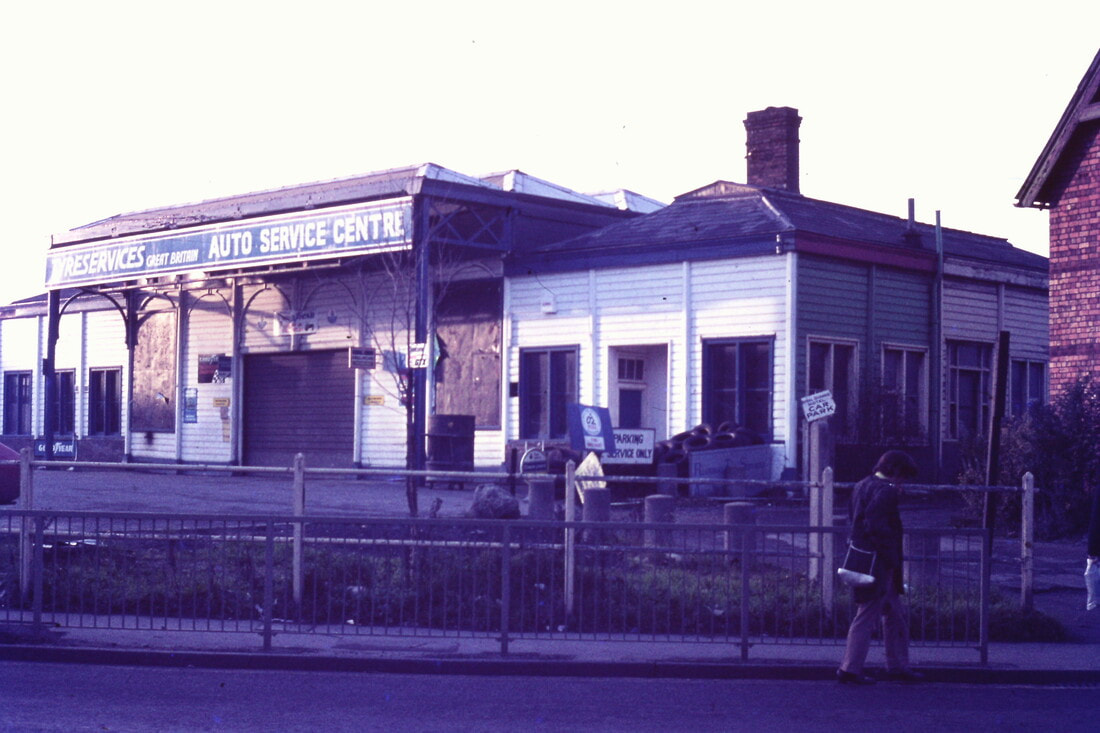
761127zg Oxford Rewley Road Station was part of the London- North Western Railway. Until 1951 Services ran from here to Bicester, Bletchley, Bedford and Cambridge before being relocated to the present Oxford Station. until closure in 1967. From 1987 the line reopened to passenger services from the present Oxford Station to Bicester with one intermediate station at Islip. In recent years Chiltern Railways began running a service to London Marylebone Copyright
Roger Winnen
The ever roving Roger now takes a short trip north east of Oxford.
Also in connection with it being the destination for Sir Winston Churchills funeral train on the 30th January 1965 we also include the follwing pictures taken by Guy Vincent
All pictures dated 9th December 2013 and all copyright Guy Vincent. Many thanks Guy.
Further to the recent Han(d)borough feature there are some very interesting items online concerning the arrangements for Churchill's funeral train. For two particular favourites search: 'Nine Elms Locomotive Shed - Winston Churchill Funeral Train' and 'Pullman Car Services - Pullman Car History'. The first is a well illustrated account of the day's proceedings written by the fireman who worked 34051 from Waterloo to Hanborough and then took the loco light to Oxford MPD. For the convenience of the funeral party a facing crossover * was installed east of the station so the train was able to arrive at the 'Up' platform from where a waiting motor hearse conveyed the late wartime leader the last mile and a quarter to Bladon churchyard (* imagine THAT being allowed today!). To return the funeral party to London Paddington station, Golden Ochre liveried D1015 Western Champion was provided and the train departed Hanborough at 1620. As a precaution D1028 Western Hussar was kept on standby duty at Reading but thankfully its services were not required.
The second item includes full details of the stock used and copies of the train running arrangements for the day. The stock consisted of 'Car No 208', PMV S2464 'Carina', 'Lydia', 'Perseus', 'Isle of Thanet'. PMV S2464 was repatriated from the USA and restored in time for the 50th anniversary of the funeral. It was displayed at the NRM York in 2015 along with loco 34051 and Pullman Car 'Lydia' which was the carriage used by Churchill's family. Perseus is still in use as part of the Belmond British Pullman; on 28th February 2005 it formed part of a special charter 'The Staite Pullman' hauled appropriately by D1015 resplendent in Golden Ochre and captured passing Berkley Marsh near Frome. See Picture above.
Final point: Why the missing D in Handborough these days??
Guy Vincent
The second item includes full details of the stock used and copies of the train running arrangements for the day. The stock consisted of 'Car No 208', PMV S2464 'Carina', 'Lydia', 'Perseus', 'Isle of Thanet'. PMV S2464 was repatriated from the USA and restored in time for the 50th anniversary of the funeral. It was displayed at the NRM York in 2015 along with loco 34051 and Pullman Car 'Lydia' which was the carriage used by Churchill's family. Perseus is still in use as part of the Belmond British Pullman; on 28th February 2005 it formed part of a special charter 'The Staite Pullman' hauled appropriately by D1015 resplendent in Golden Ochre and captured passing Berkley Marsh near Frome. See Picture above.
Final point: Why the missing D in Handborough these days??
Guy Vincent
The Winston Churchill Funeral Train
The return ECS
David Harvey
The return ECS
David Harvey
Many thanks to you David for your picture of this unique occasion.
Didcot Great Western Society
Didcot Railway Centre is a former GWR engine-shed and locomotive stabling point located at Didcot in Oxfordshire, which today has been converted into a railway museum and preservation engineering site.
Background[edit]The founders and commercial backers of the GWR supported Isambard Kingdom Brunel' scheme to develop an integrated railway and steam-ship service which allowed trans - Atlantic passengers and freight quicker passage to and from London to New York City. However, whilst backing the scheme the railway had to make a profit, and so it took a number of detours and added both mainline and branchline traffic to increase its domestic earnings. This earned the railway the nickname The Great Way Round from its detractors.
Whilst the route from Lodon Paddington to Reading was relatively straight, the then obvious most direct route to Bristol would have taken the railway further south, thus avoiding both Didcot and Swindon. However, passenger and freight traffic both to and from Oxford and onwards to the West Midlands in part dictated a more northerly route. Secondly Brunel had originally planned to cut through Savernake Forest near Marlborough, Wiltshire to Bristol, but the Marquess of Ailesbury, who owned the land, objected - having previously objected to part of the Kennet and Avon Canal running through his estate (see Bruce tunnel). With the railway needing to run near to a canal at its midpoint - as it was cheaper to transport coal for trains along canals at this time - and with need for the branch northwards to Cheltenham via Stroud, Swindon was the next logical choice for the junction (and later railway works), 20 miles (32 km) north of the original route. This dictated that the Oxford junction also be moved northwards, and hence via Didcot. The Great Western Railway built the first rail line through Didcot in 1839 and opened its first station in 1844.
Construction
Didcot Railway Centre, Oct 2001
Due to the technical operational difficulties of running and maintaining a mainline service from London to Bristol, as well as the need for servicing locomotives going to Oxford, Didcot became an obvious midpoint maintenance and stabling point. Having built a timber framed broad gauge shed on the original site during the railways development west in the 1800s, in June 1932 a new steel-framed half-brick 4-road through shed (210 by 67 feet, was completed by the GWR under the Loans and Guarantees Act (1929). With shed code DID, it also included a repair shop (84 by 42 feet, coaling stage (43 by 36 feet, sand furnace, 10 by 10 feet and 65 ft turntable plus associated offices (210 by 15 feet). During World War 11, a standard steel-framed with corrugated iron-panel covered ash shelter was erected.
Operations After World War II, the site remained virtually unchanged during the nationalised ownership of B.R. , but for taking on the new code of 81E. The standard allocation of locomotives remained the same, with Halls, Dukedogs and Panniers making up the bulk of the depot's fleet.
Closure. With the replacement of steam with diesel traction under the Moderernisation plan, the shed became redundant and was closed in June 1965. All of the above is very much above courtesy of Wikipedia)
Background[edit]The founders and commercial backers of the GWR supported Isambard Kingdom Brunel' scheme to develop an integrated railway and steam-ship service which allowed trans - Atlantic passengers and freight quicker passage to and from London to New York City. However, whilst backing the scheme the railway had to make a profit, and so it took a number of detours and added both mainline and branchline traffic to increase its domestic earnings. This earned the railway the nickname The Great Way Round from its detractors.
Whilst the route from Lodon Paddington to Reading was relatively straight, the then obvious most direct route to Bristol would have taken the railway further south, thus avoiding both Didcot and Swindon. However, passenger and freight traffic both to and from Oxford and onwards to the West Midlands in part dictated a more northerly route. Secondly Brunel had originally planned to cut through Savernake Forest near Marlborough, Wiltshire to Bristol, but the Marquess of Ailesbury, who owned the land, objected - having previously objected to part of the Kennet and Avon Canal running through his estate (see Bruce tunnel). With the railway needing to run near to a canal at its midpoint - as it was cheaper to transport coal for trains along canals at this time - and with need for the branch northwards to Cheltenham via Stroud, Swindon was the next logical choice for the junction (and later railway works), 20 miles (32 km) north of the original route. This dictated that the Oxford junction also be moved northwards, and hence via Didcot. The Great Western Railway built the first rail line through Didcot in 1839 and opened its first station in 1844.
Construction
Didcot Railway Centre, Oct 2001
Due to the technical operational difficulties of running and maintaining a mainline service from London to Bristol, as well as the need for servicing locomotives going to Oxford, Didcot became an obvious midpoint maintenance and stabling point. Having built a timber framed broad gauge shed on the original site during the railways development west in the 1800s, in June 1932 a new steel-framed half-brick 4-road through shed (210 by 67 feet, was completed by the GWR under the Loans and Guarantees Act (1929). With shed code DID, it also included a repair shop (84 by 42 feet, coaling stage (43 by 36 feet, sand furnace, 10 by 10 feet and 65 ft turntable plus associated offices (210 by 15 feet). During World War 11, a standard steel-framed with corrugated iron-panel covered ash shelter was erected.
Operations After World War II, the site remained virtually unchanged during the nationalised ownership of B.R. , but for taking on the new code of 81E. The standard allocation of locomotives remained the same, with Halls, Dukedogs and Panniers making up the bulk of the depot's fleet.
Closure. With the replacement of steam with diesel traction under the Moderernisation plan, the shed became redundant and was closed in June 1965. All of the above is very much above courtesy of Wikipedia)
Record of a visit by Ken Mumford to Didcot on the 18th August 2021
Friends,
A series of photos from yesterday
Kind regards and keep safe, Ken
[1] DL26 + maker's plate - not BR owned. Built 1957 To Didcot 1978
[2] Wagon turntable
[3] Steam railmotor and trailer
[4] 3822 - ex-GWR 2-8-0 freight ;loco
[5] Bridge plate
[6] Gas turbine 18000 - poor condition
[7] Traverser
[8] An original HST - W22
[9] St. Blazey guard's van
[10] Travelling Post Office carriage in GWR colours - net for catching mail and hooks for putting out mailbag to be collected by TPO lineside apparatus.
A series of photos from yesterday
Kind regards and keep safe, Ken
[1] DL26 + maker's plate - not BR owned. Built 1957 To Didcot 1978
[2] Wagon turntable
[3] Steam railmotor and trailer
[4] 3822 - ex-GWR 2-8-0 freight ;loco
[5] Bridge plate
[6] Gas turbine 18000 - poor condition
[7] Traverser
[8] An original HST - W22
[9] St. Blazey guard's van
[10] Travelling Post Office carriage in GWR colours - net for catching mail and hooks for putting out mailbag to be collected by TPO lineside apparatus.
Many thanks Ken.
